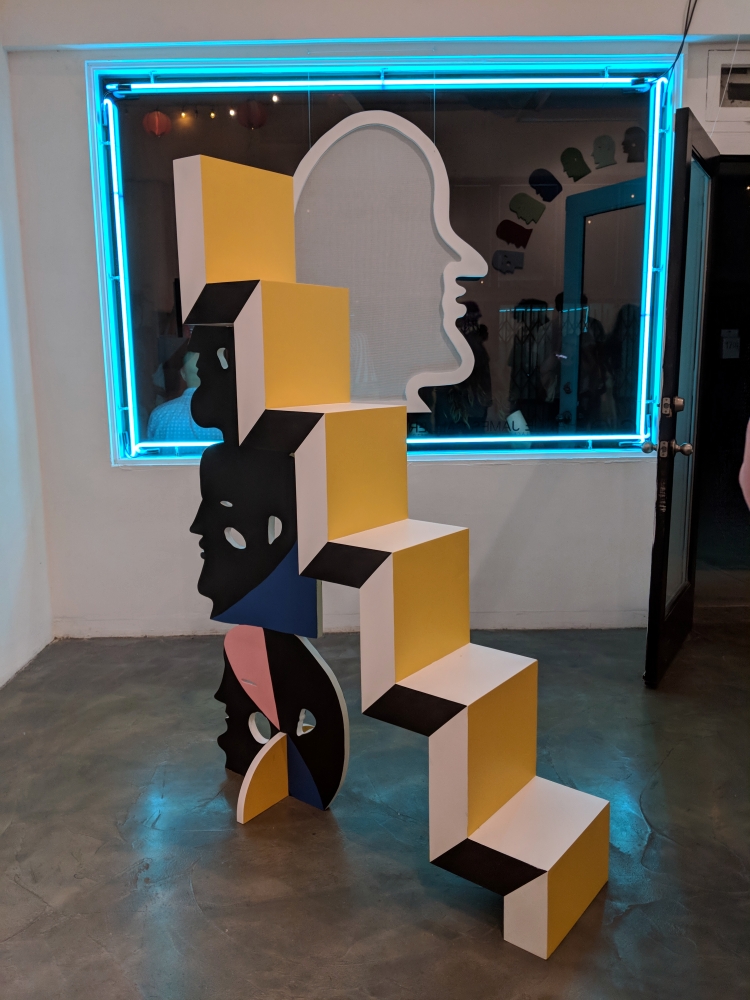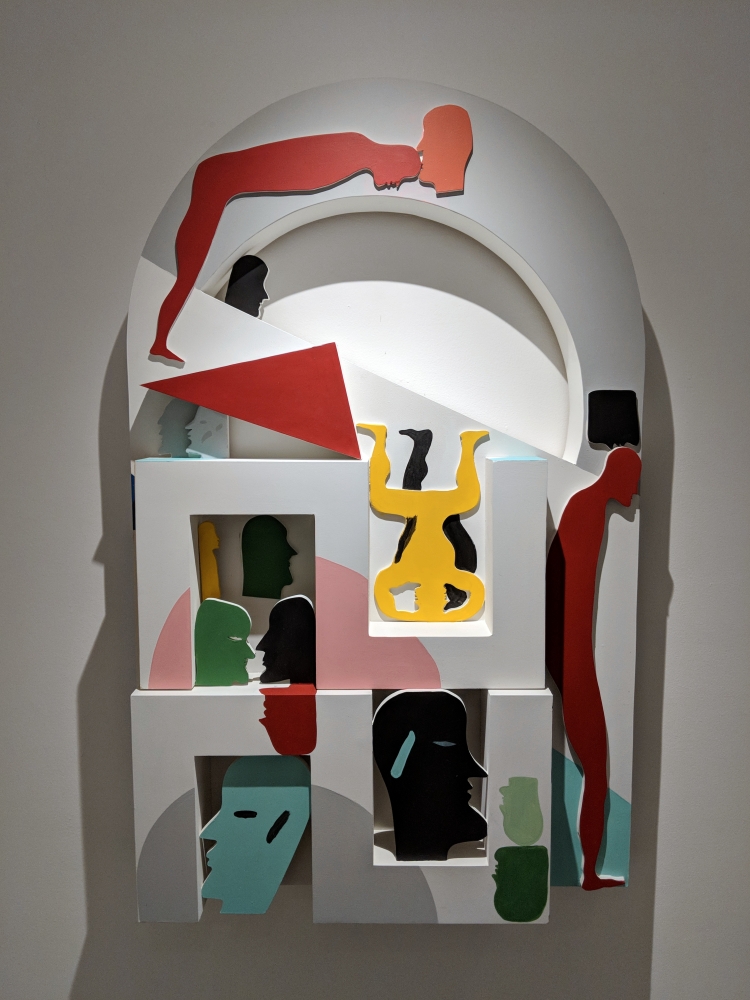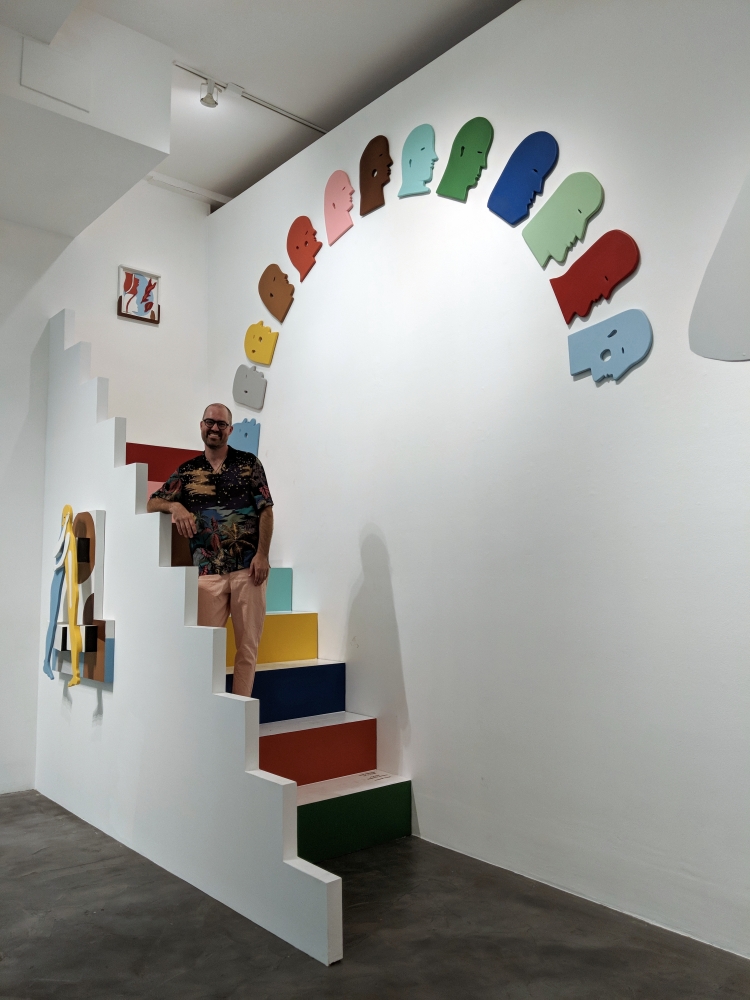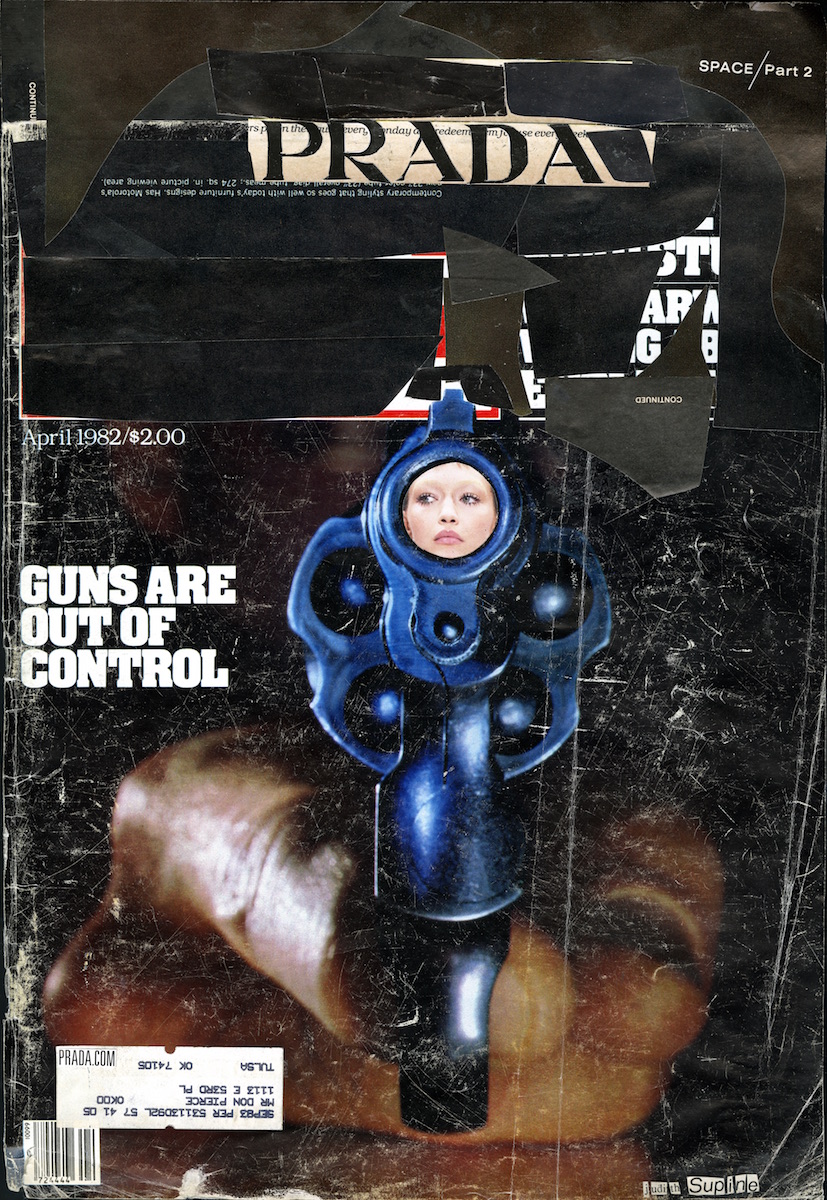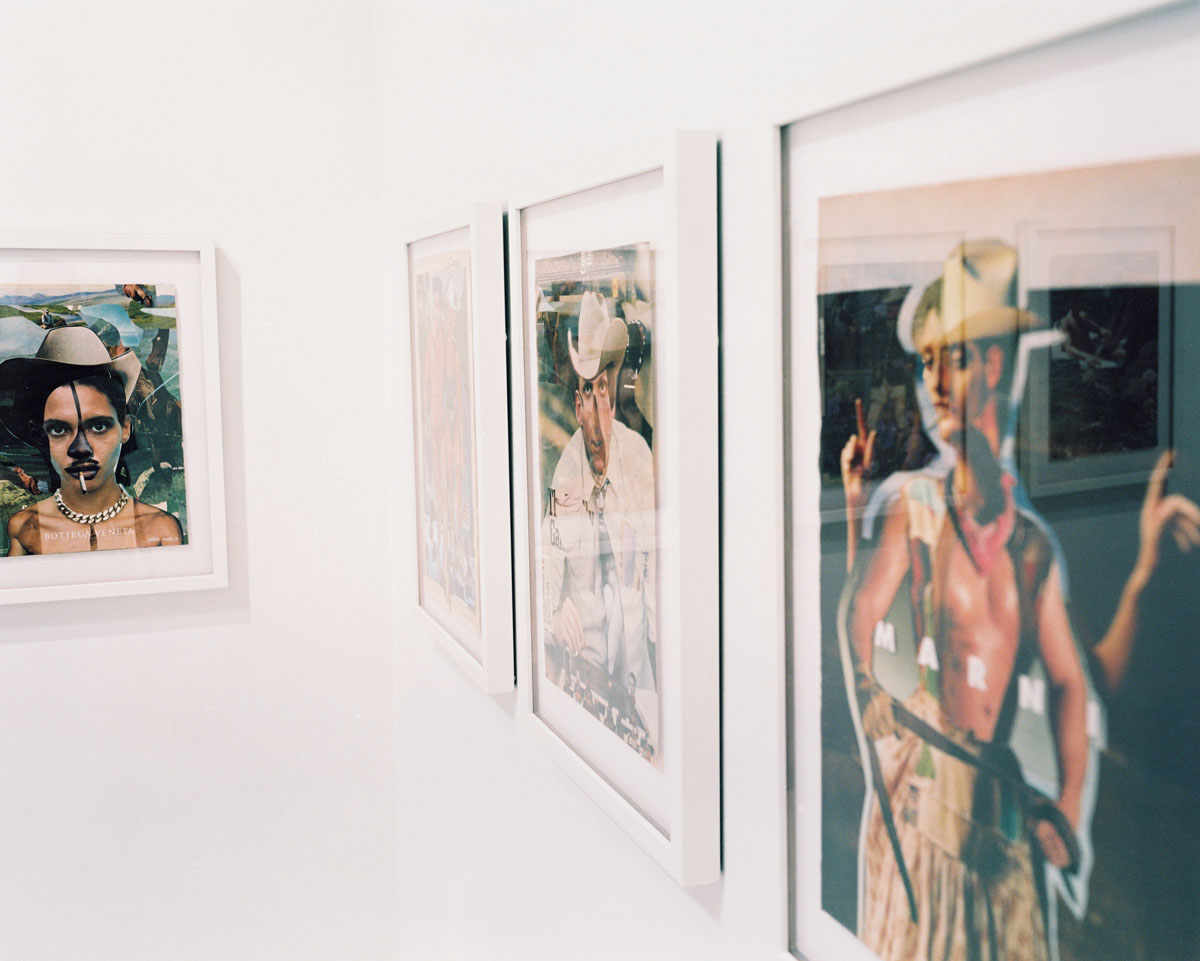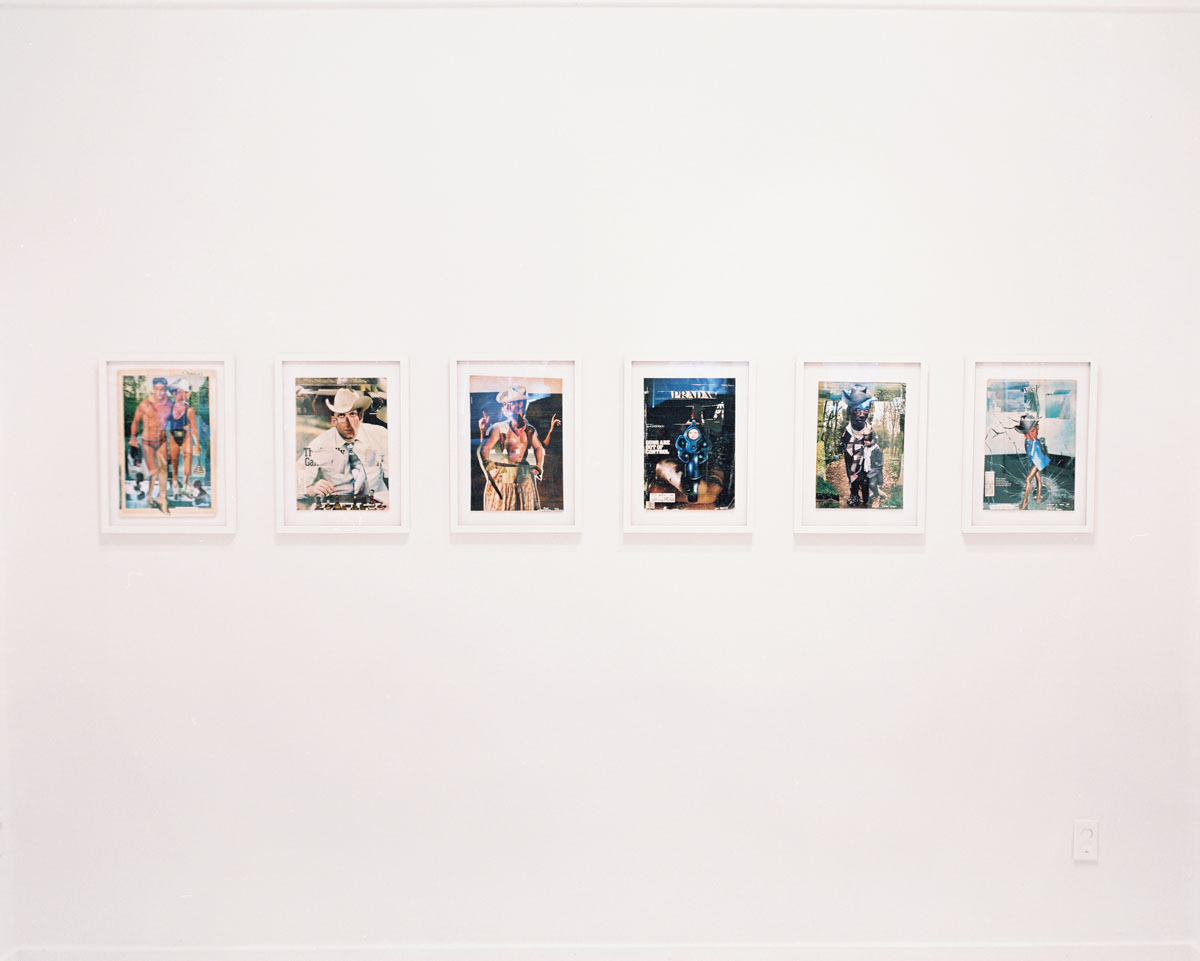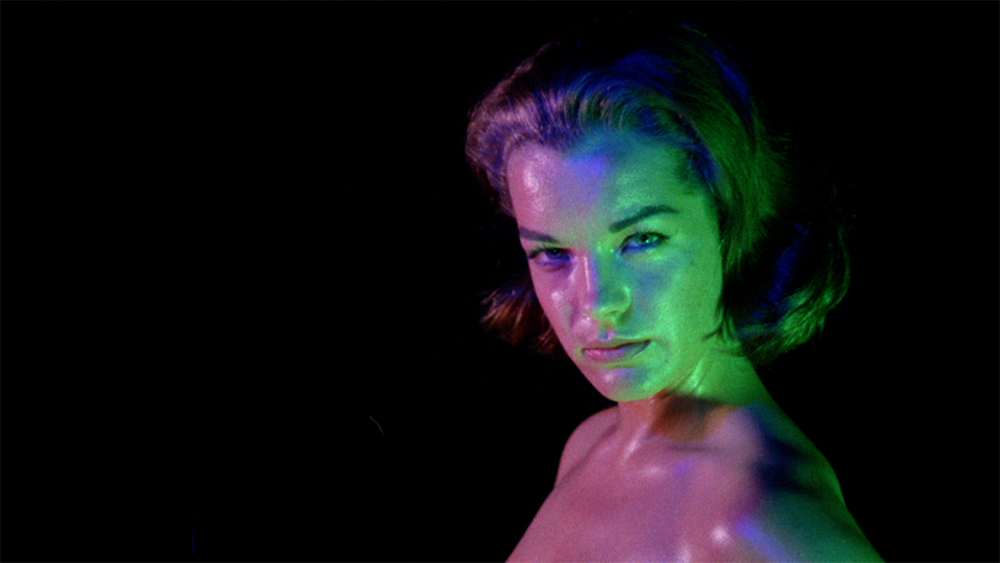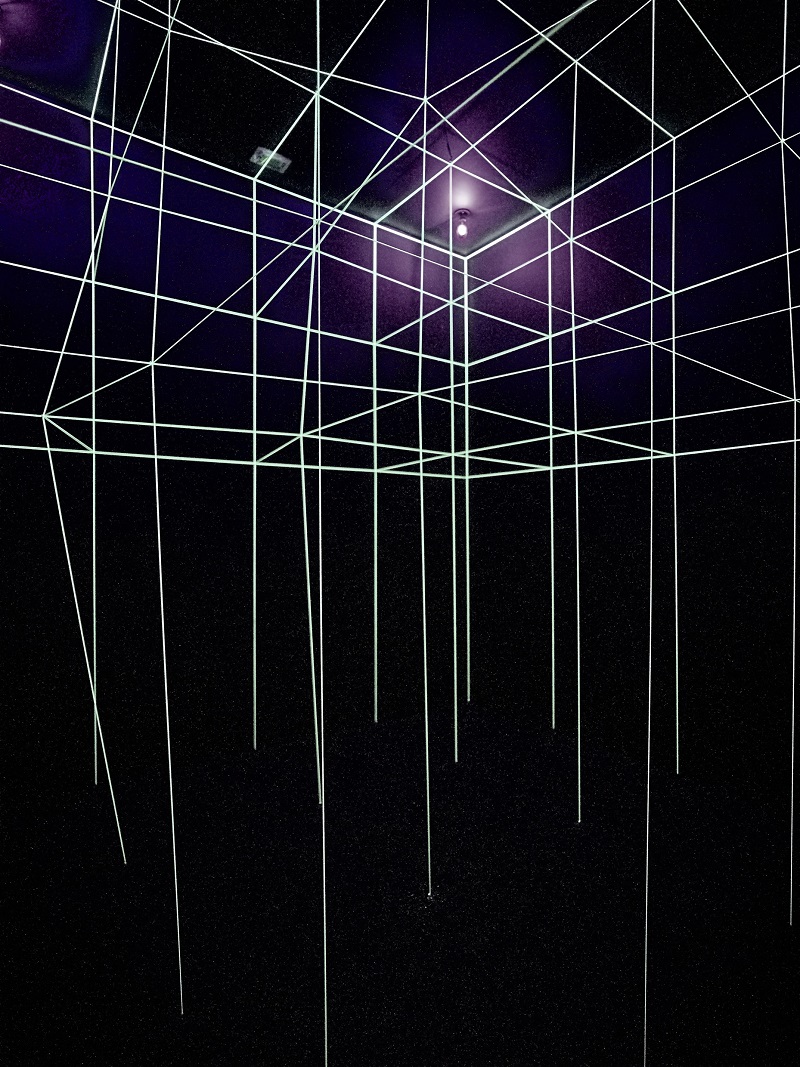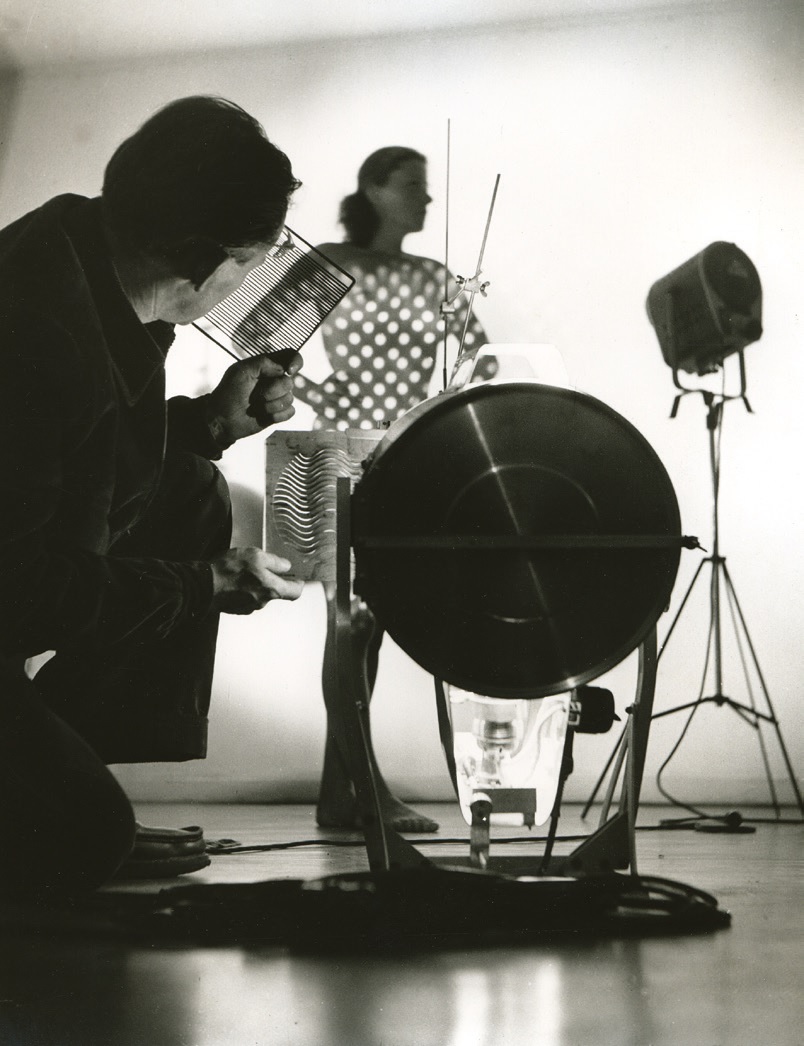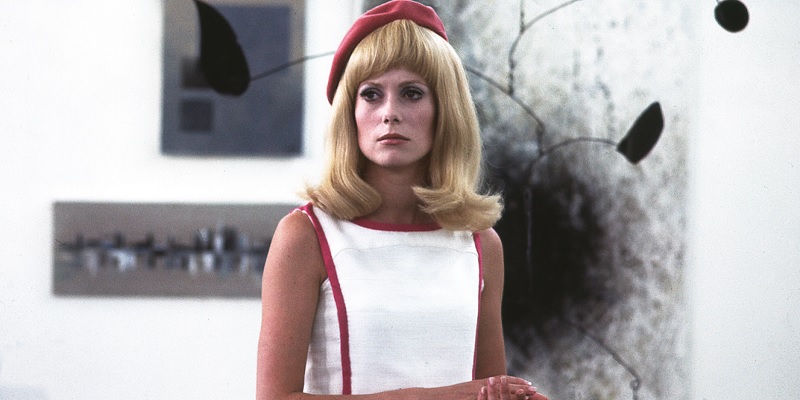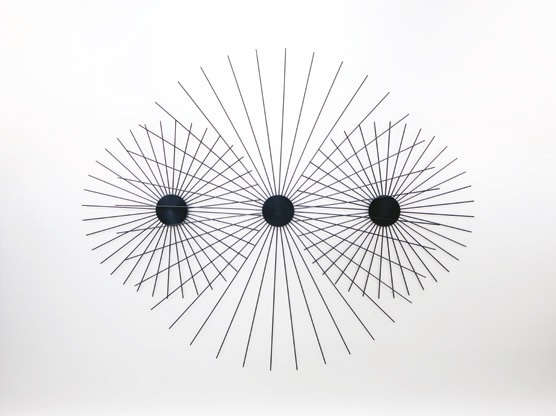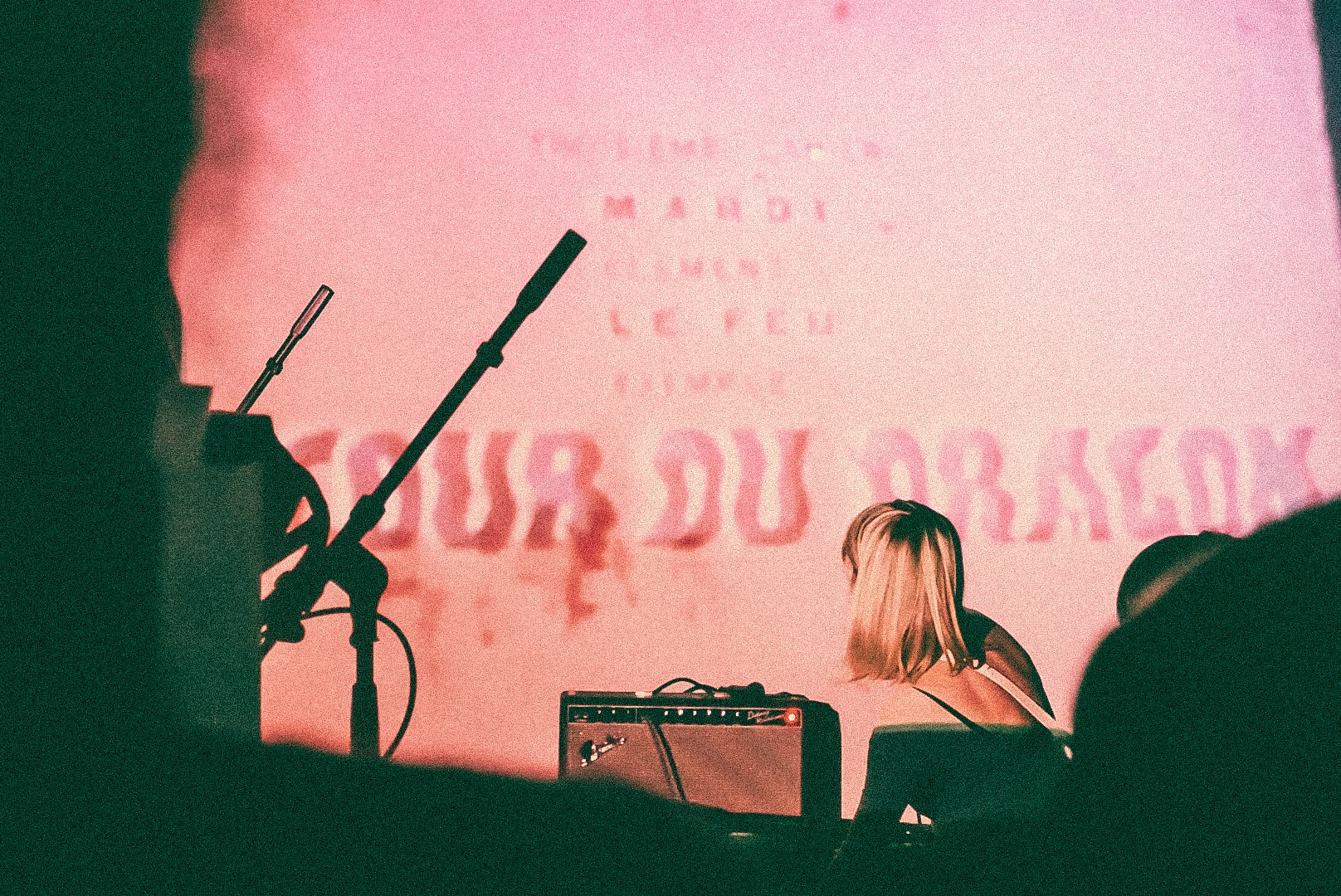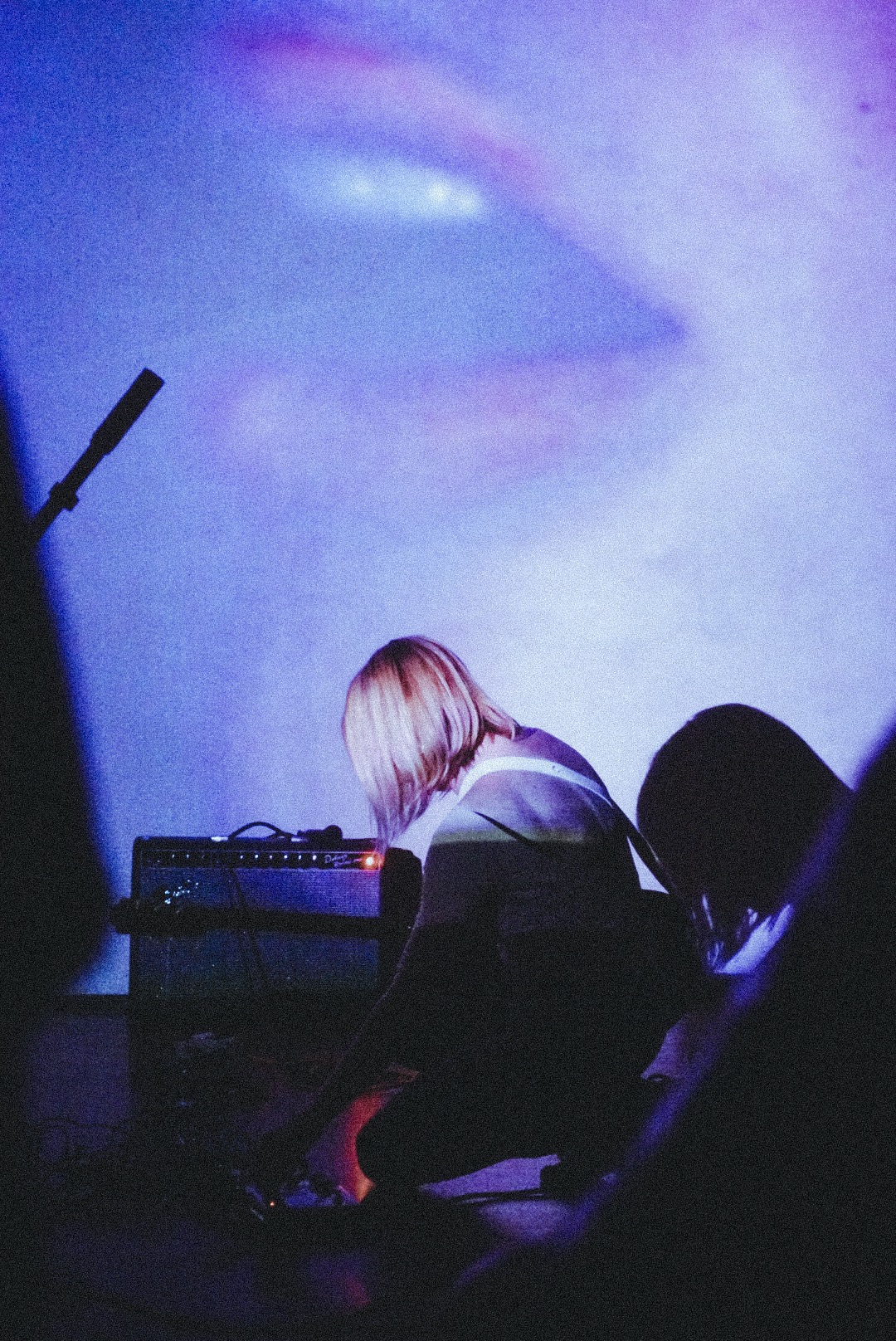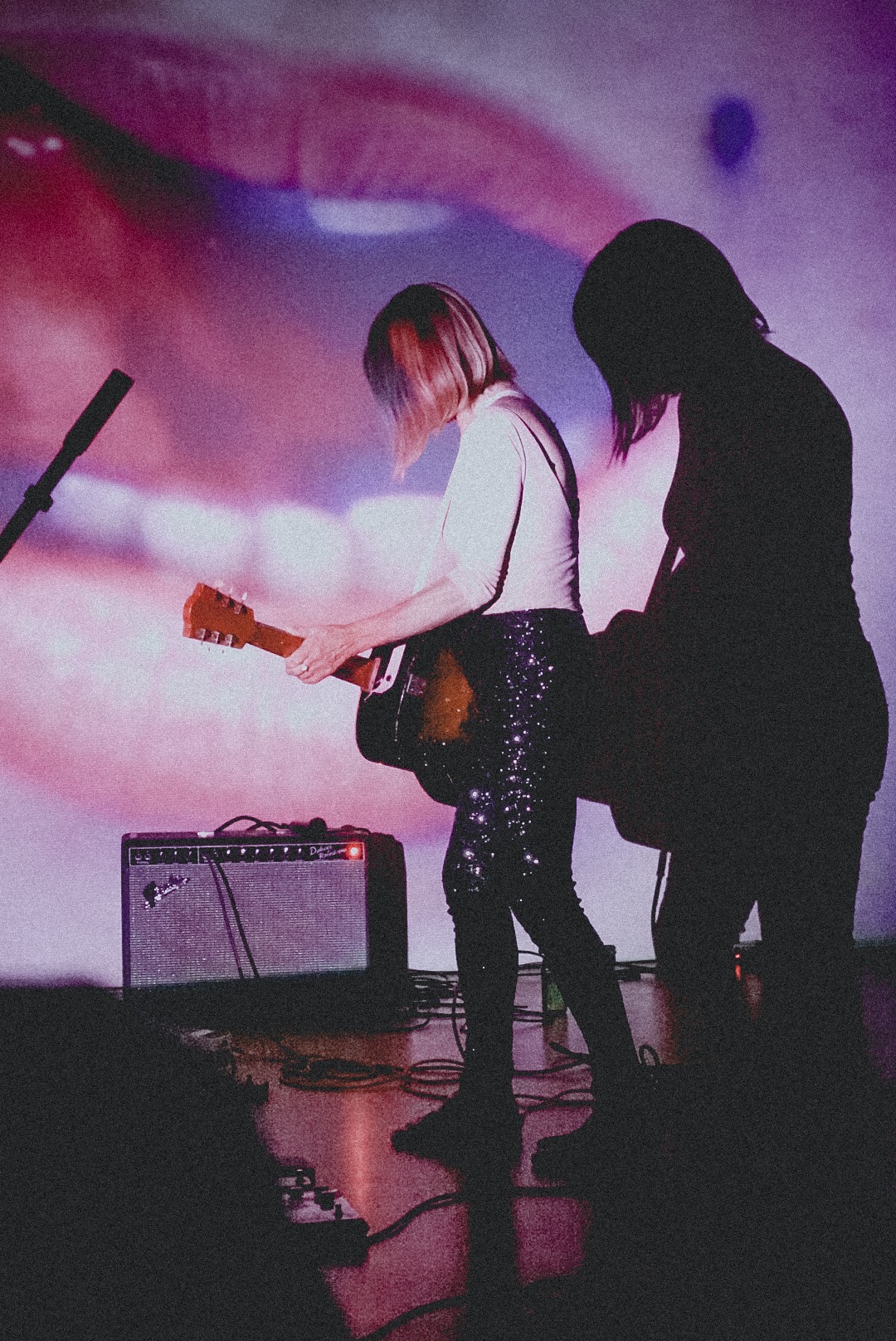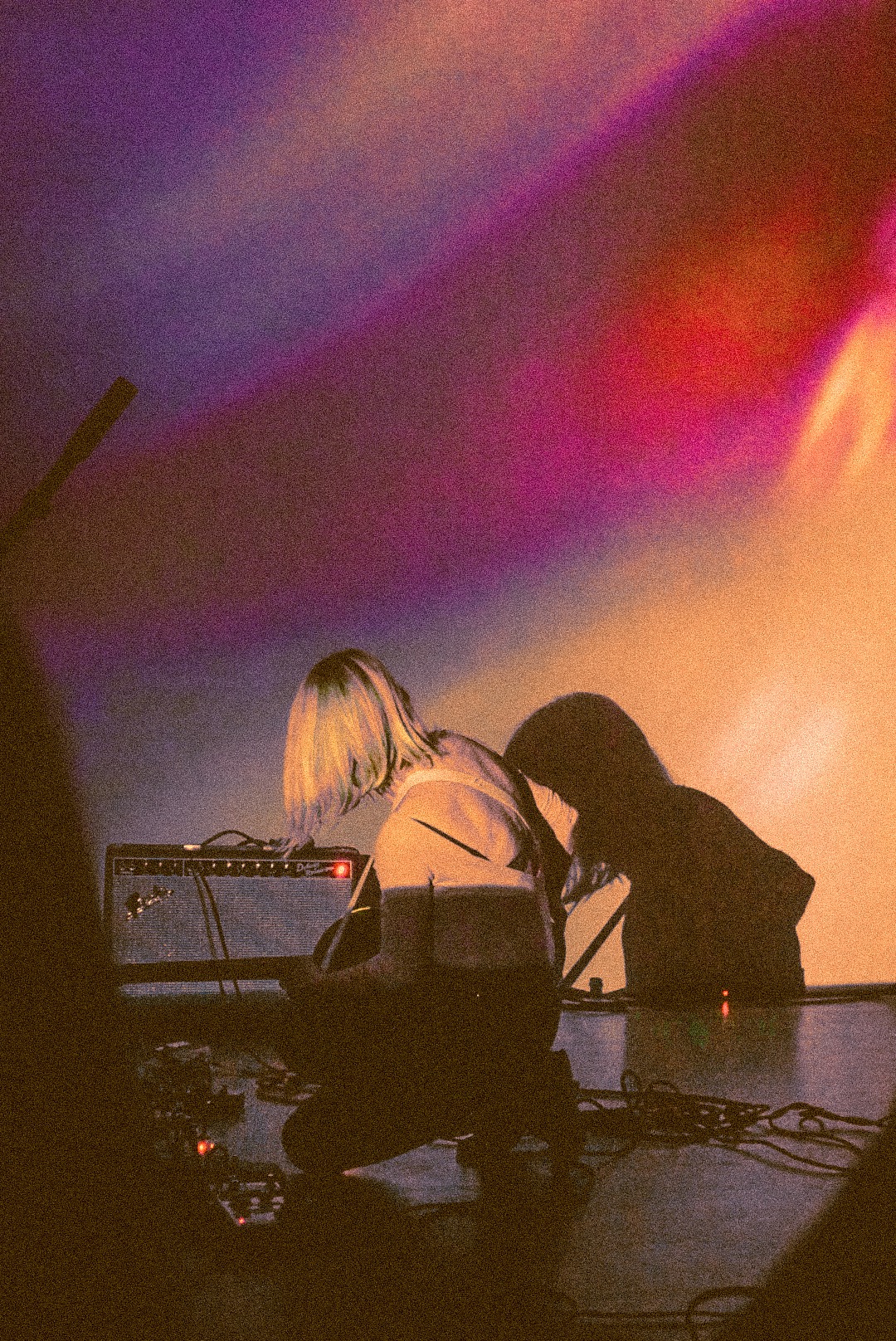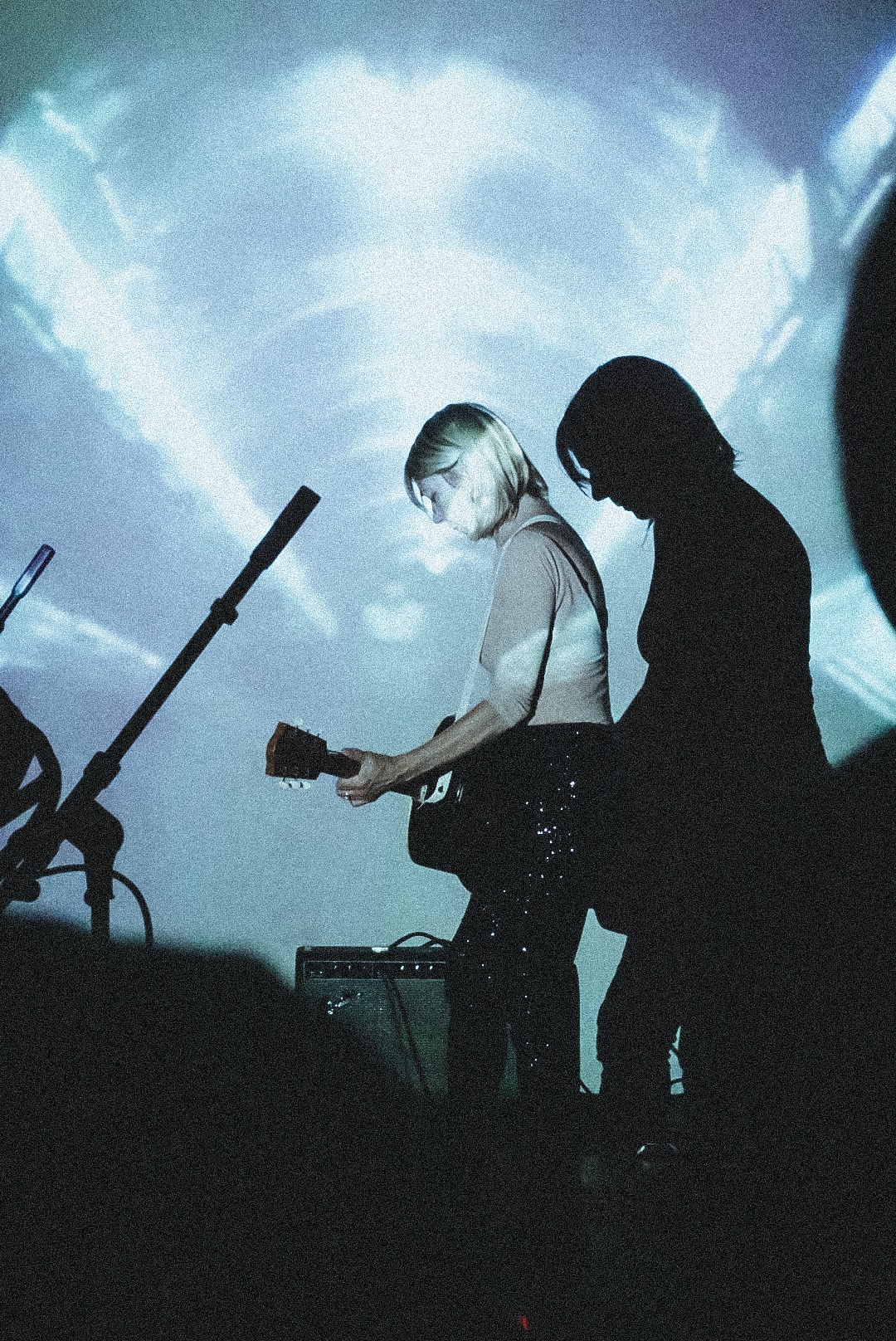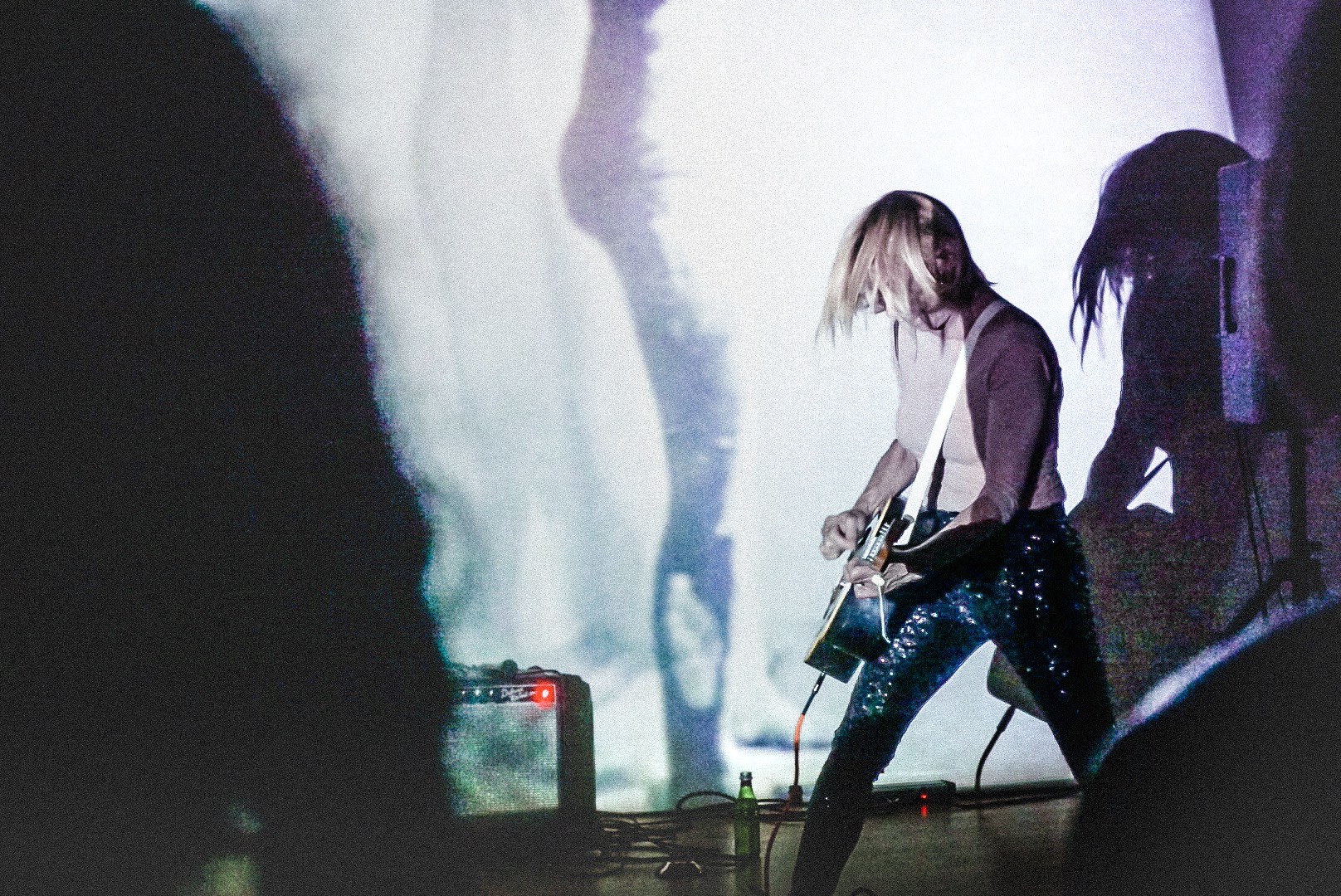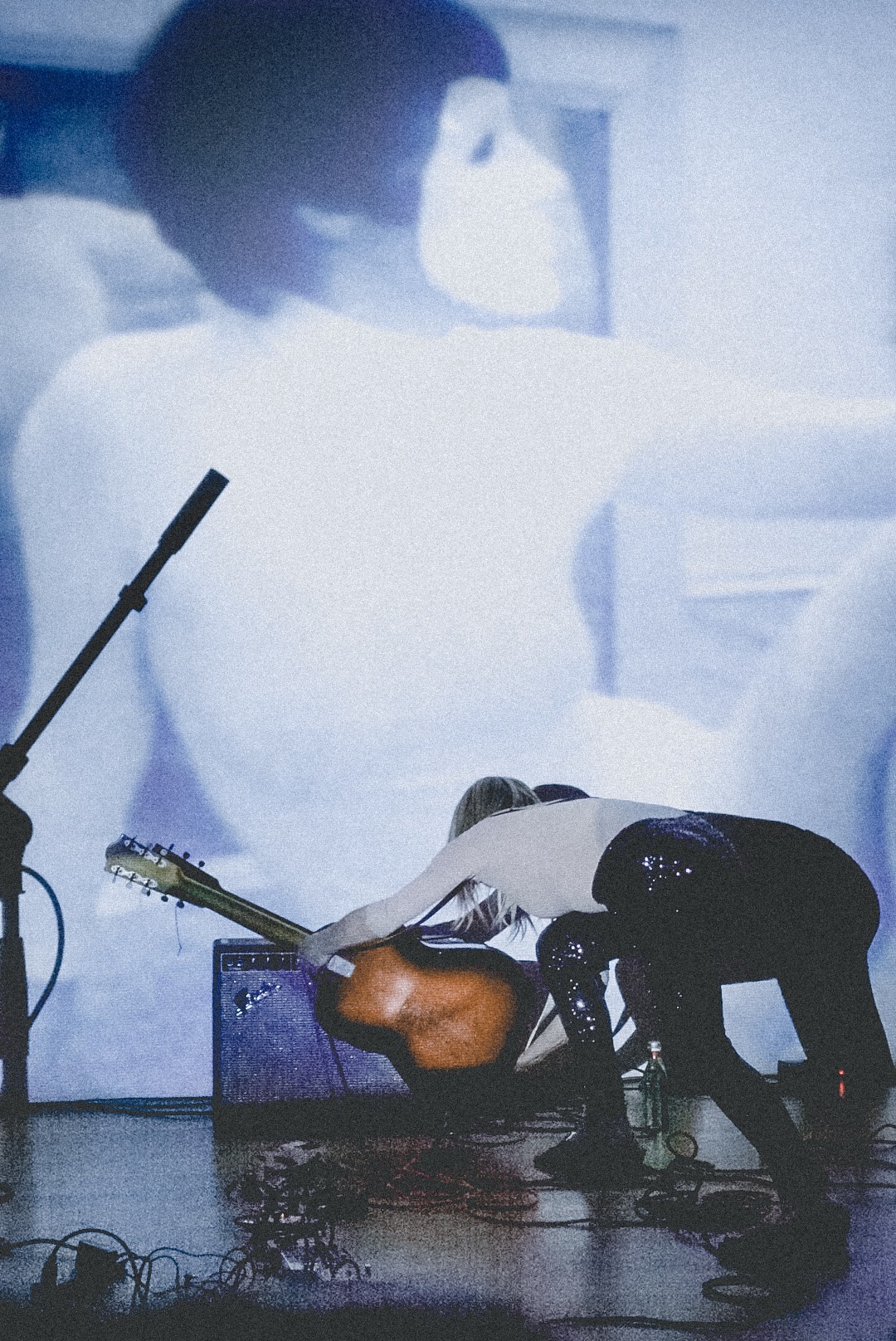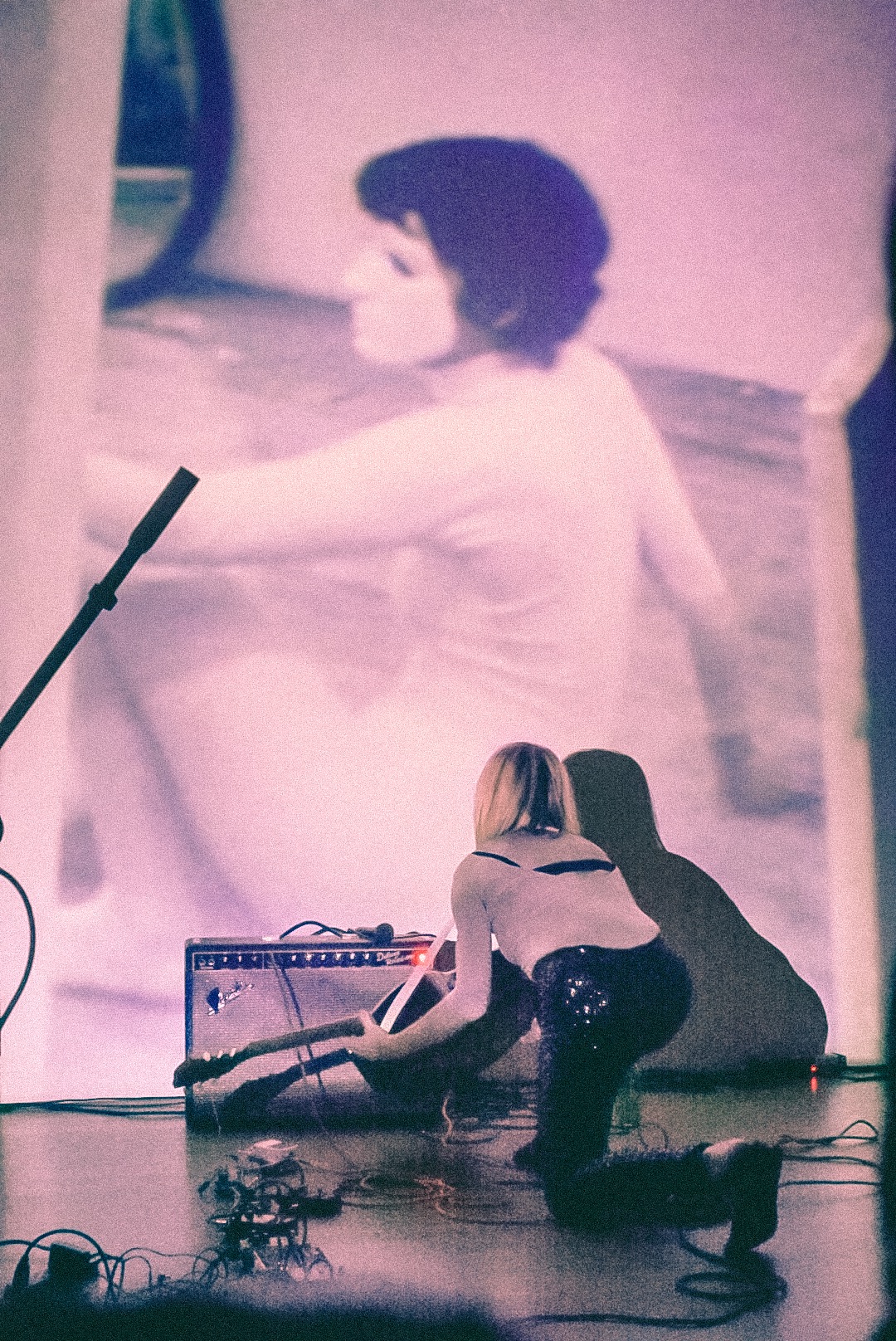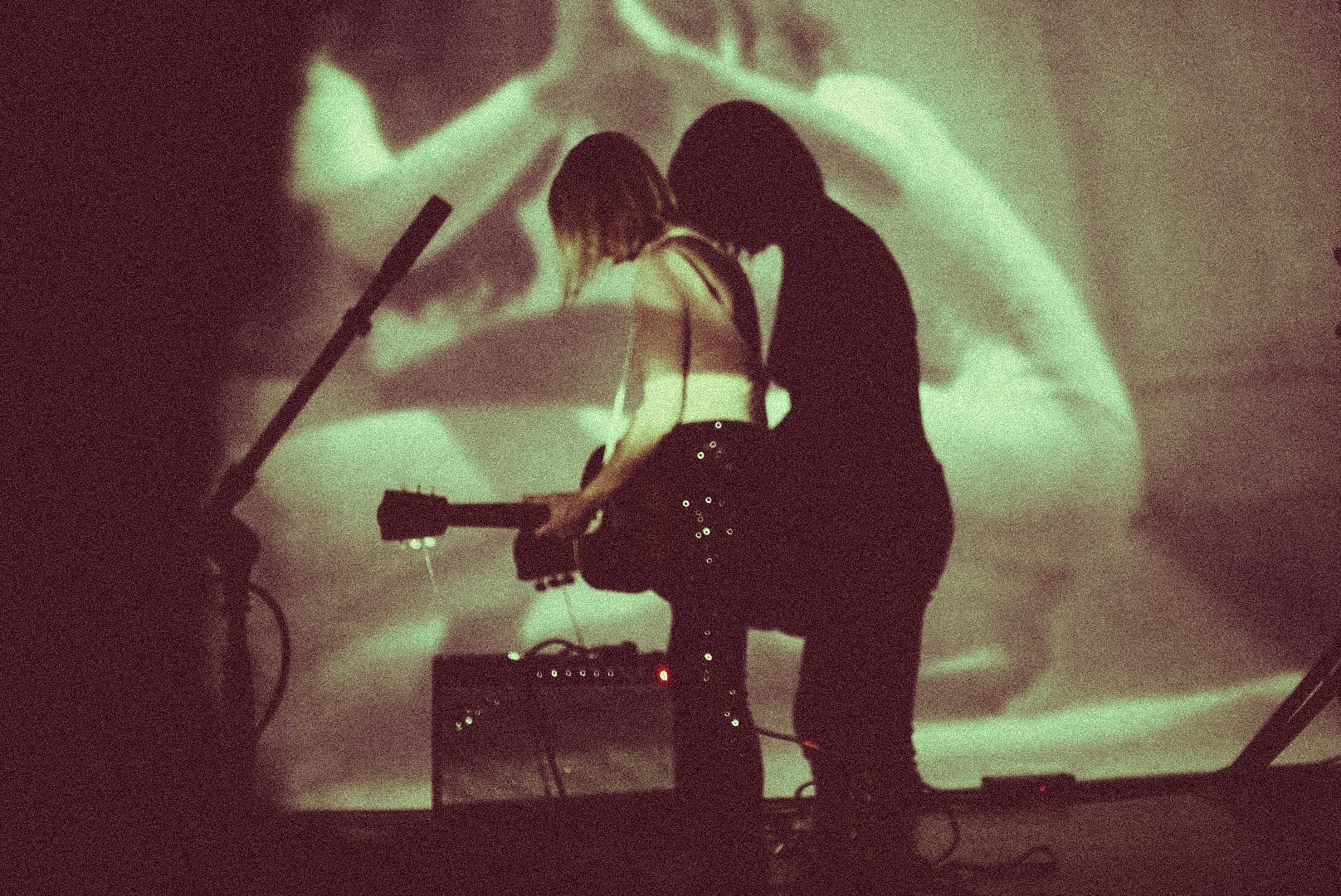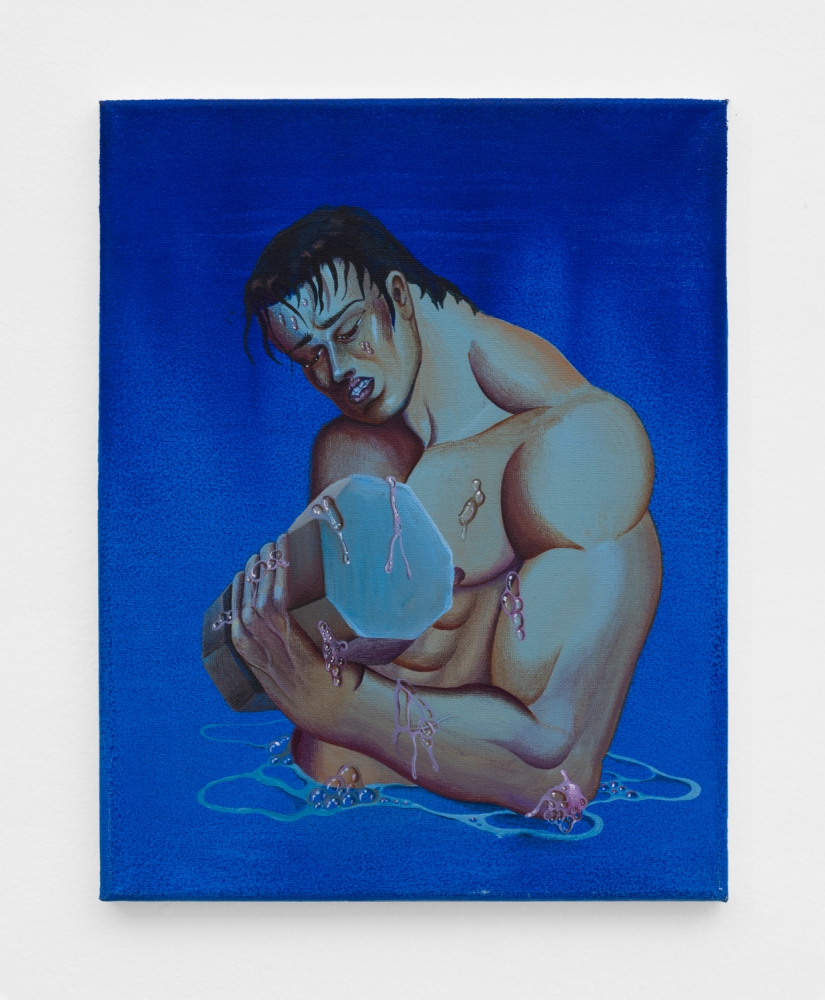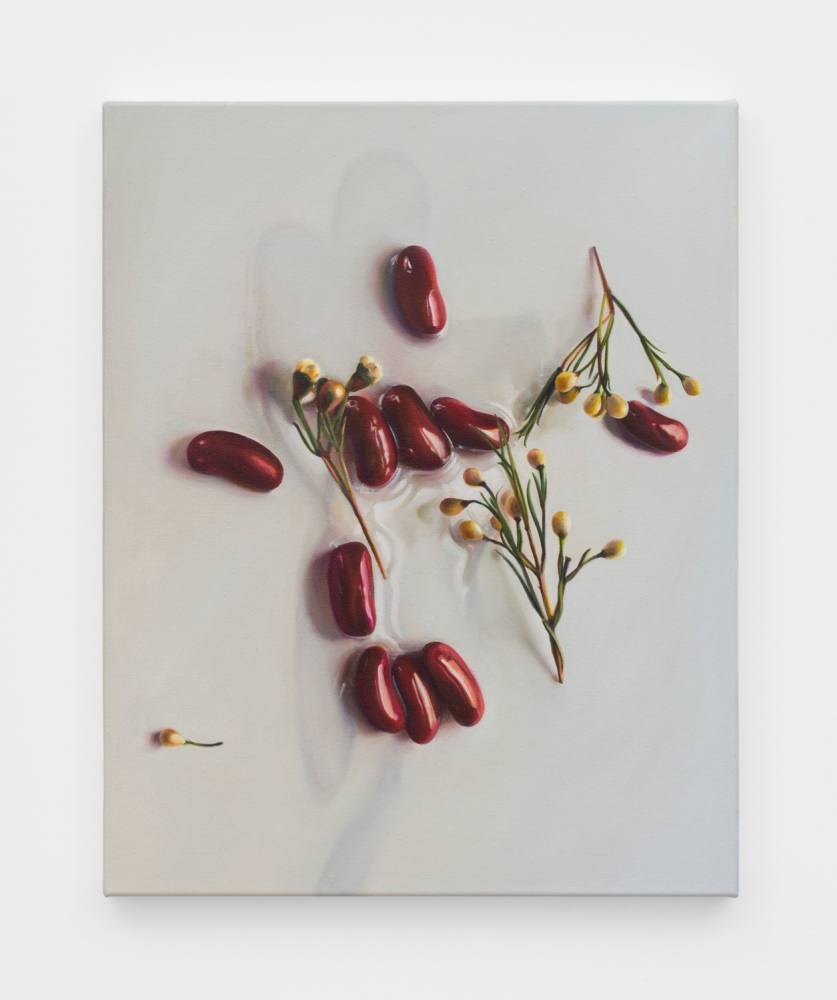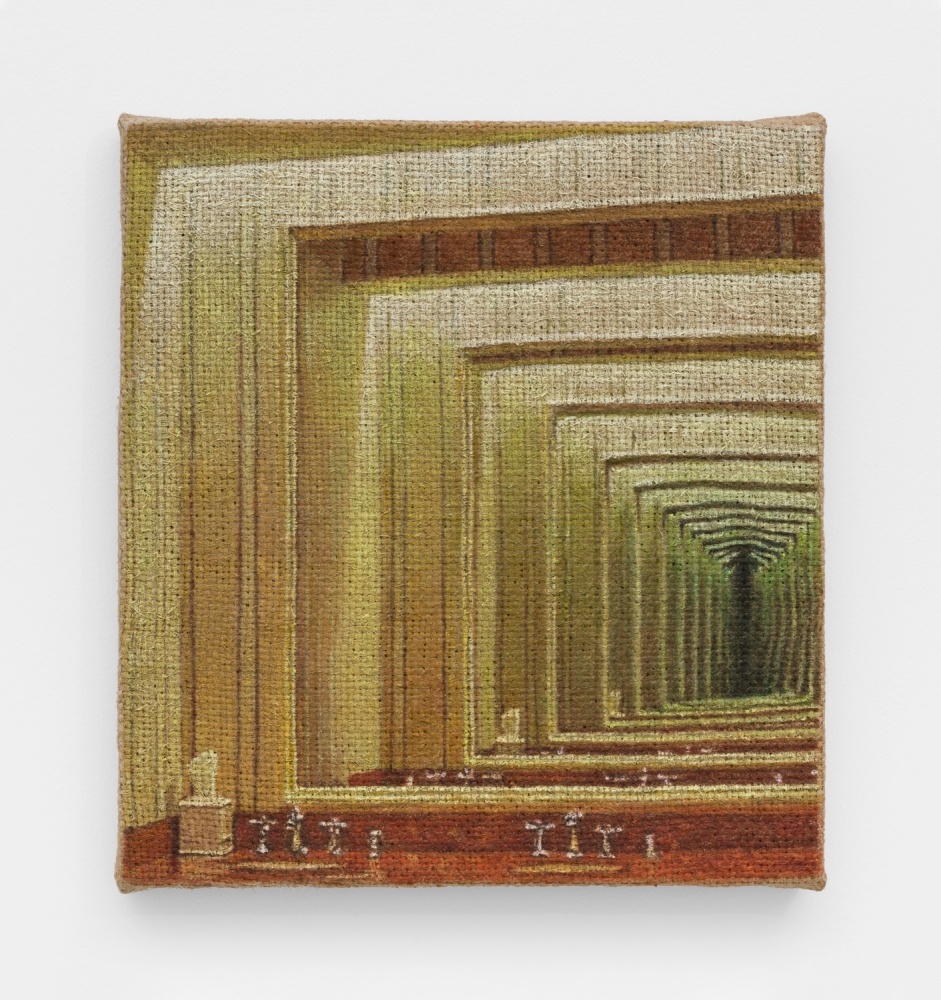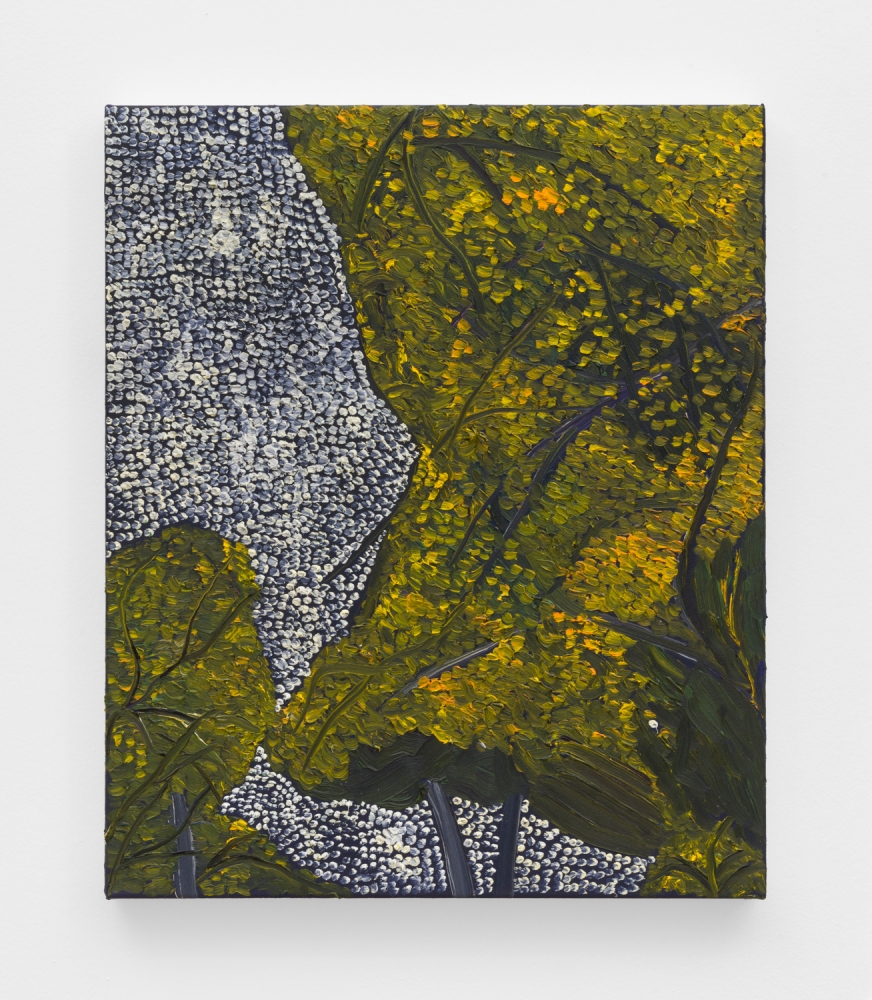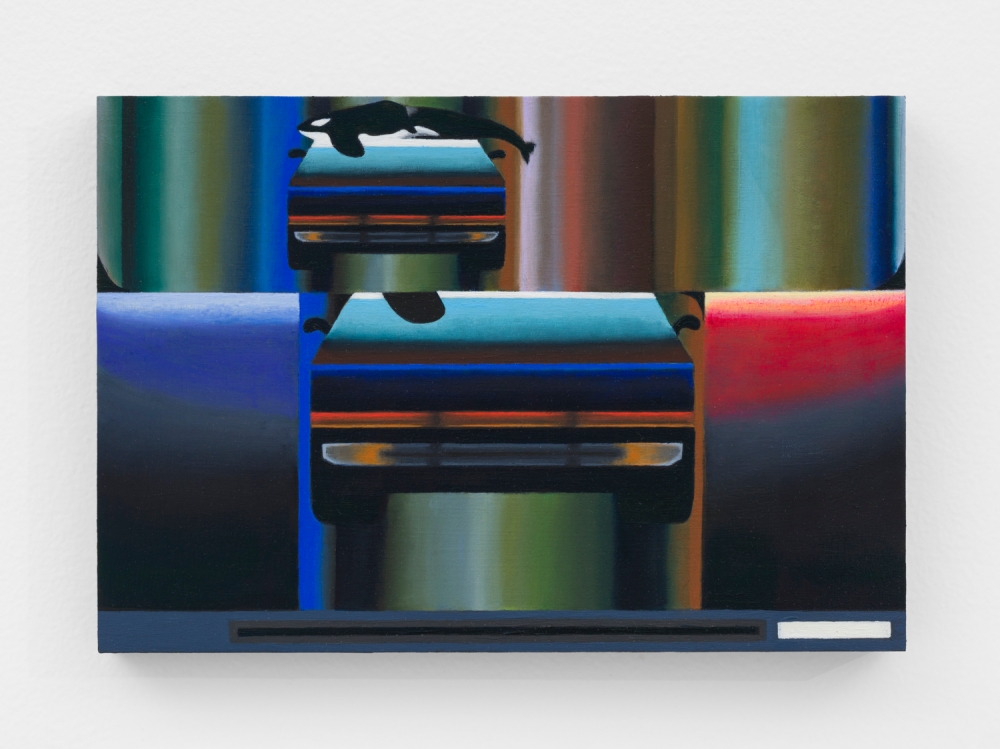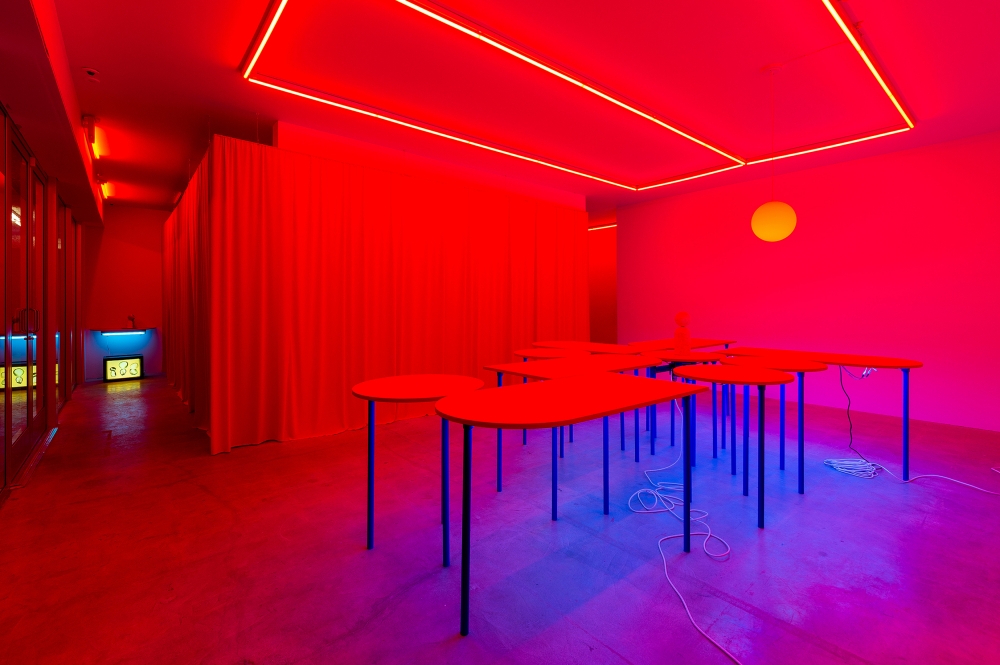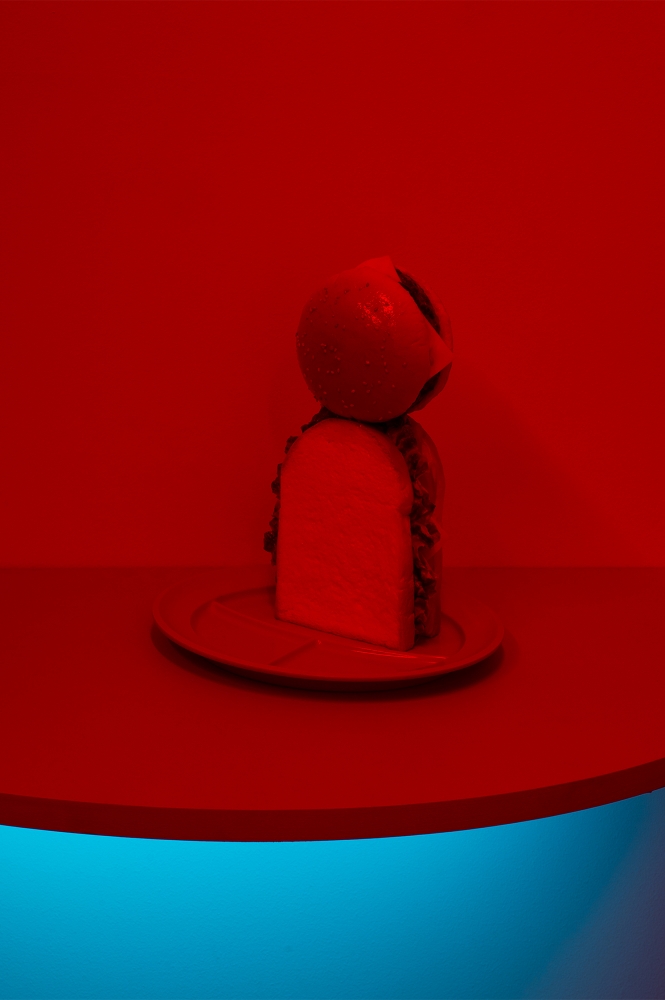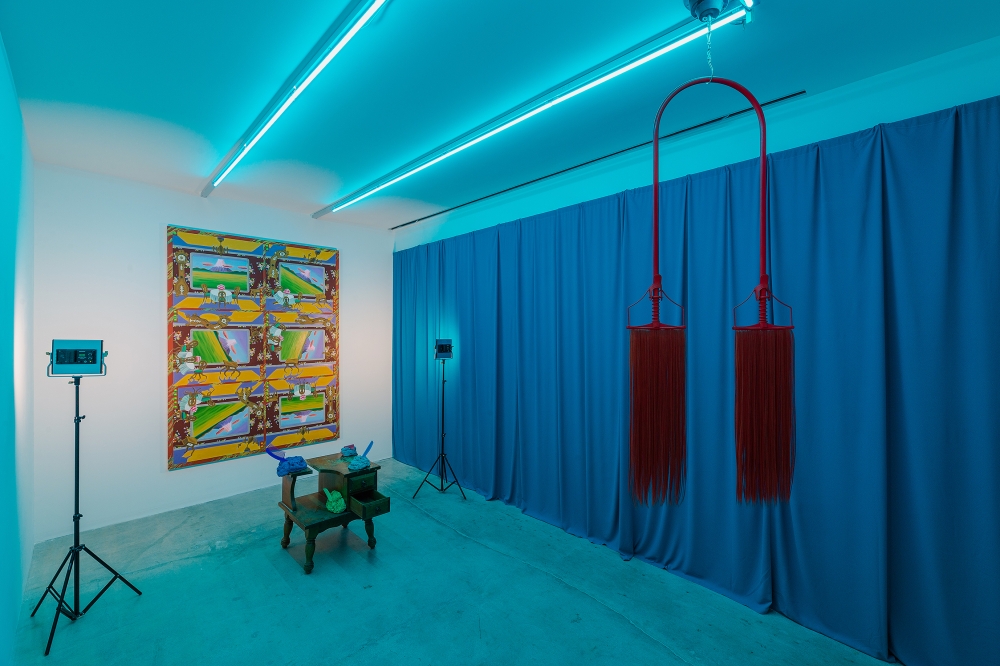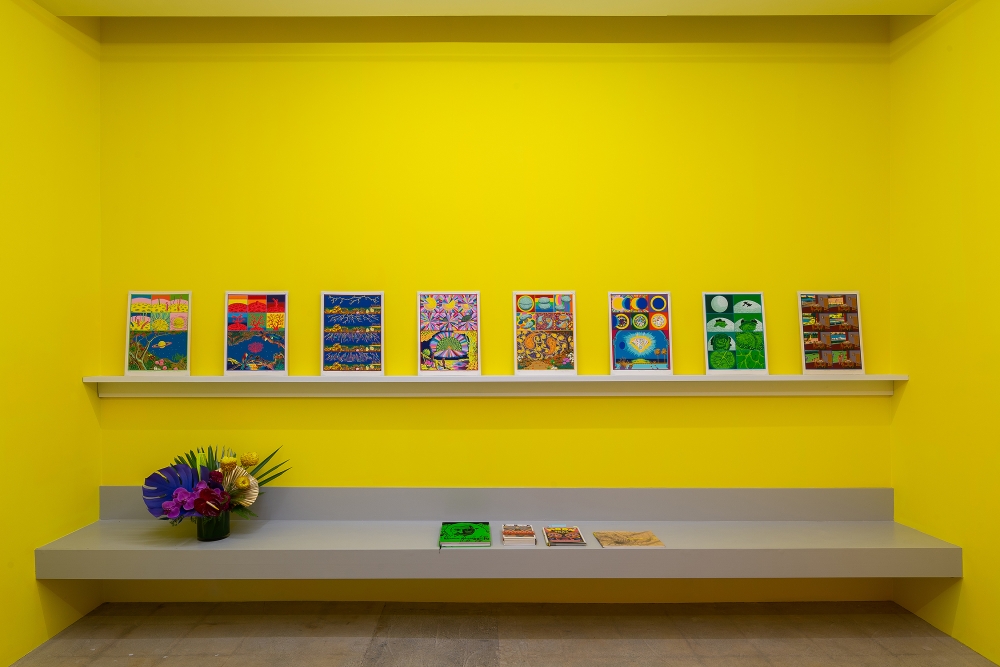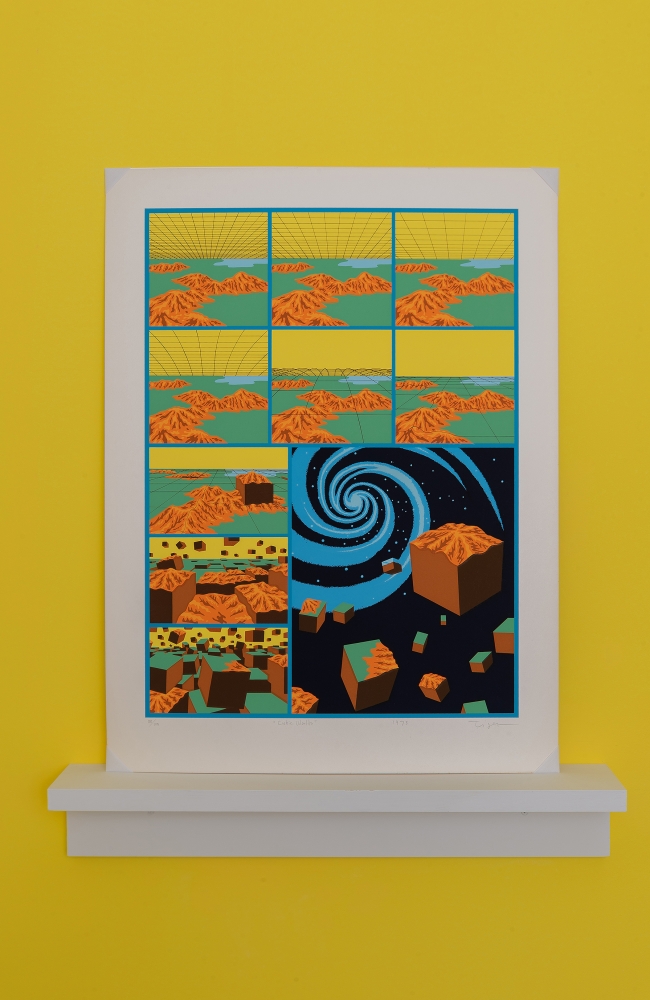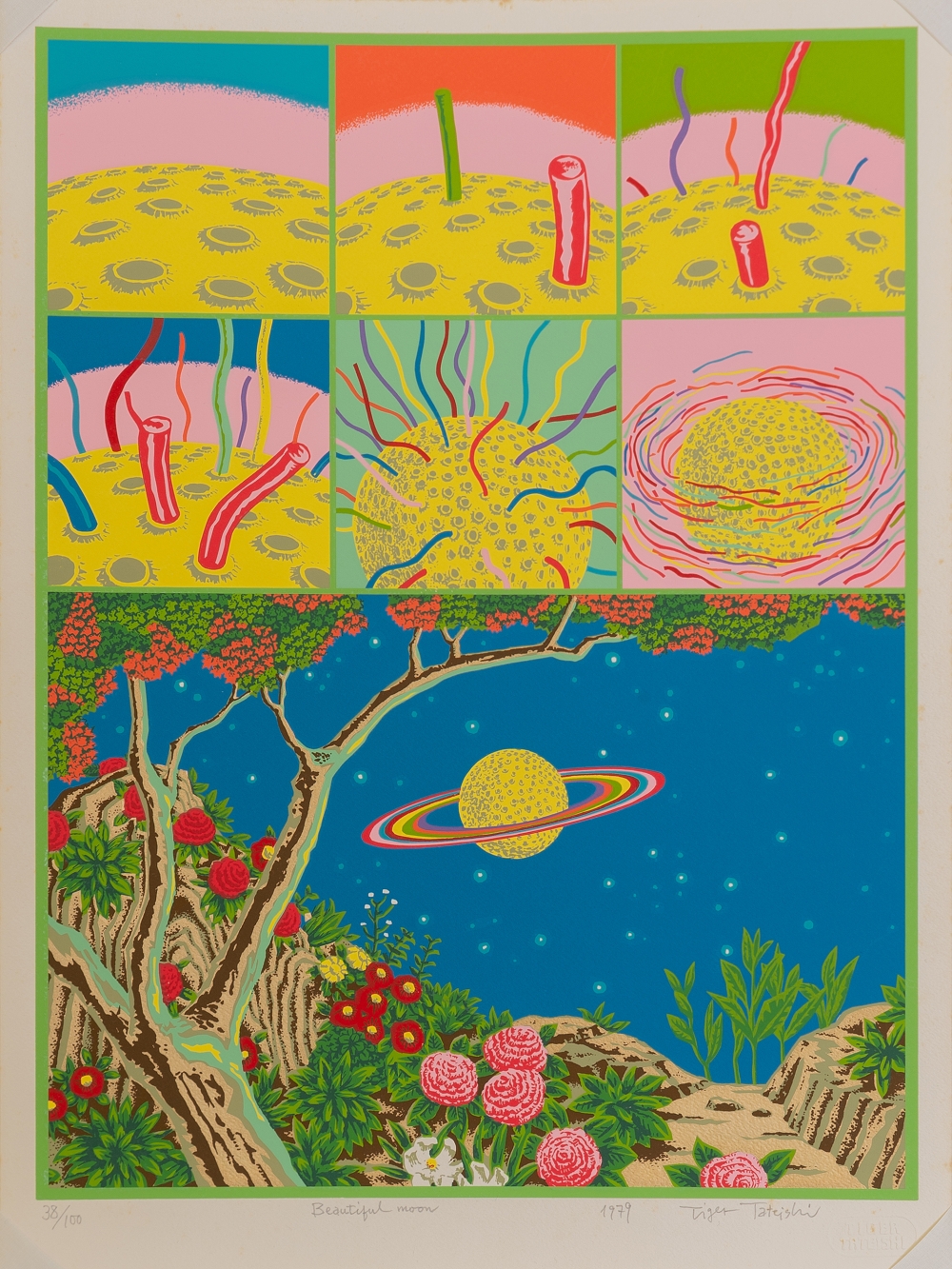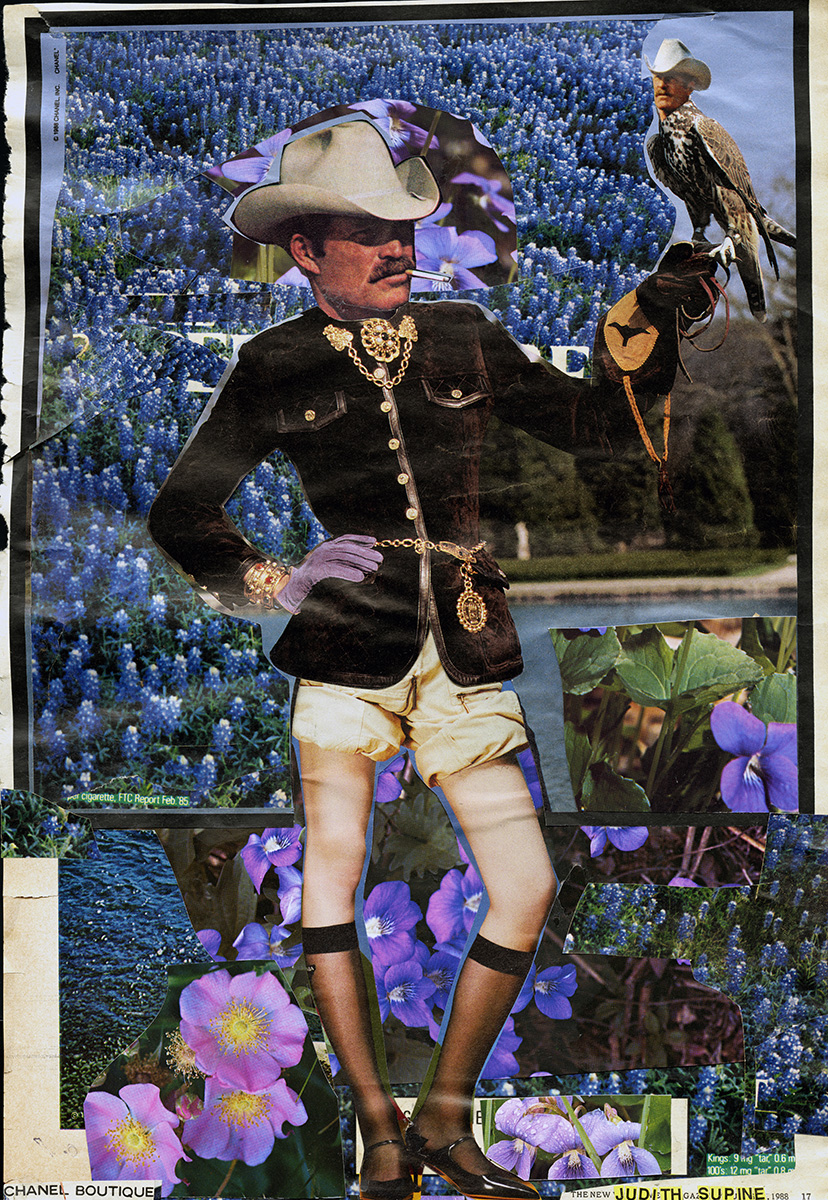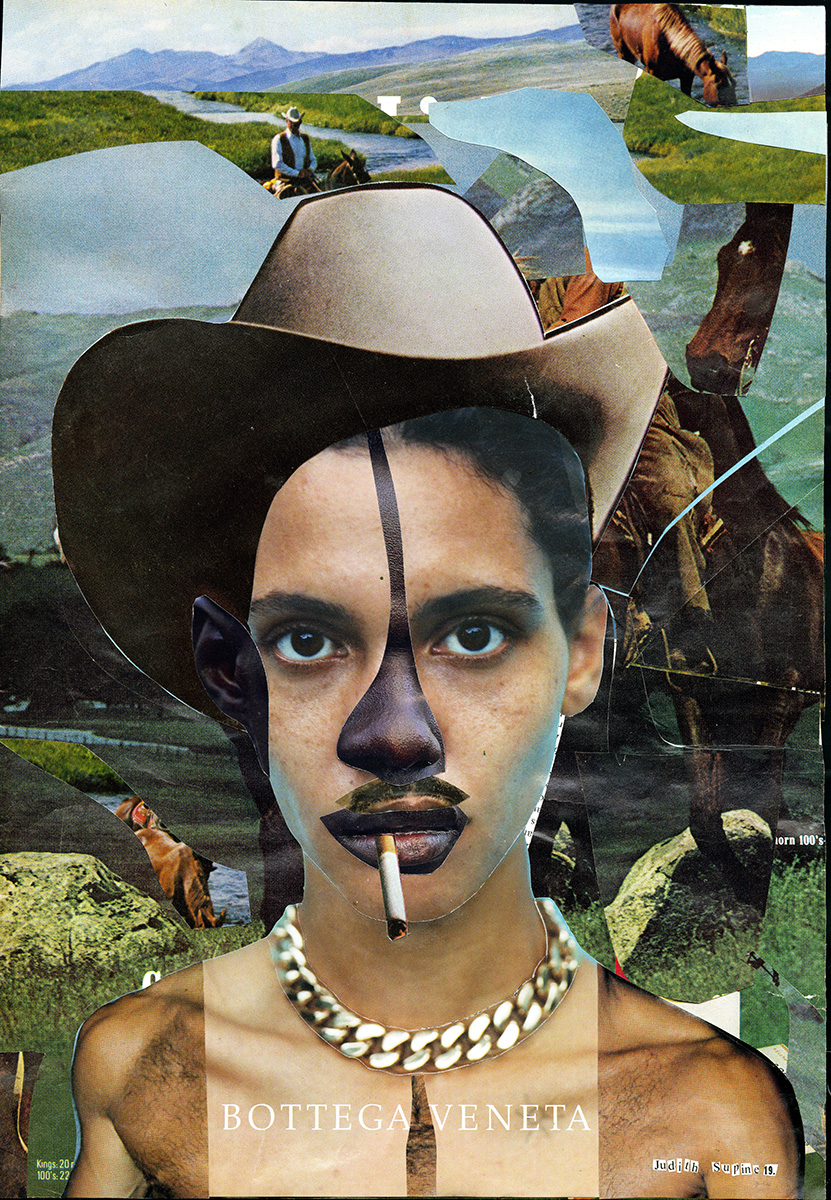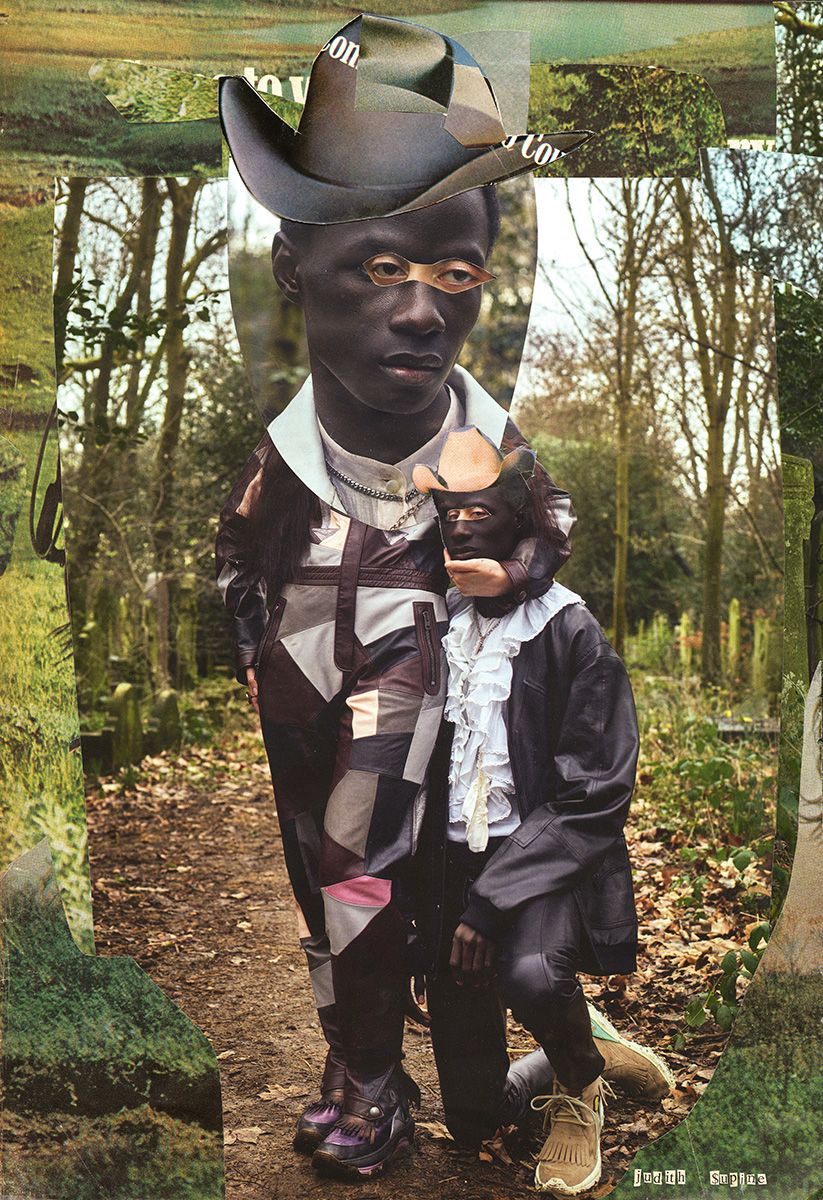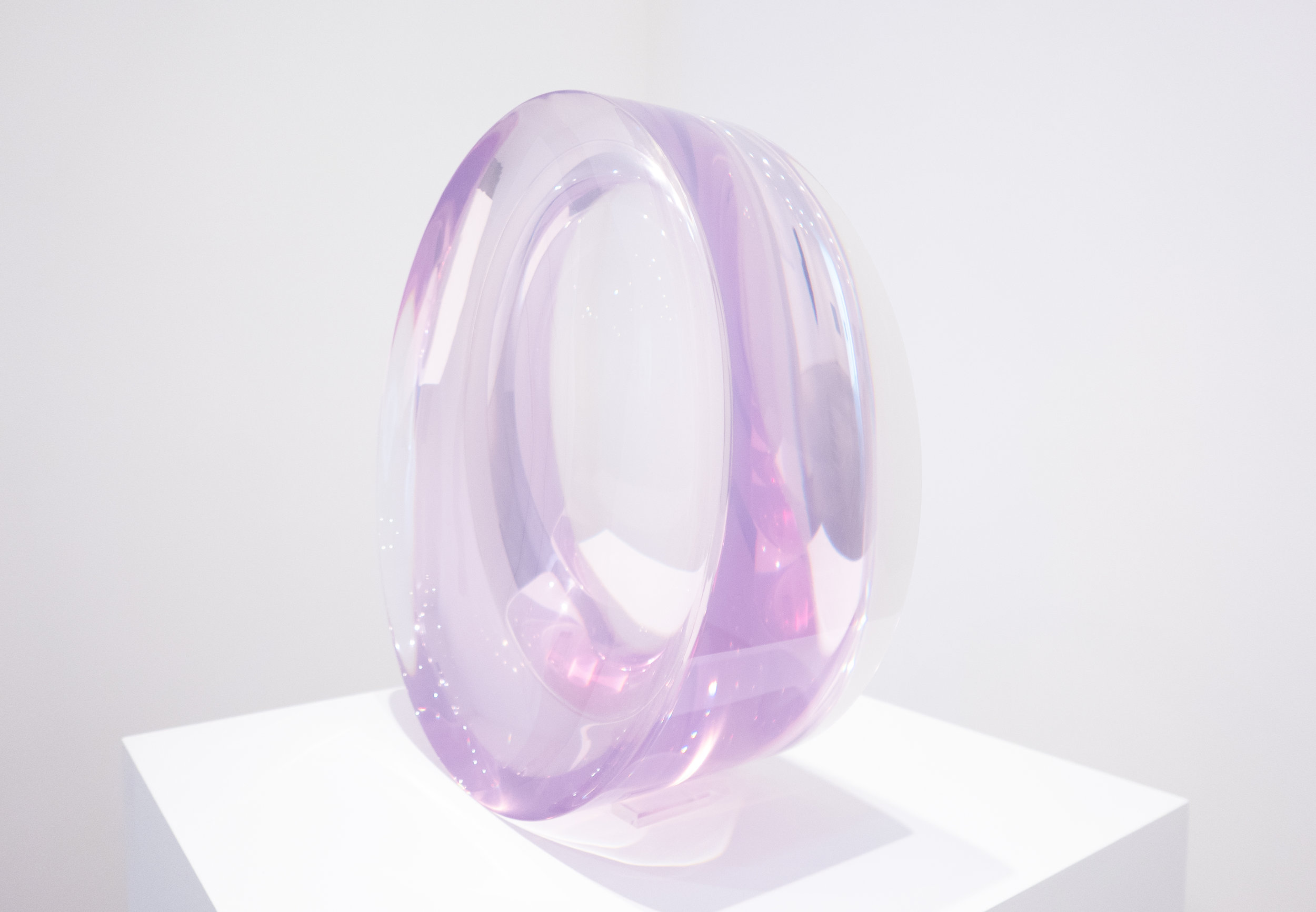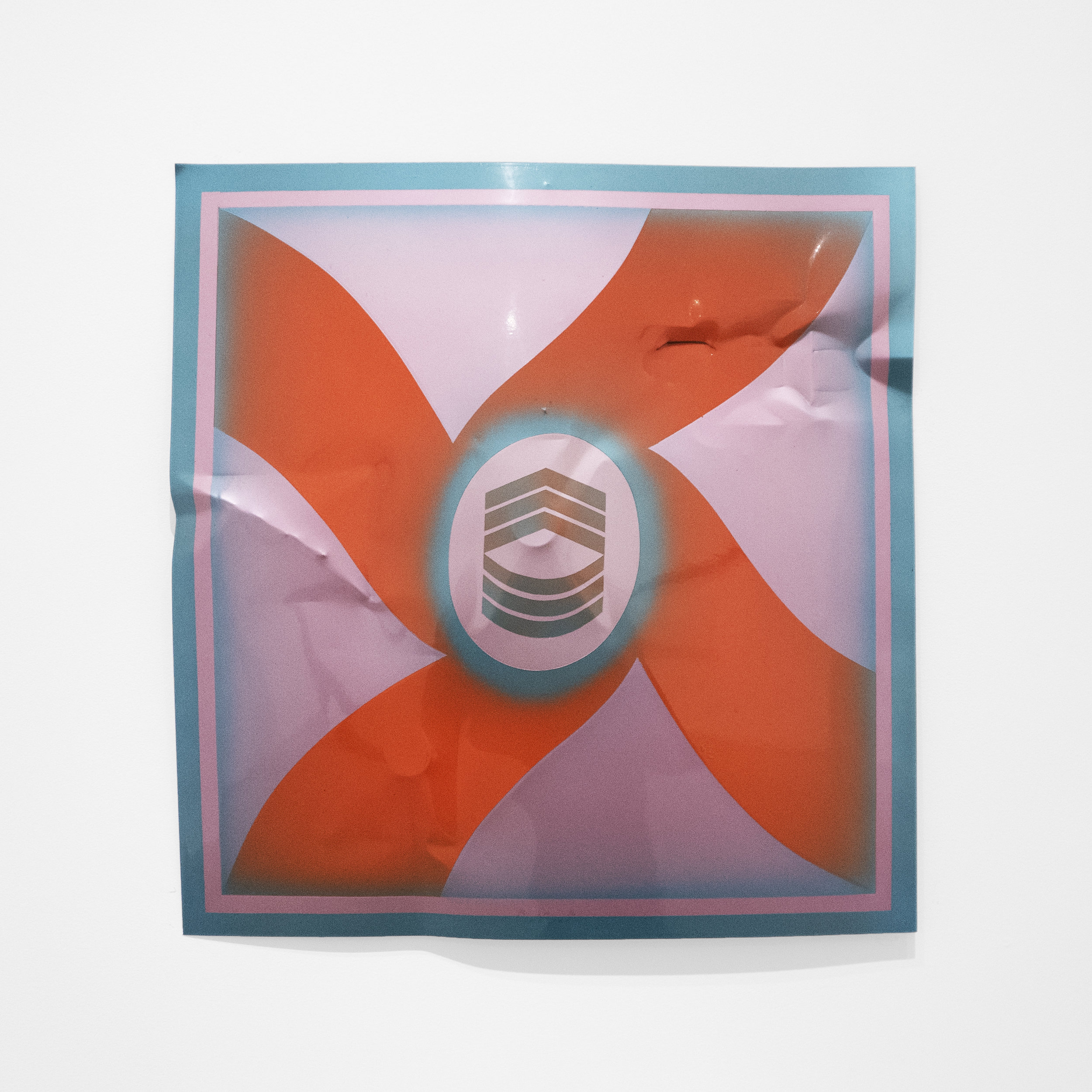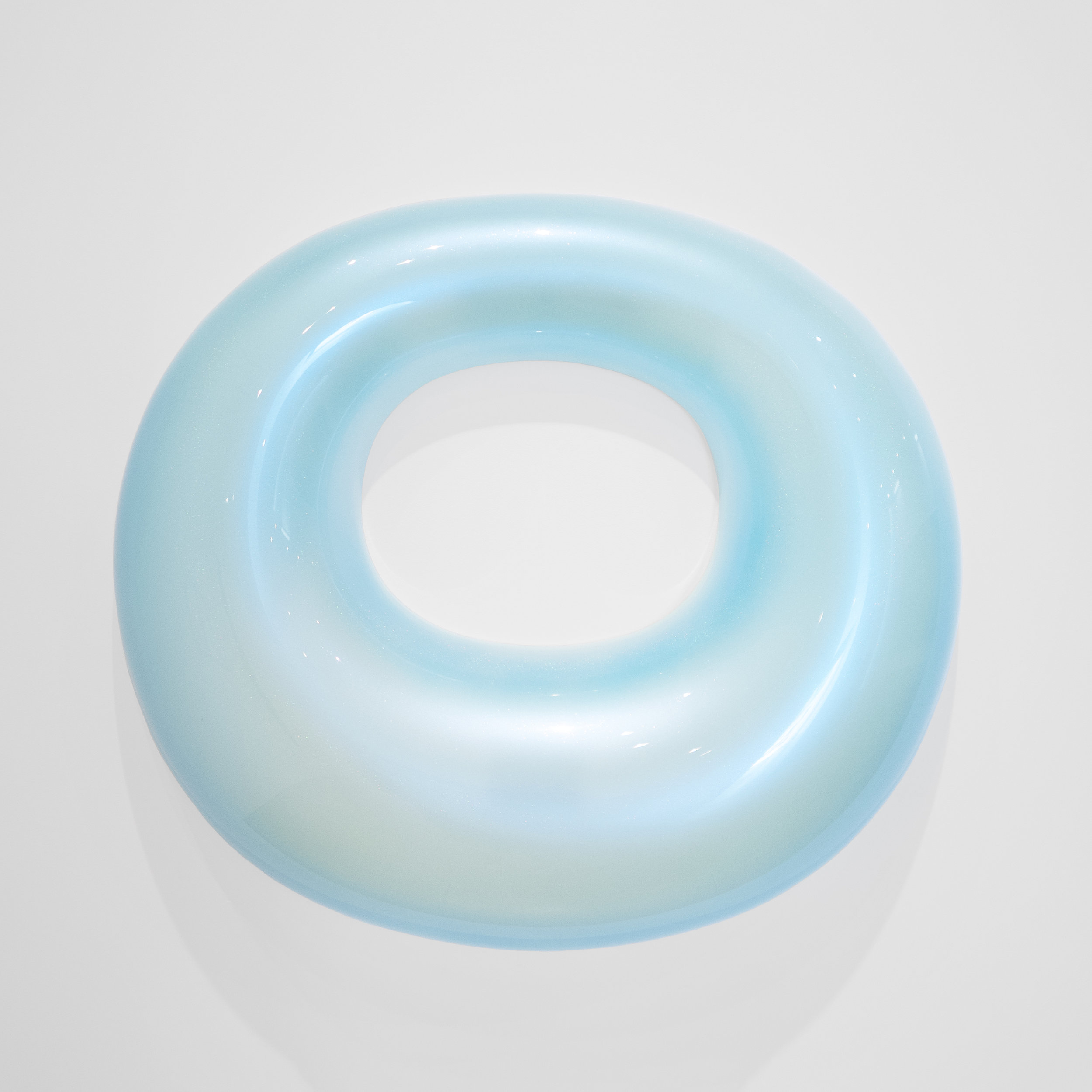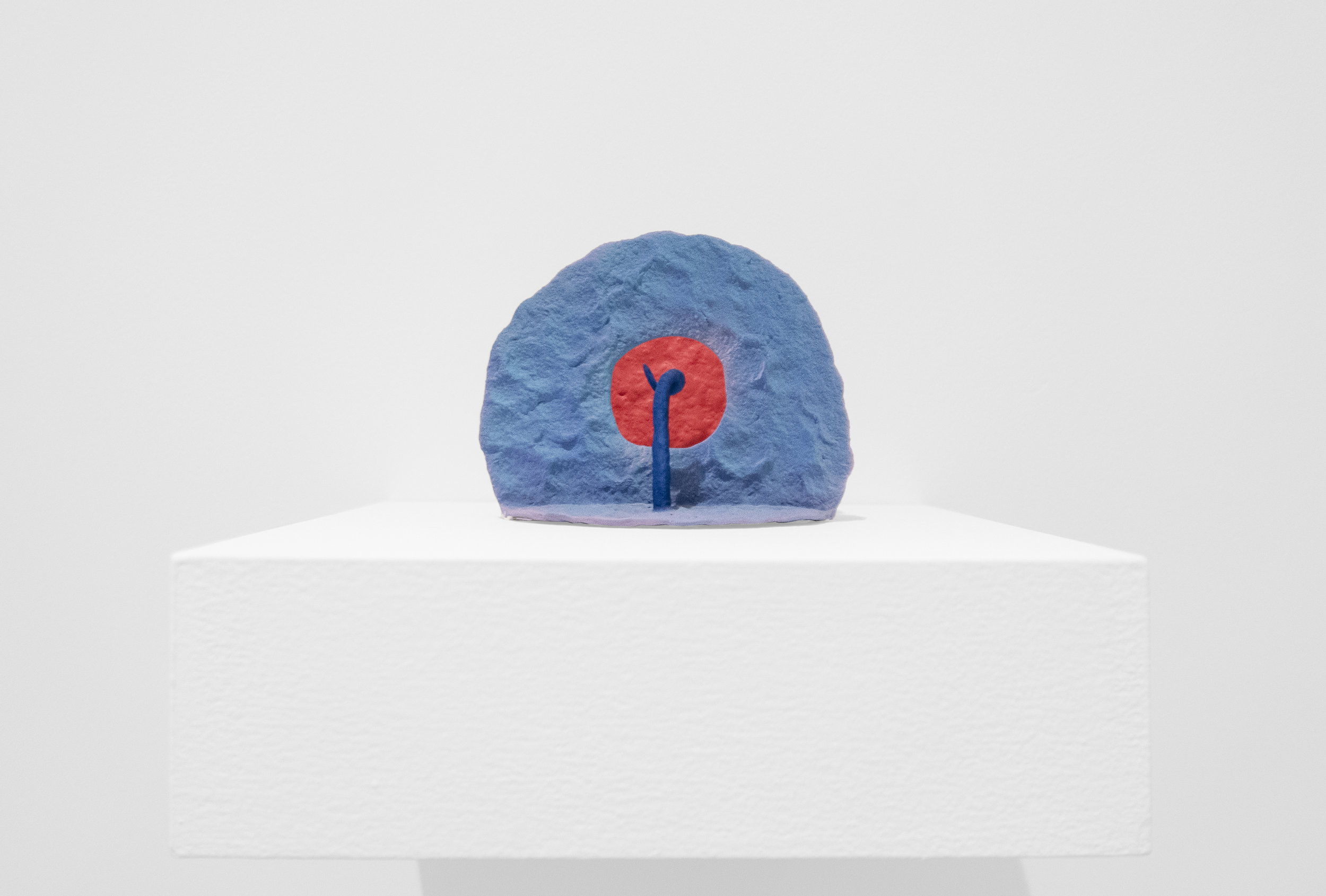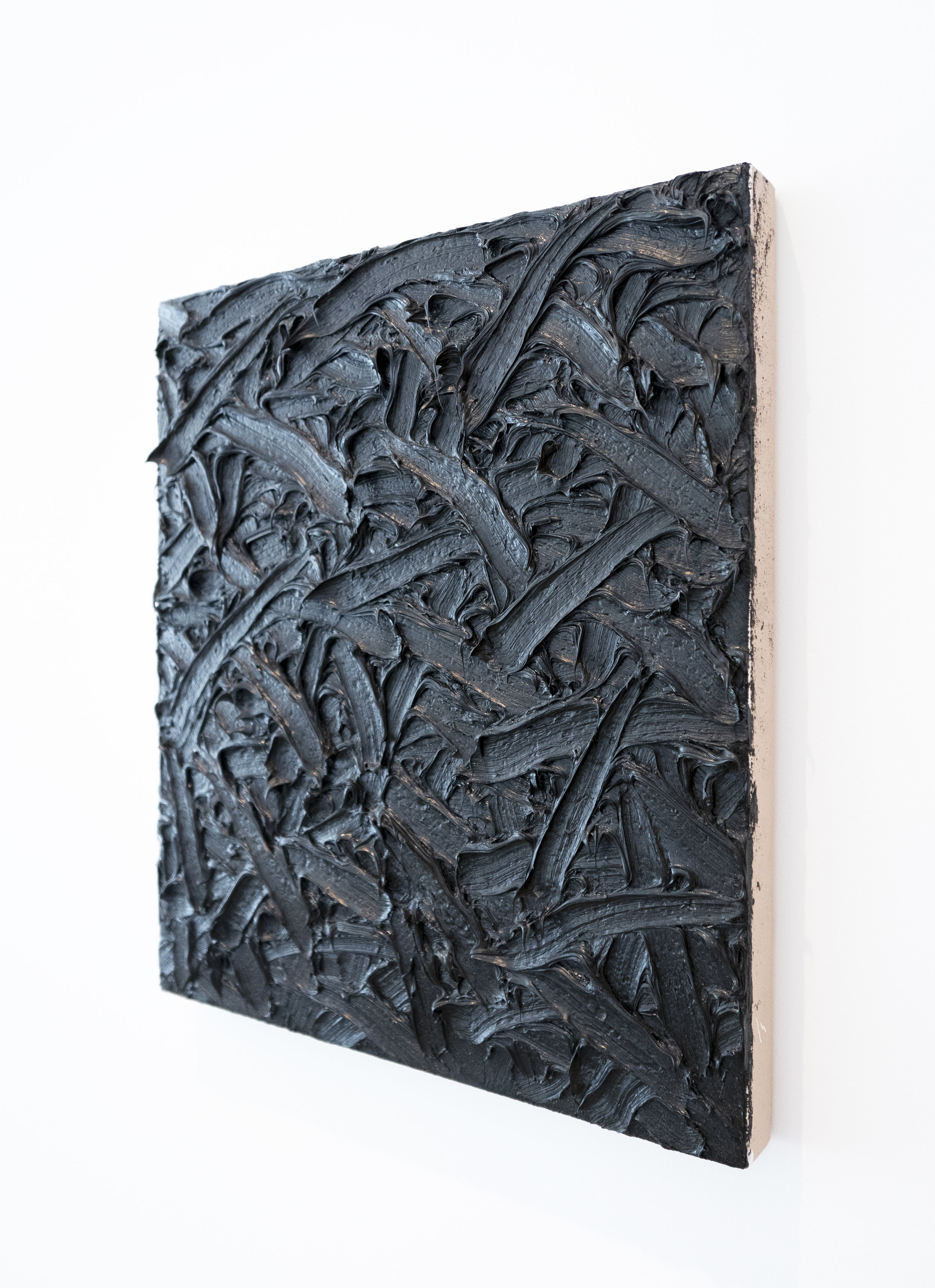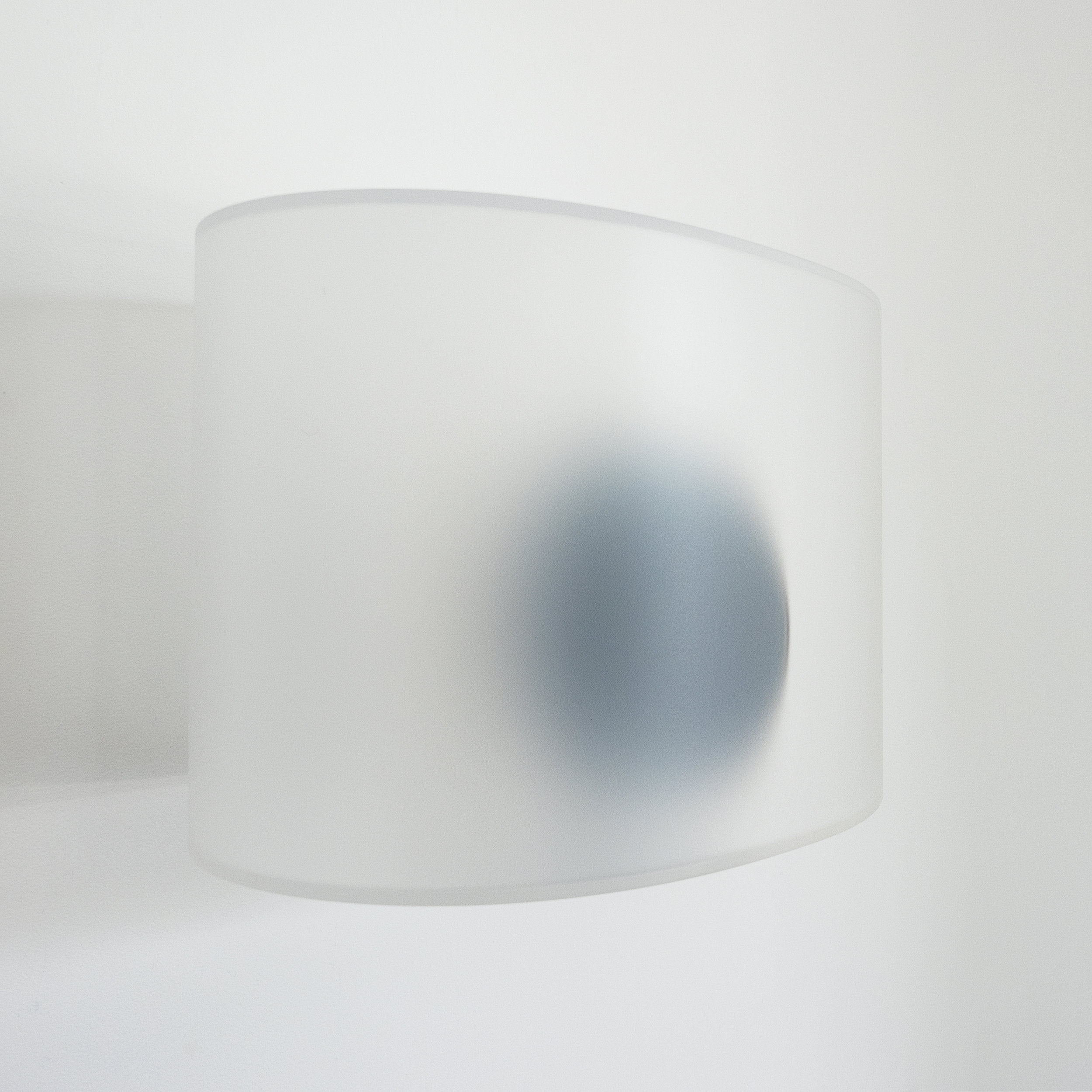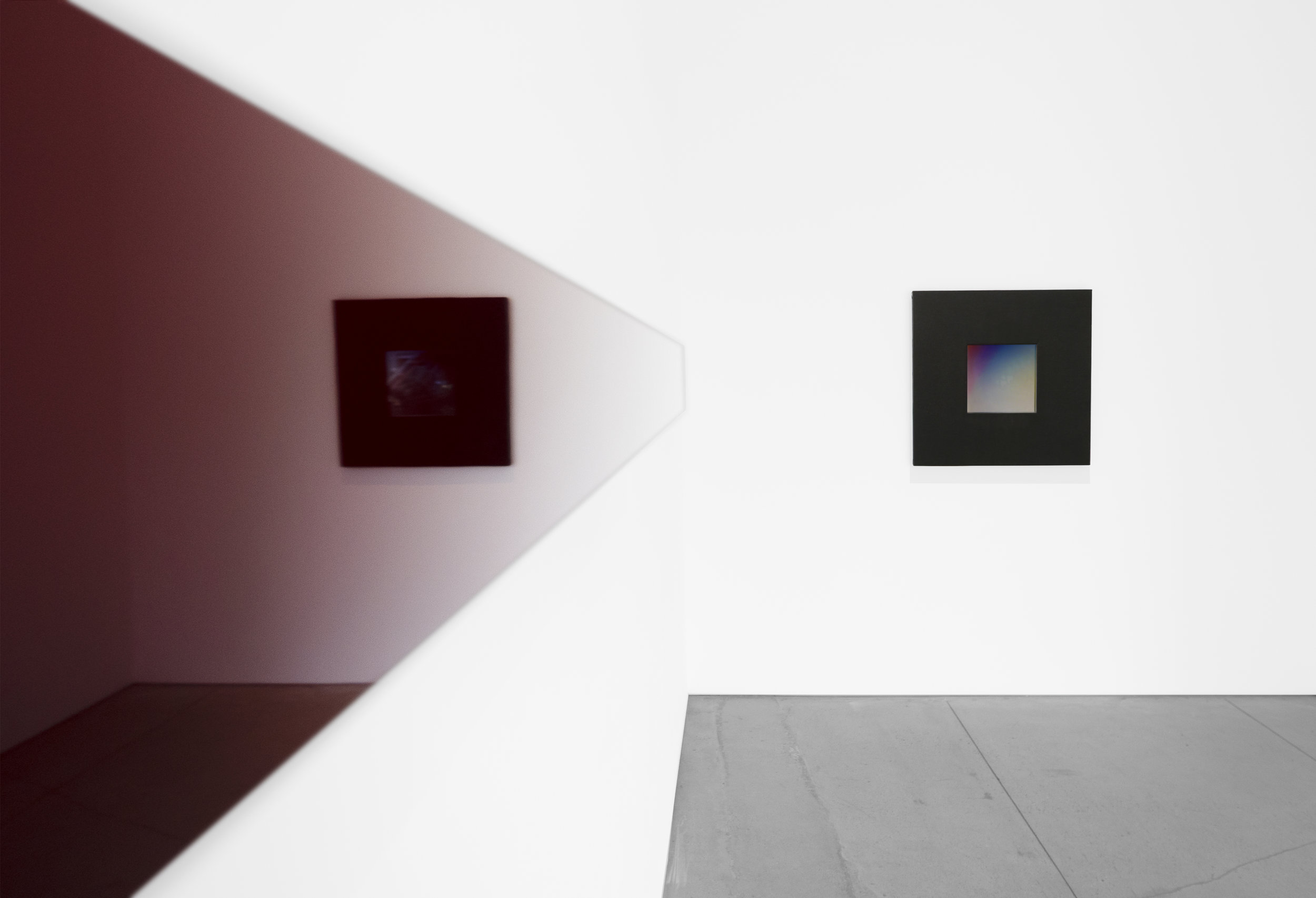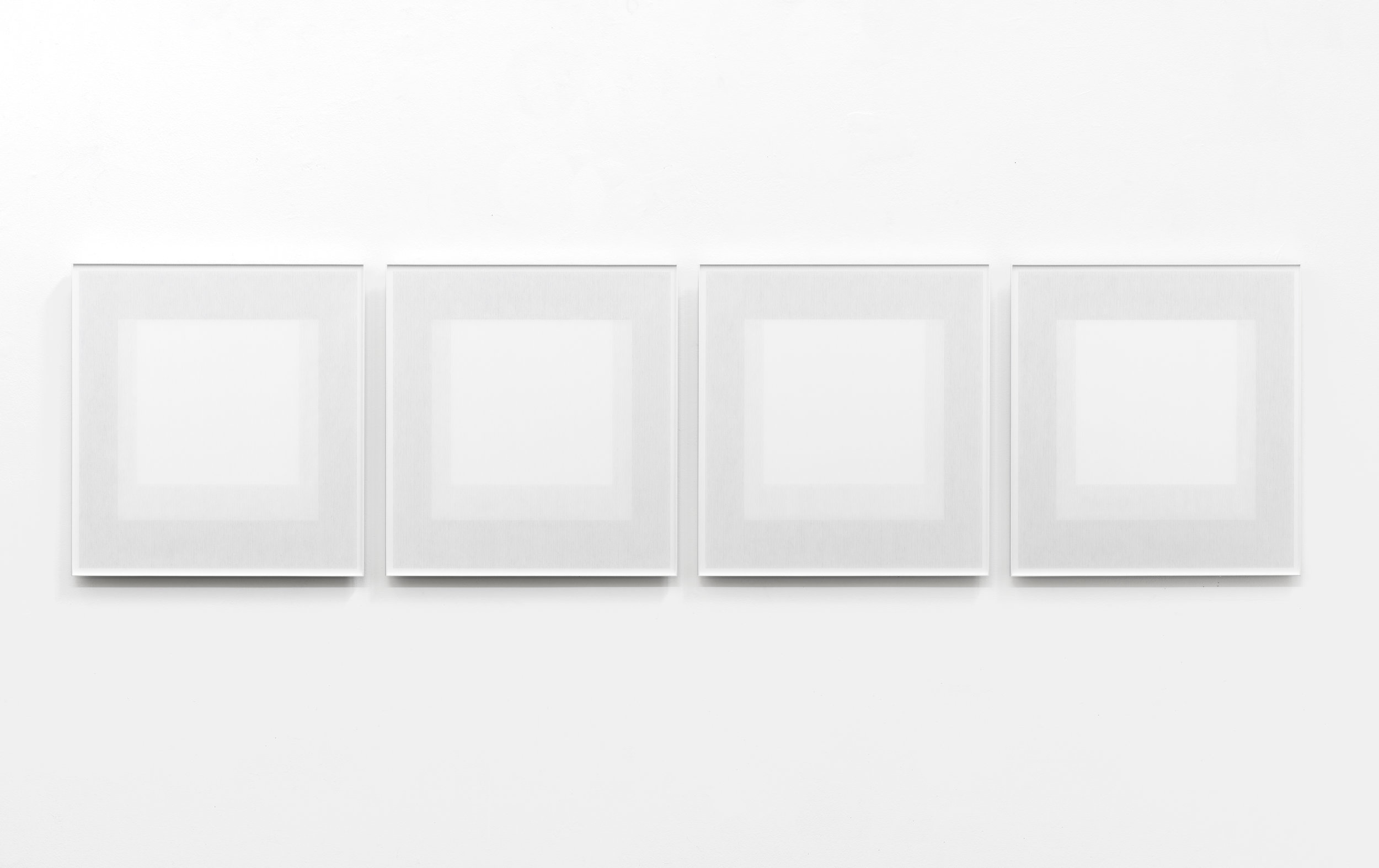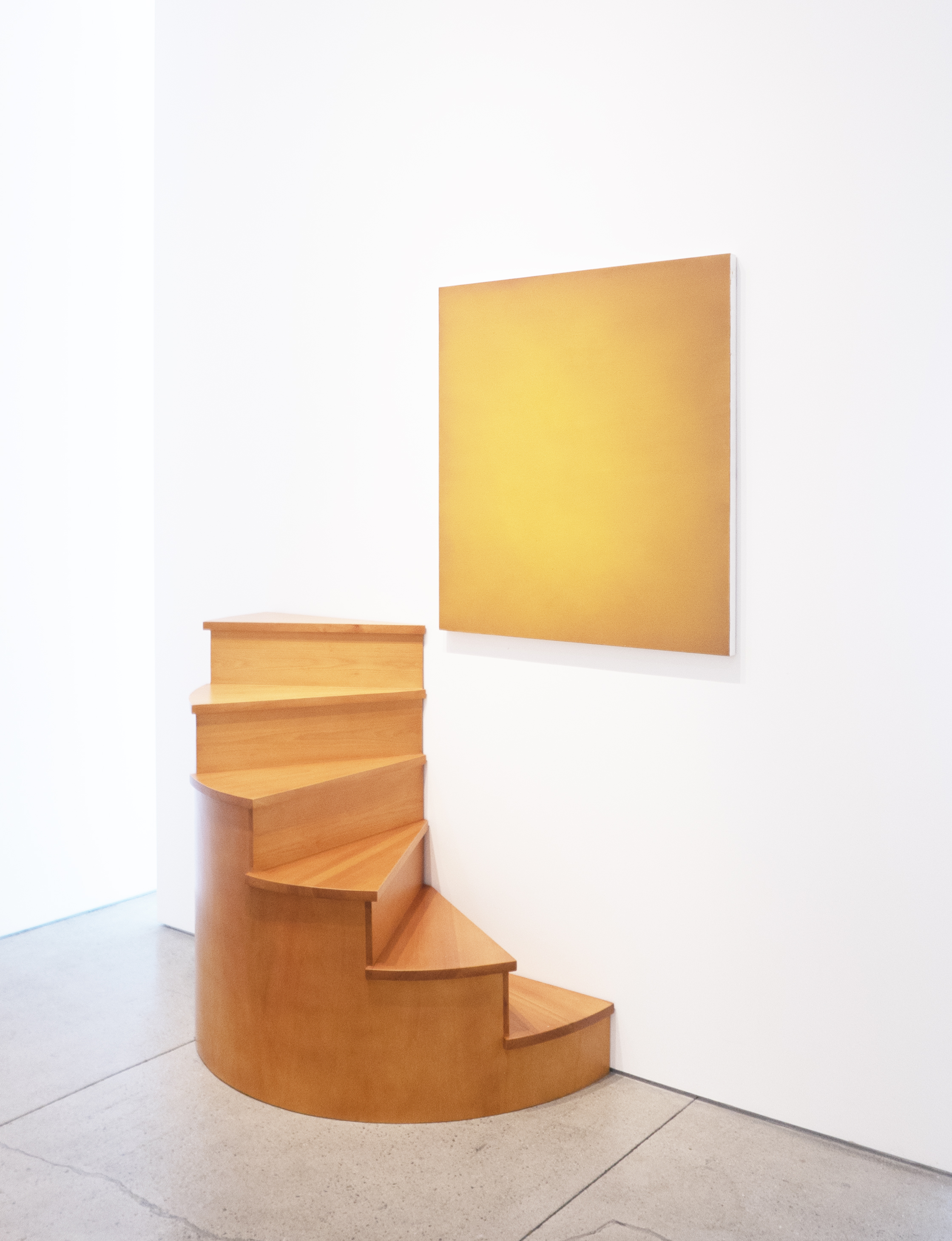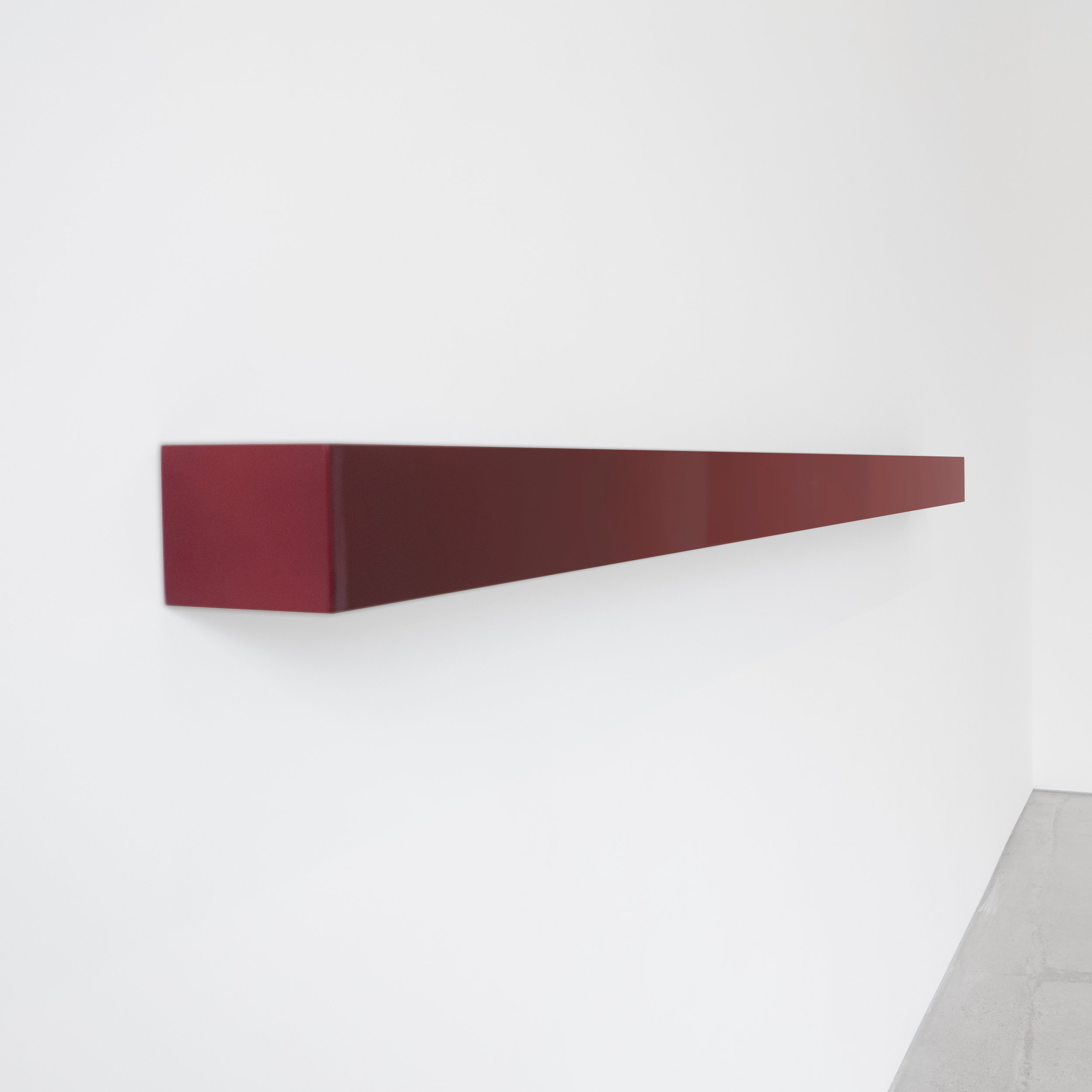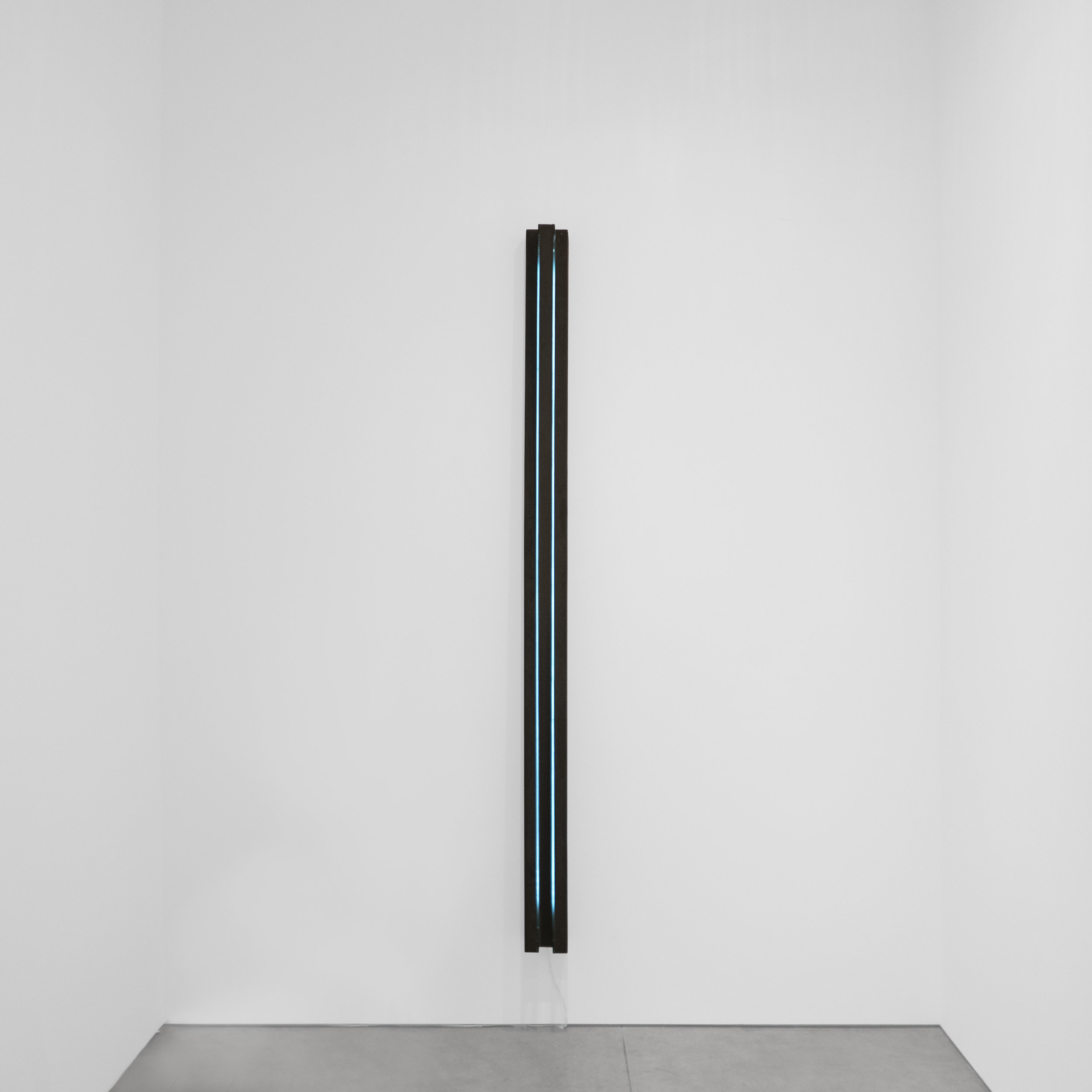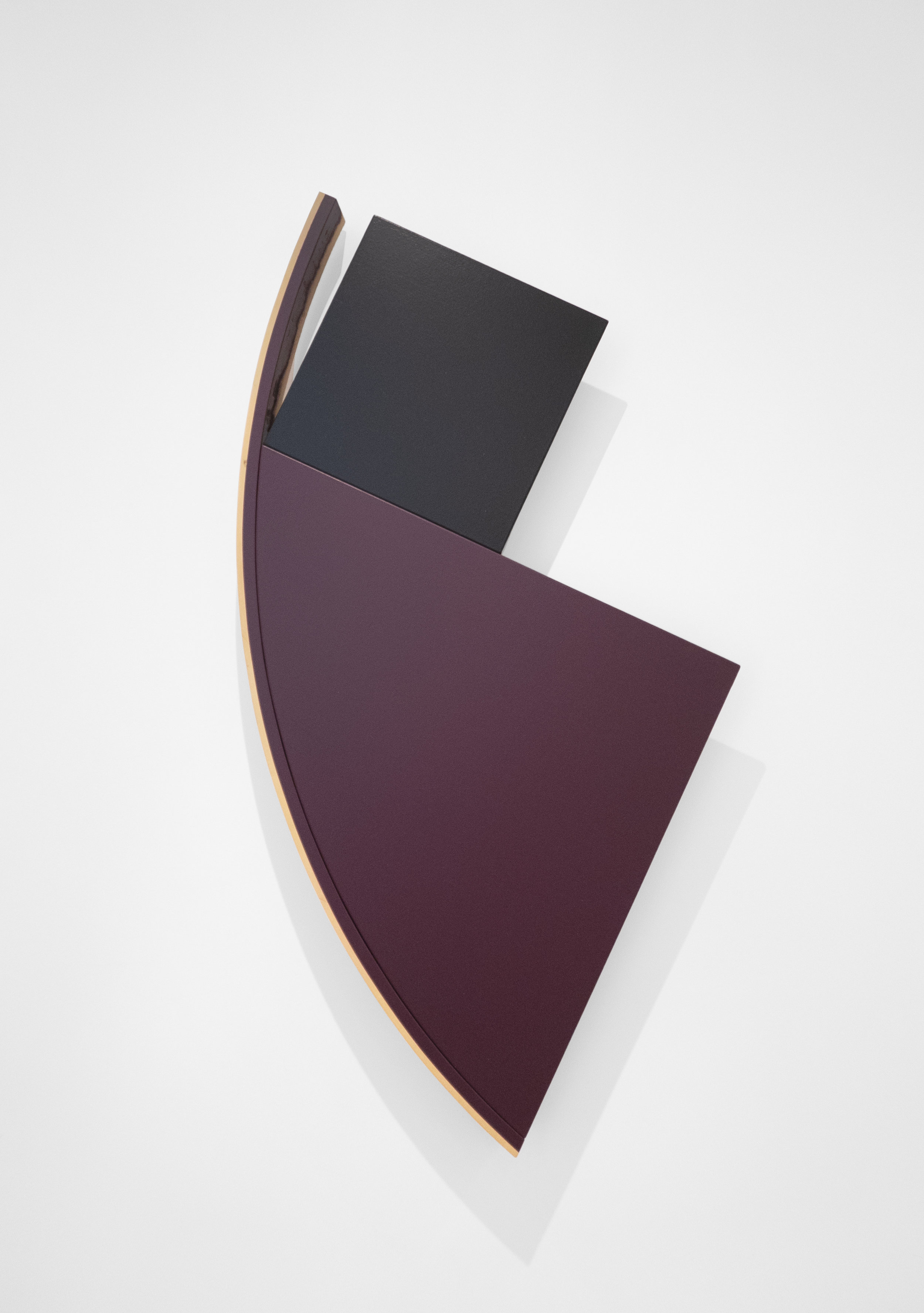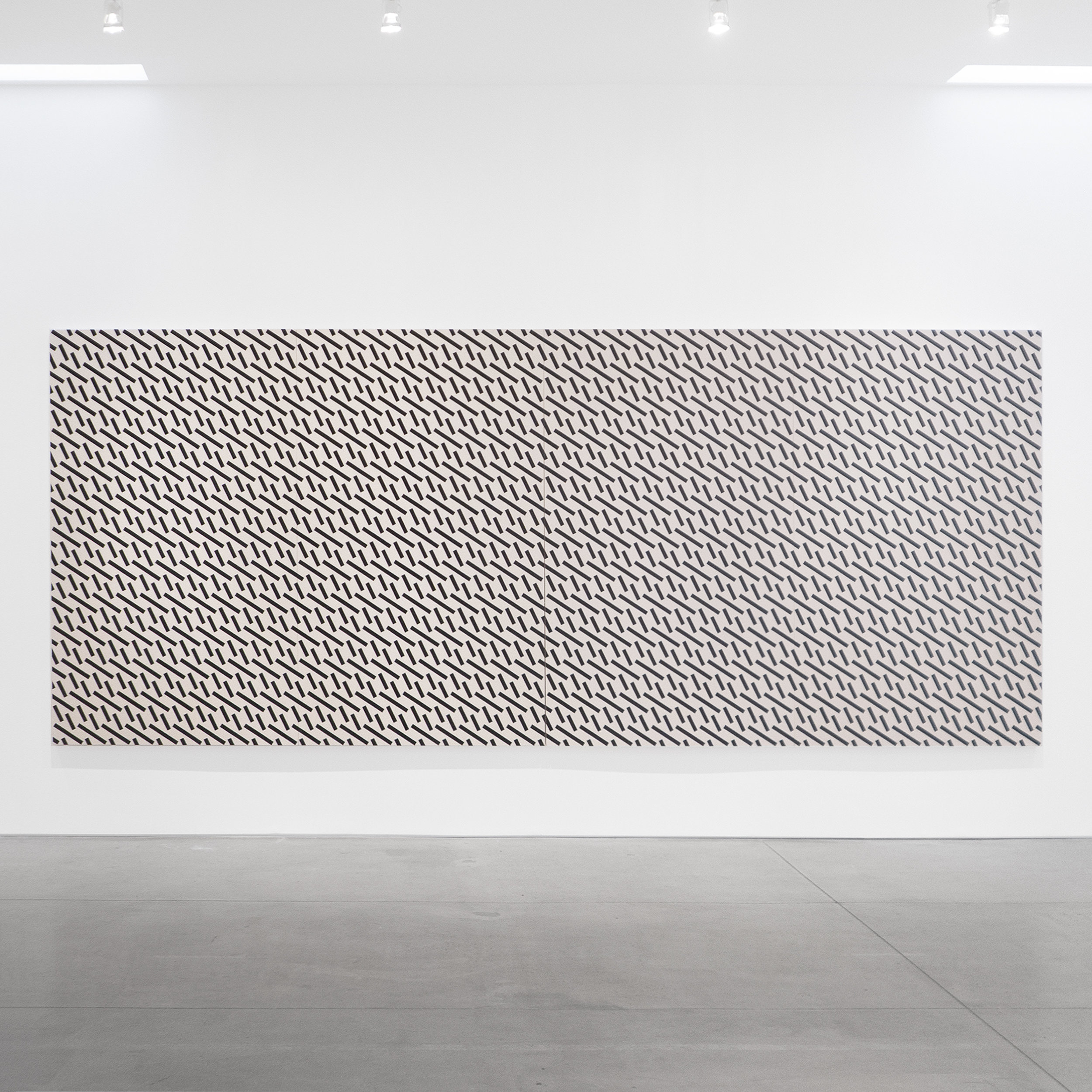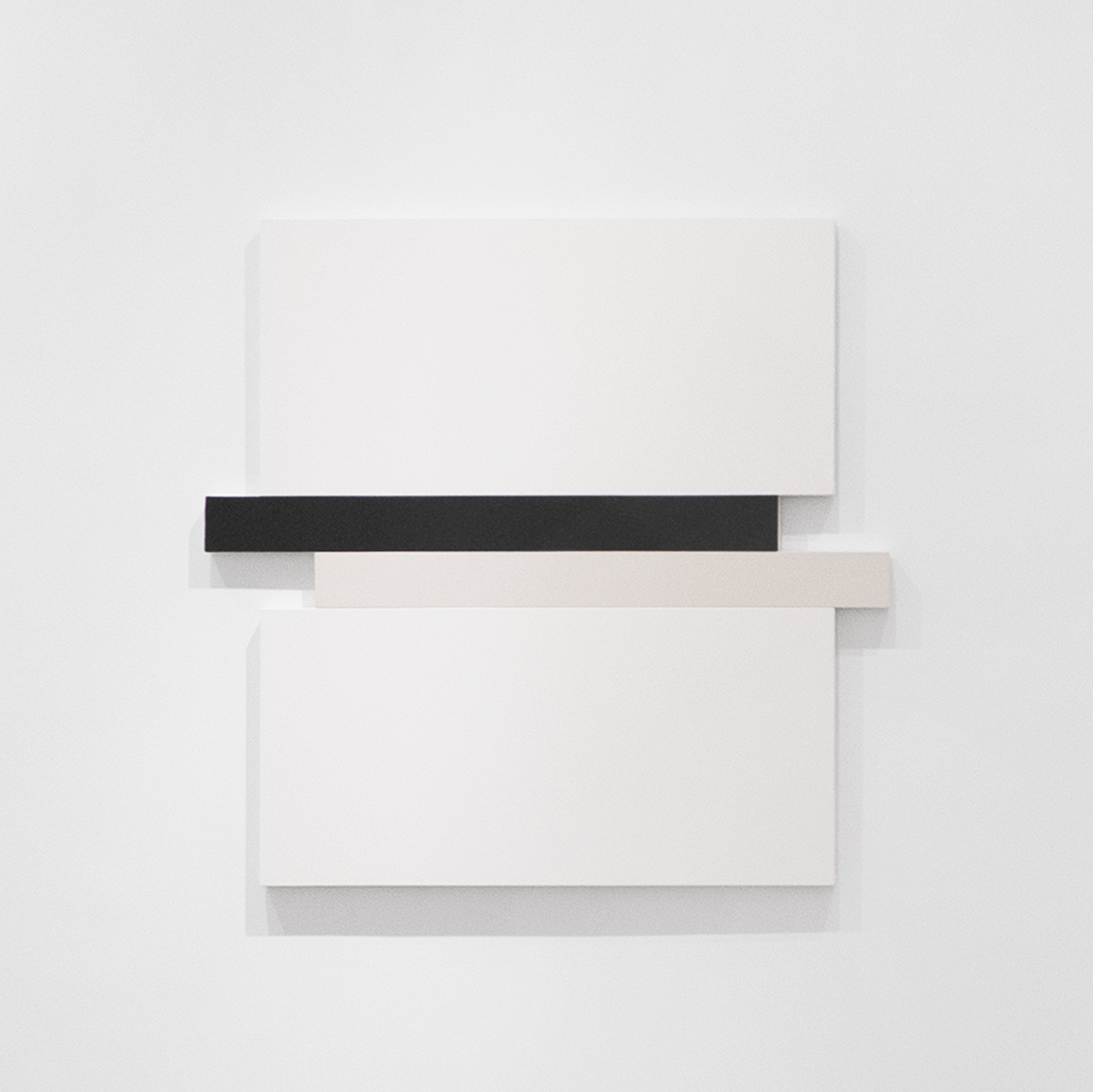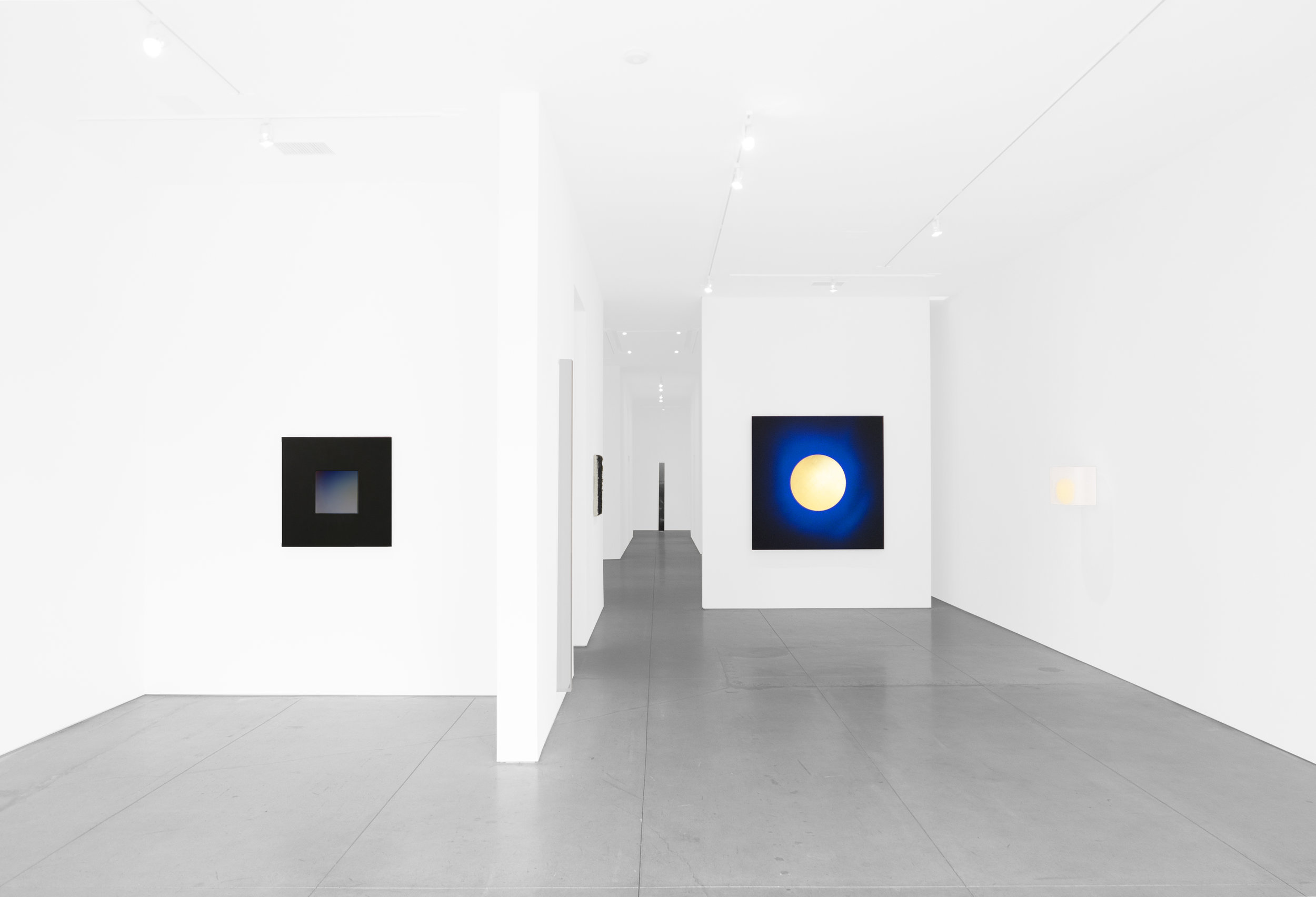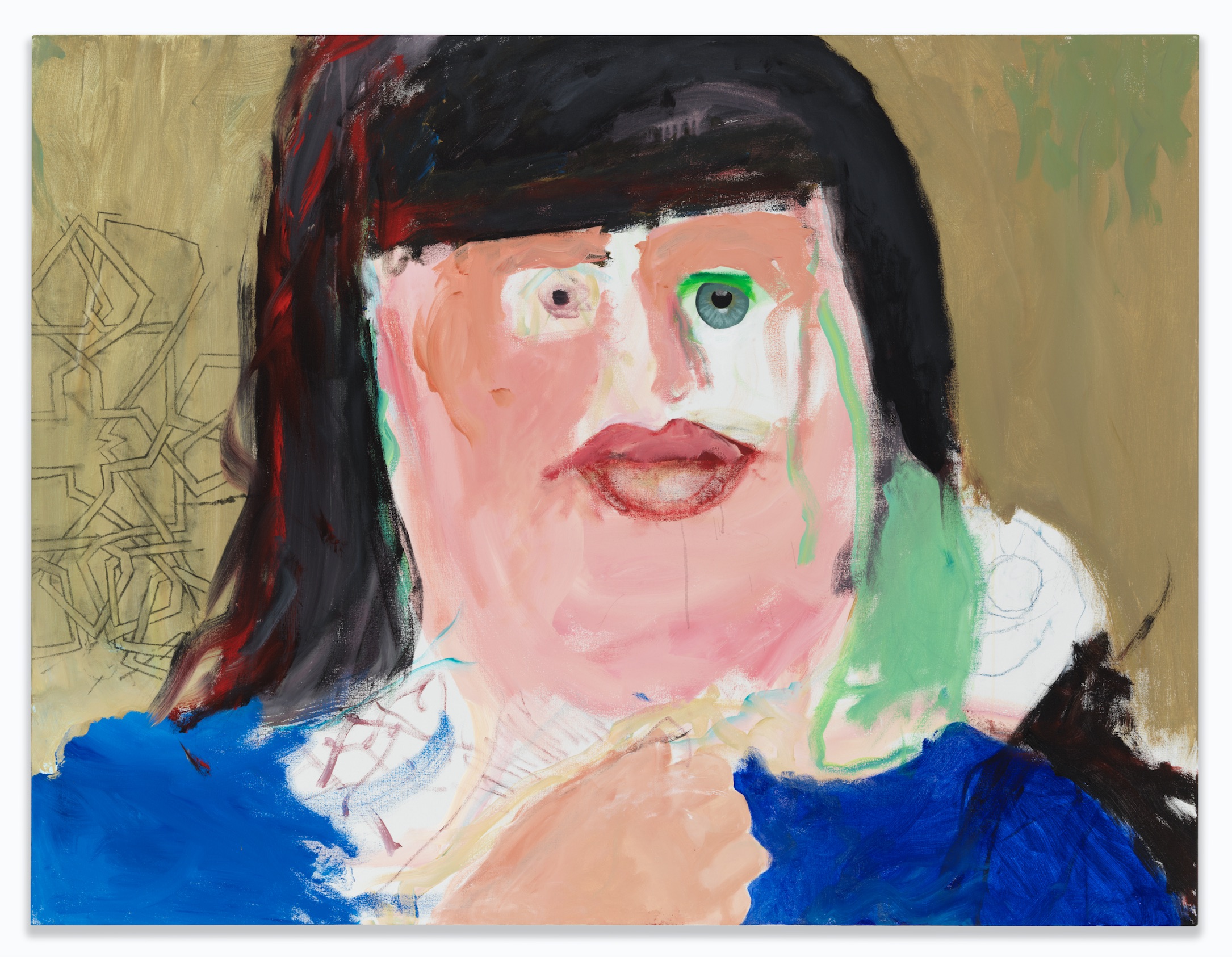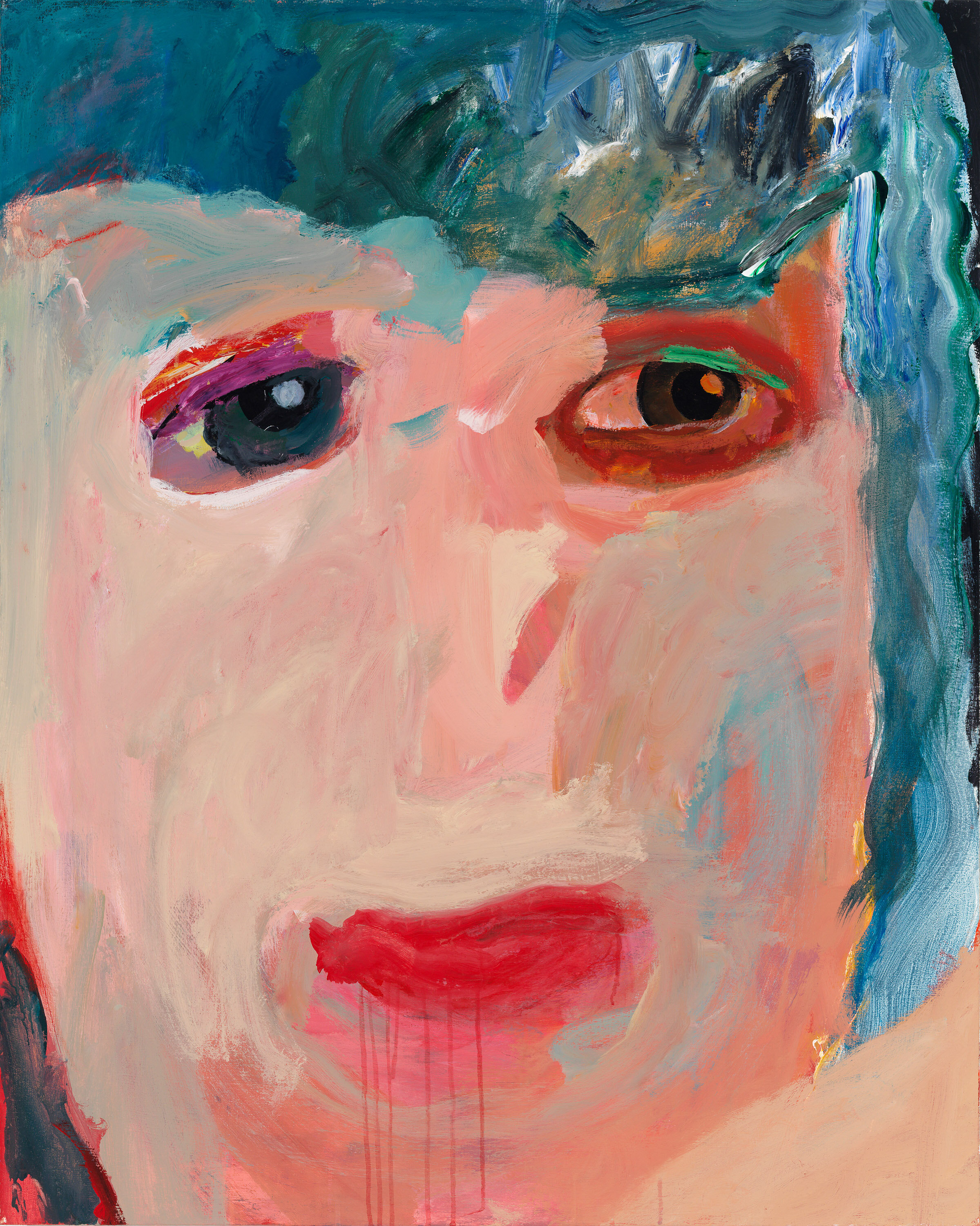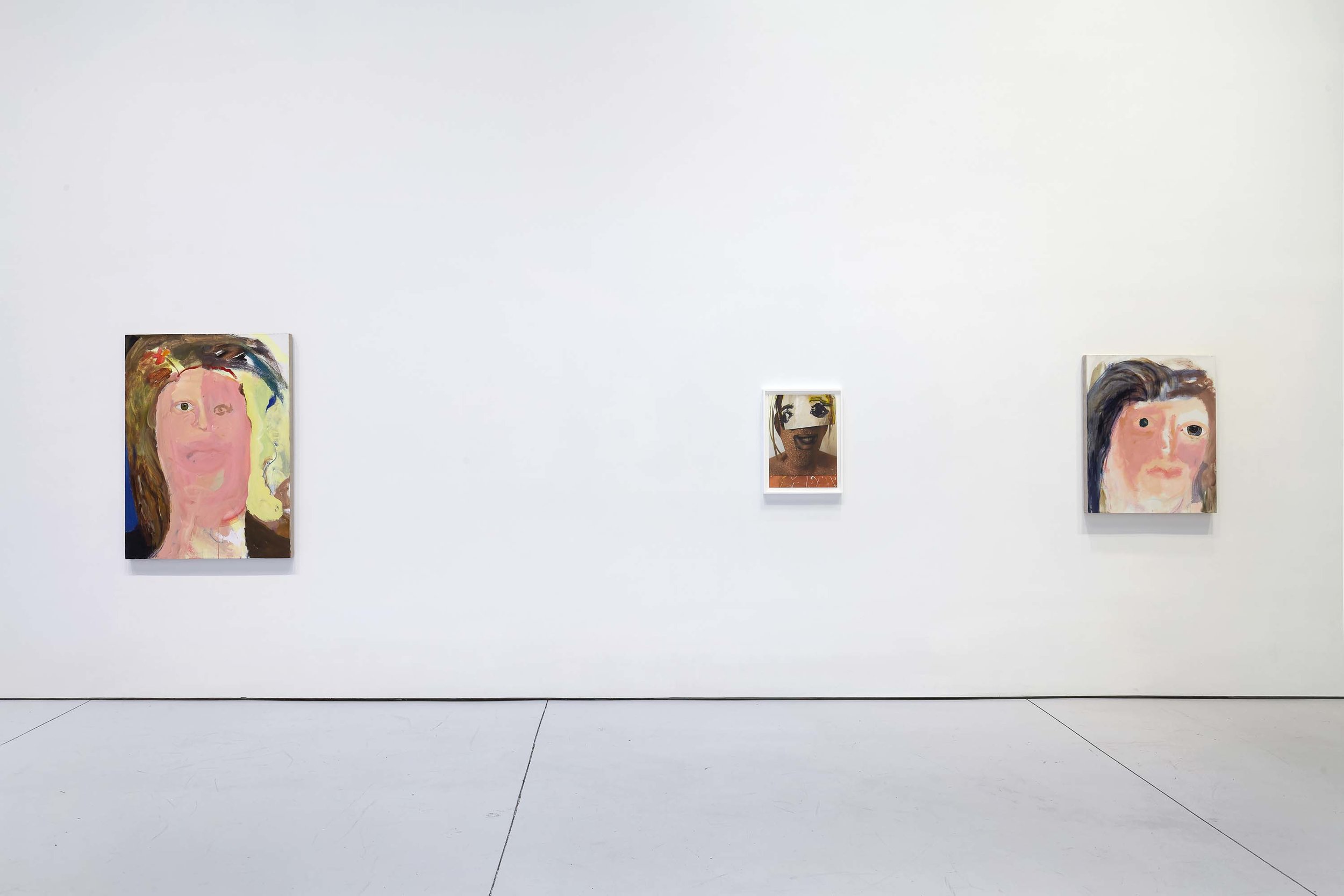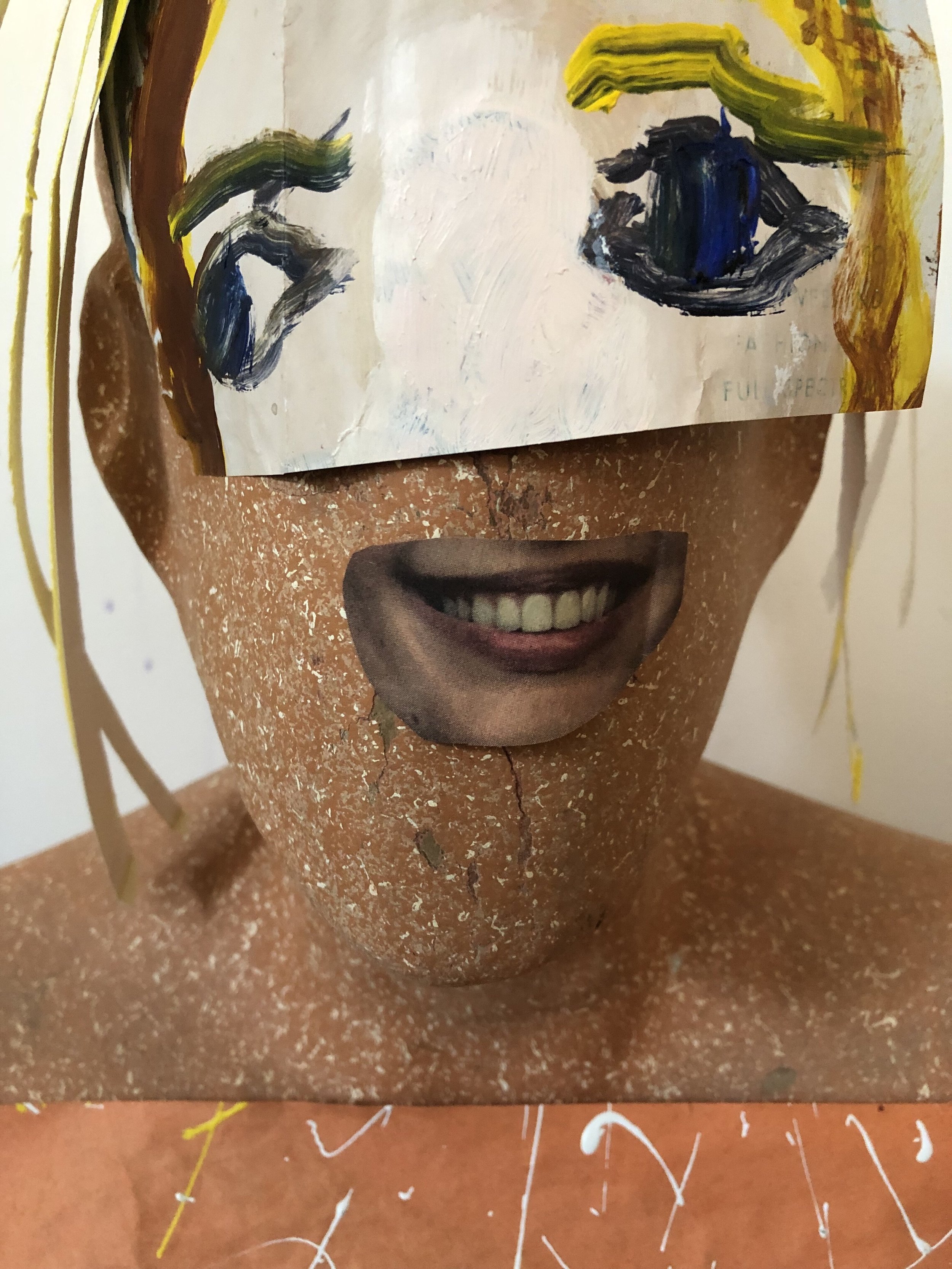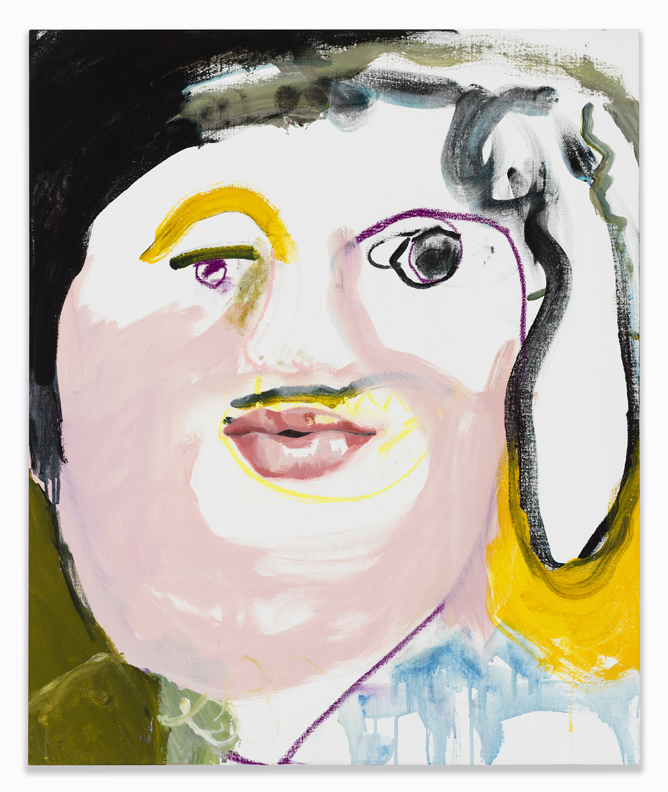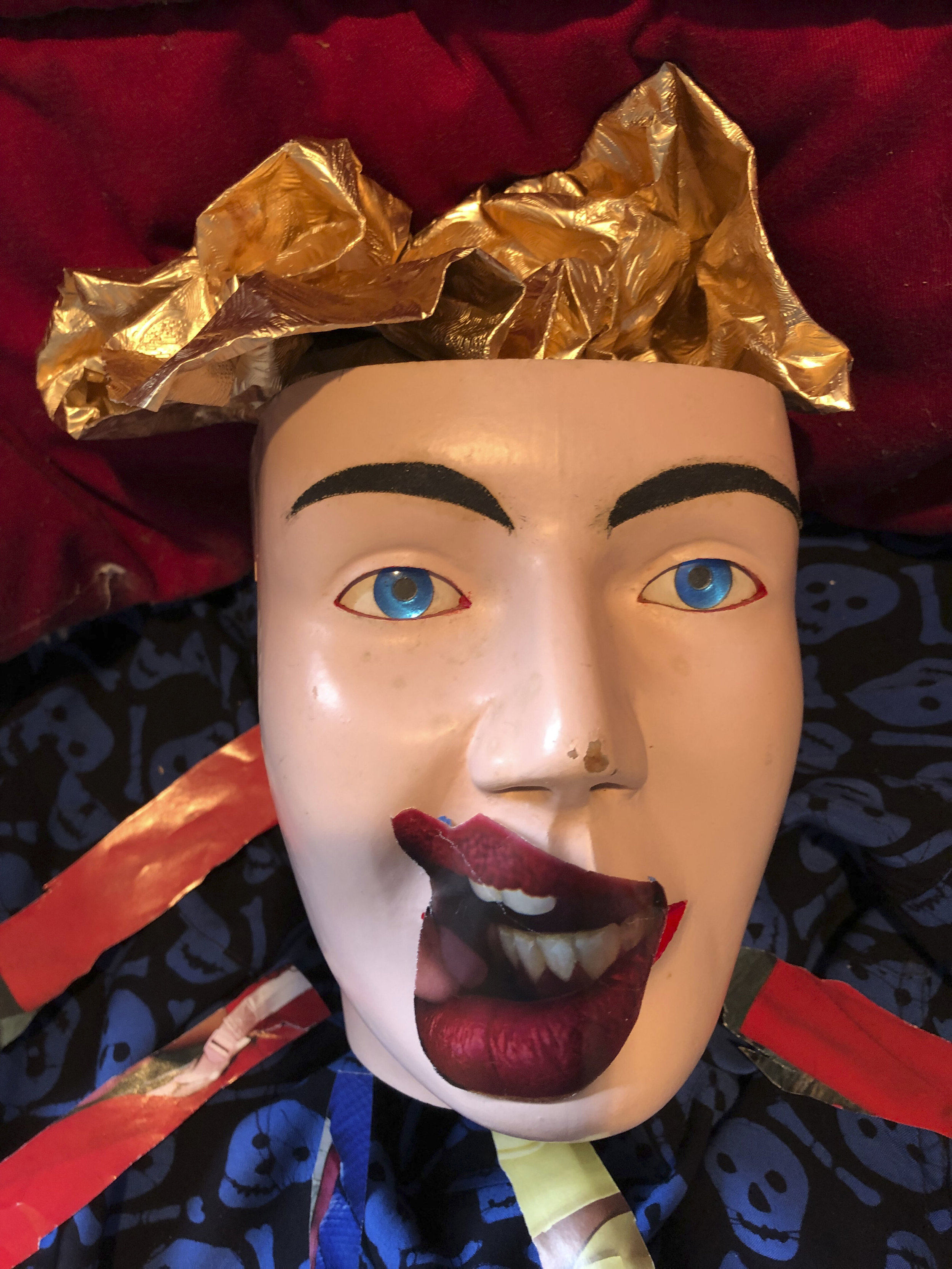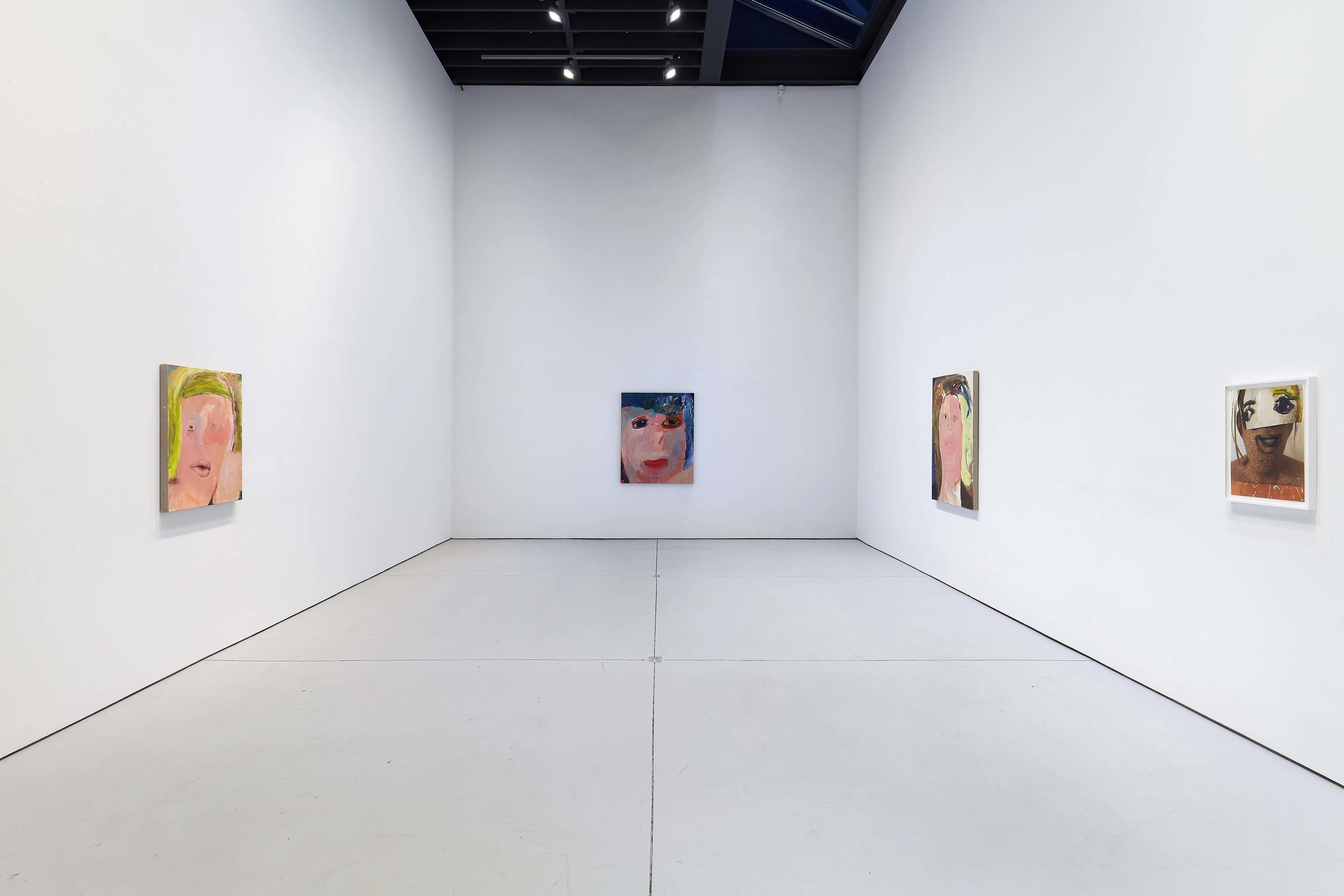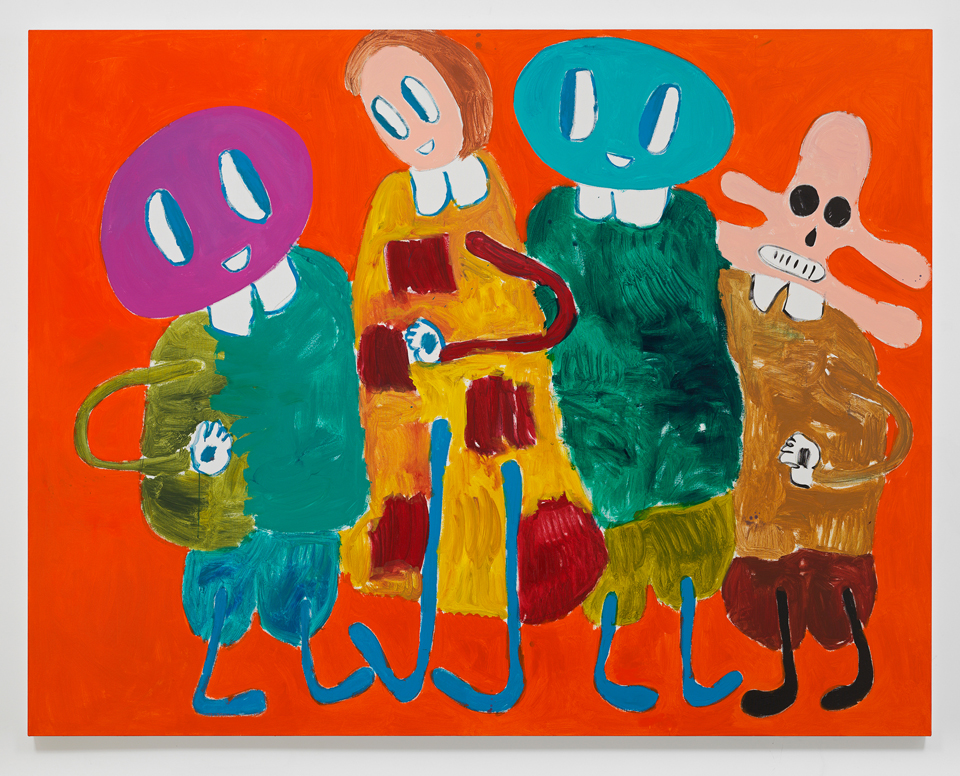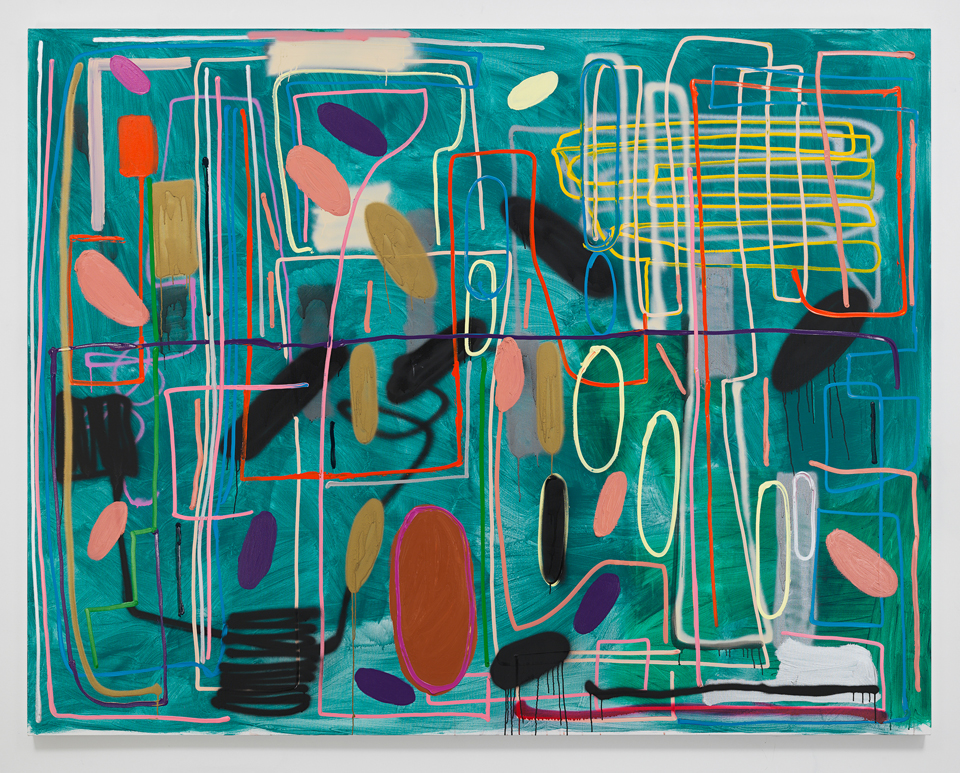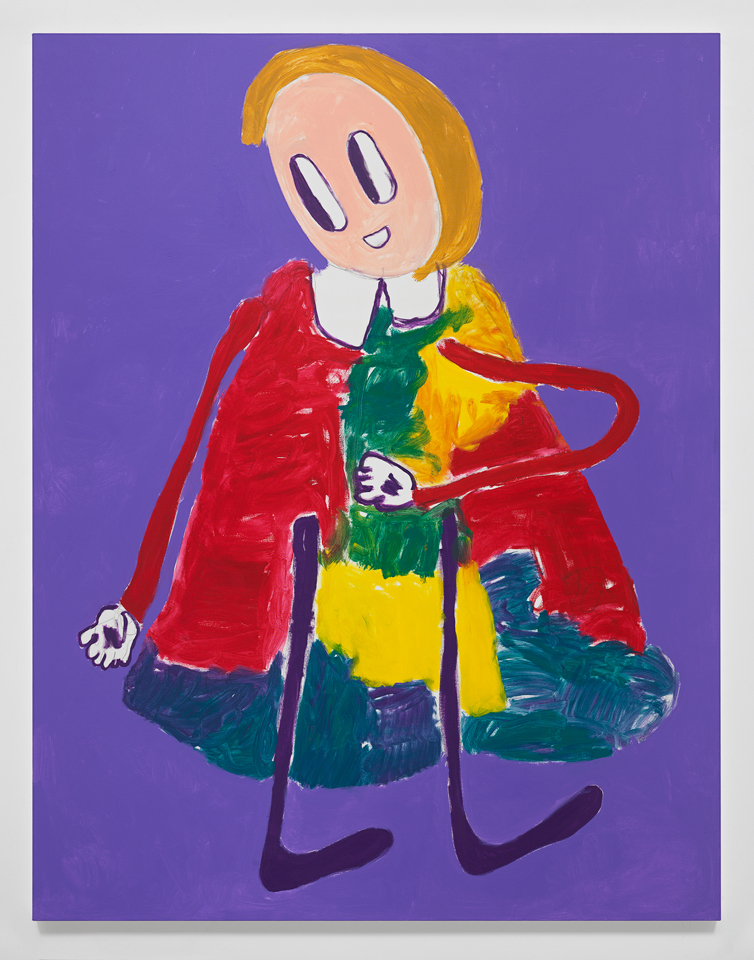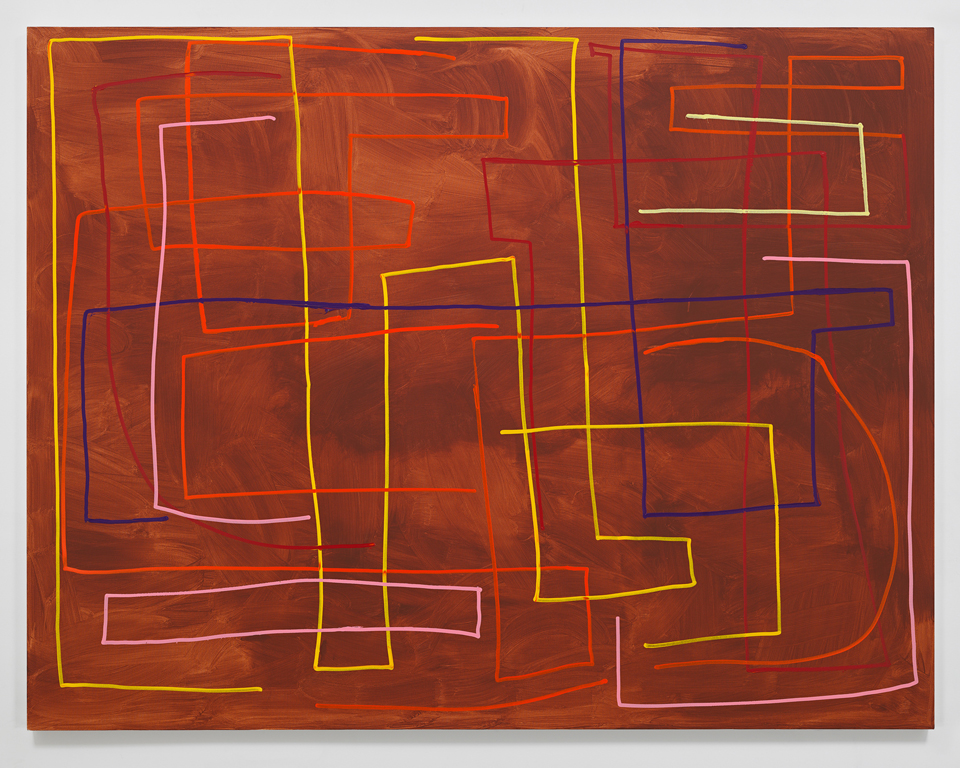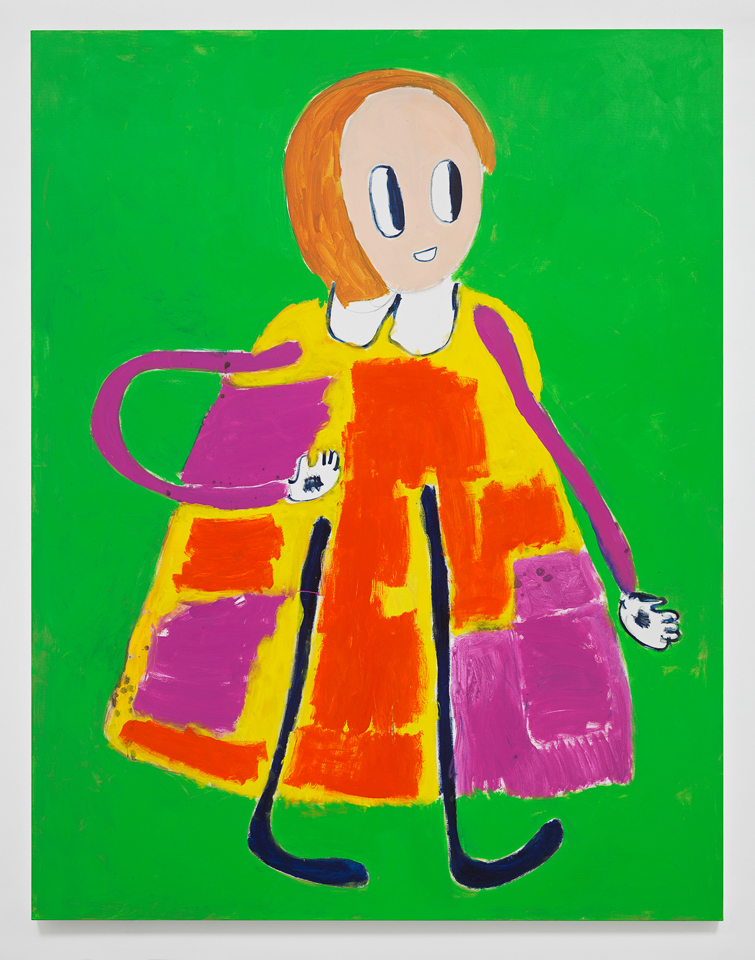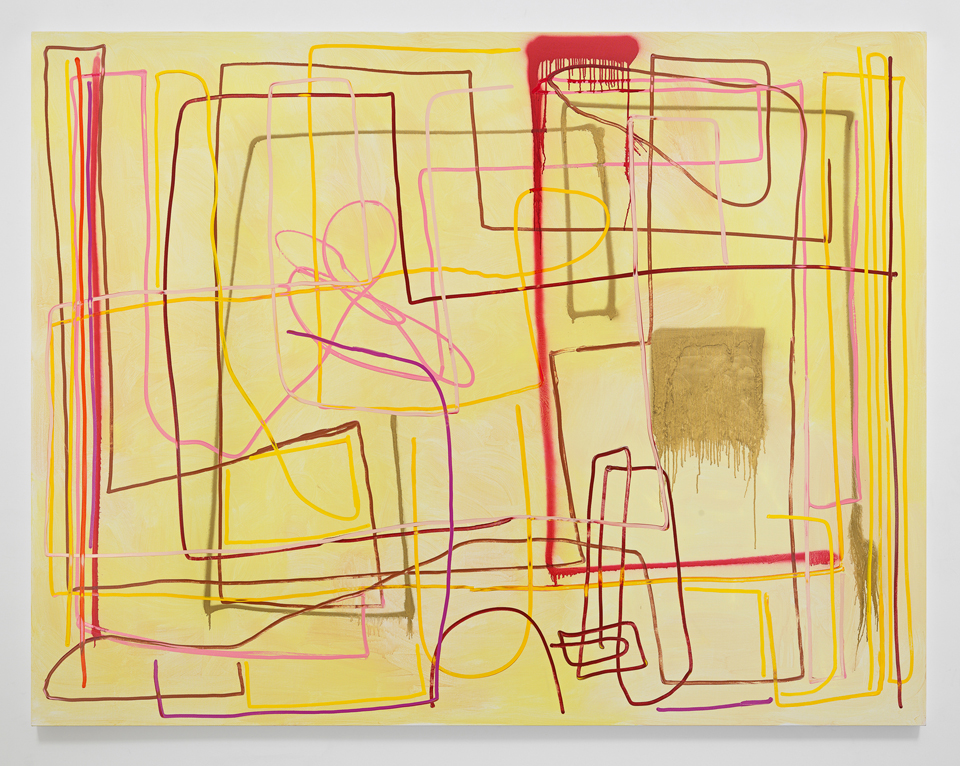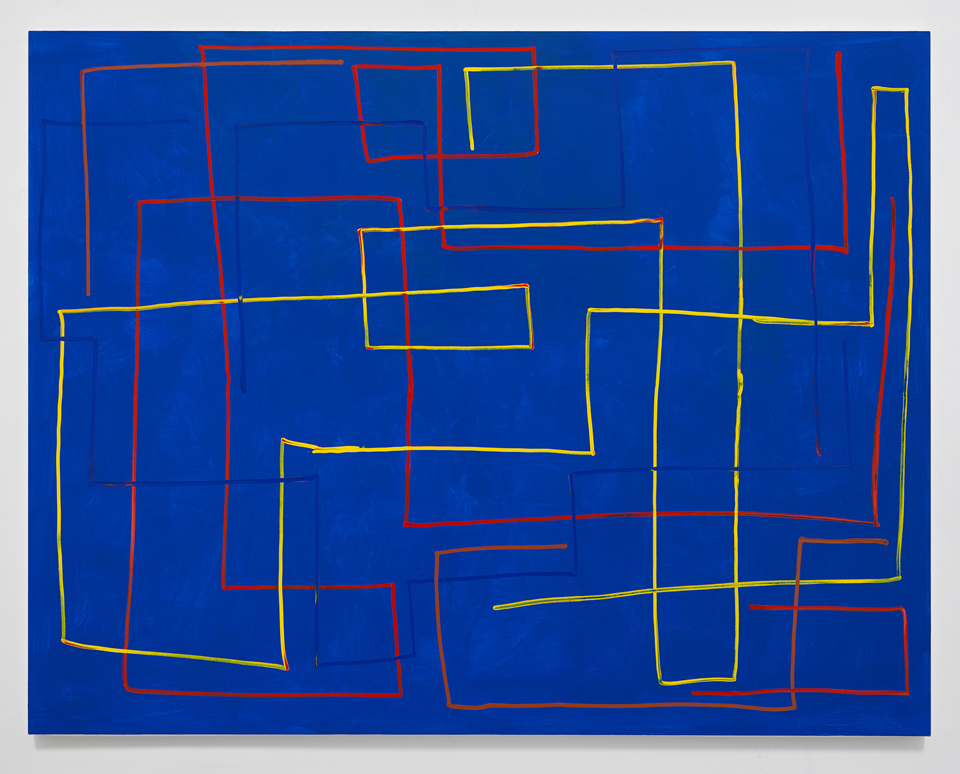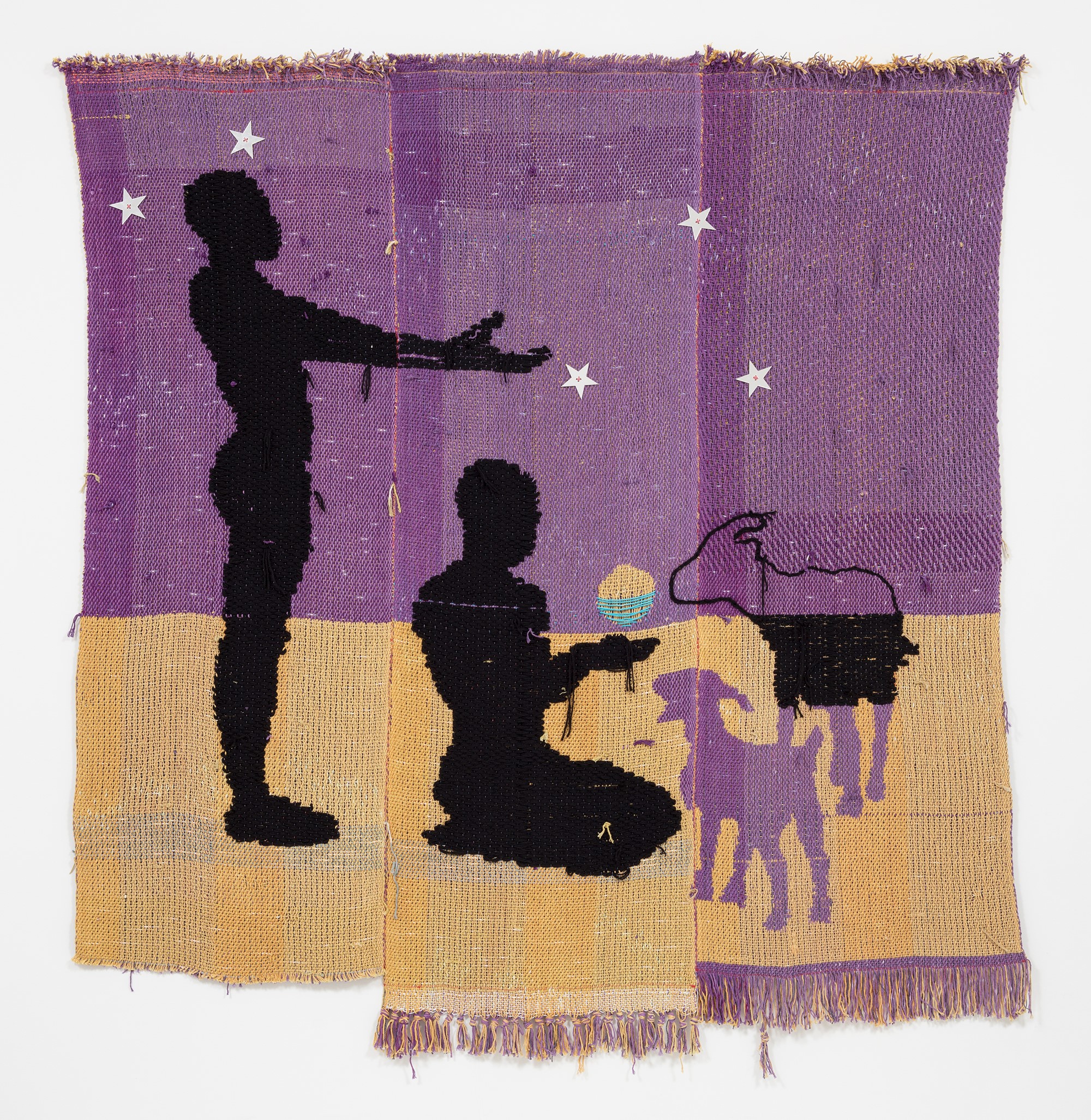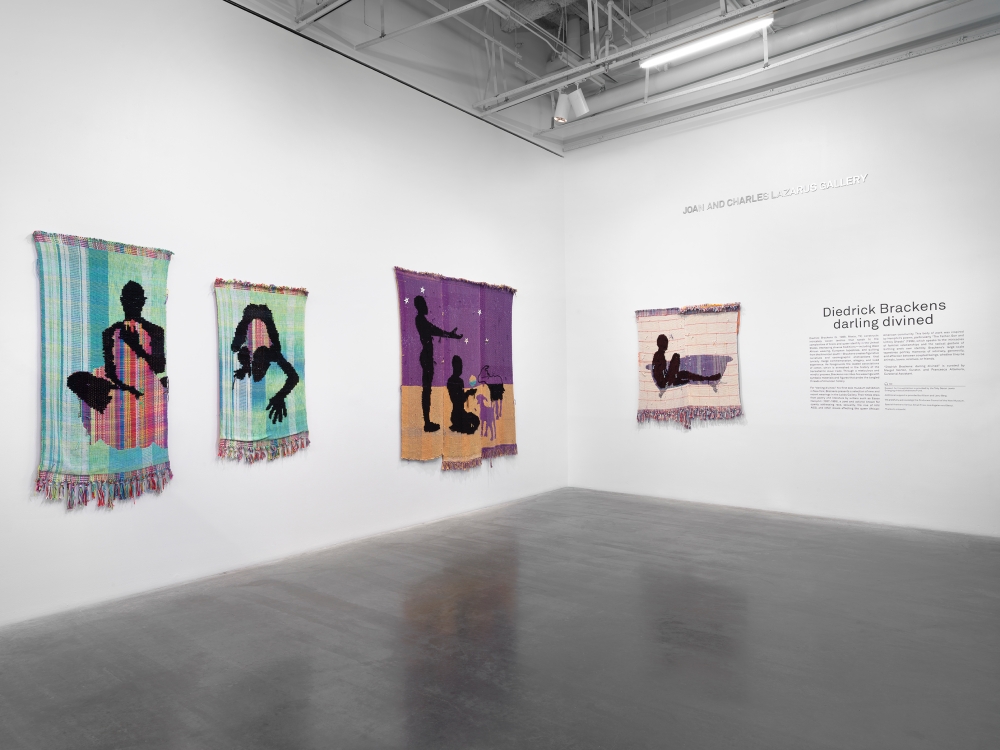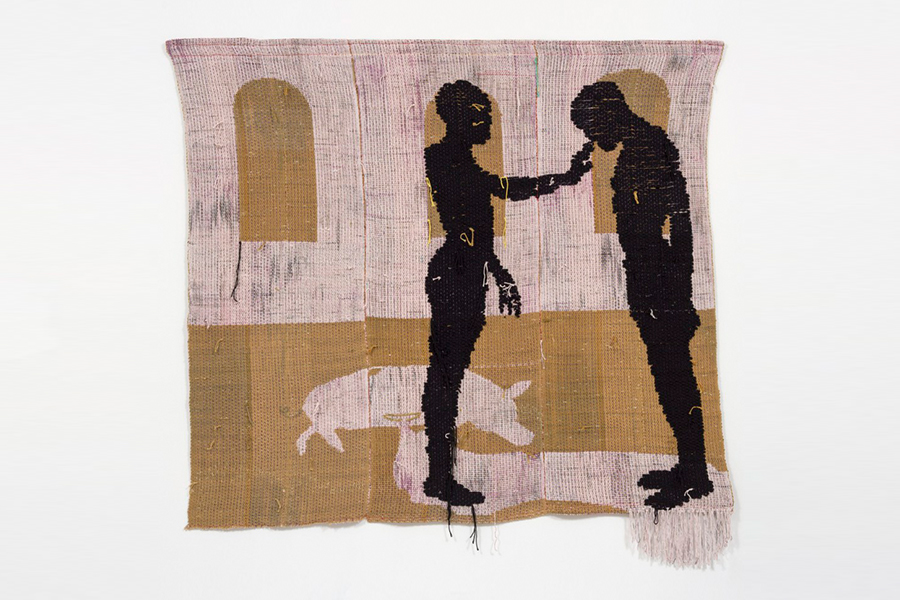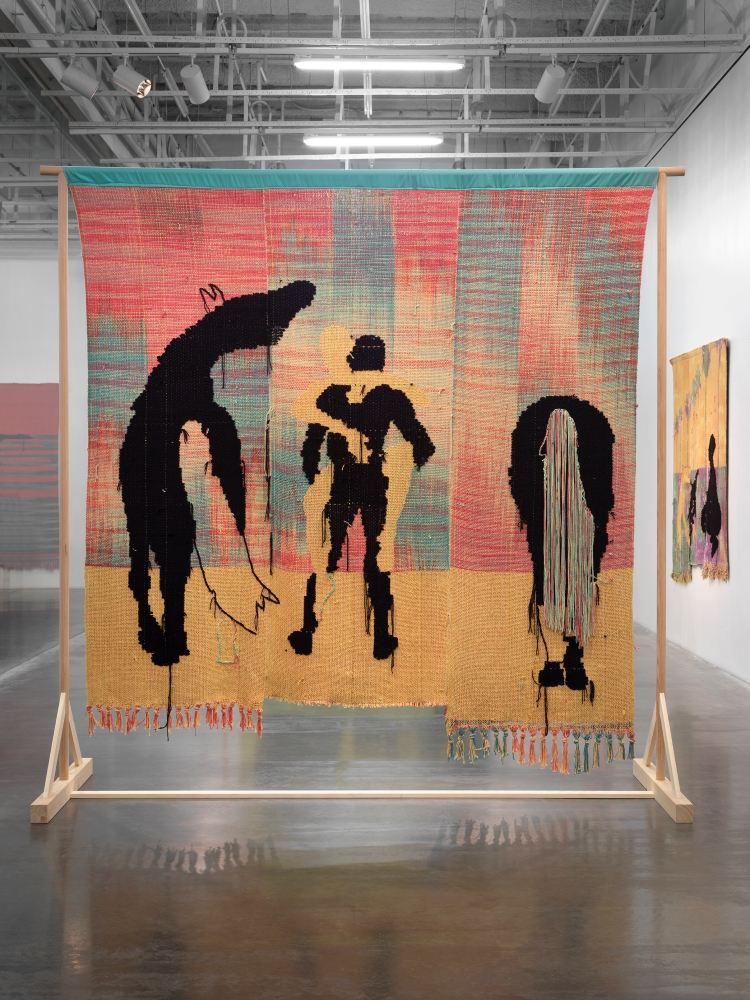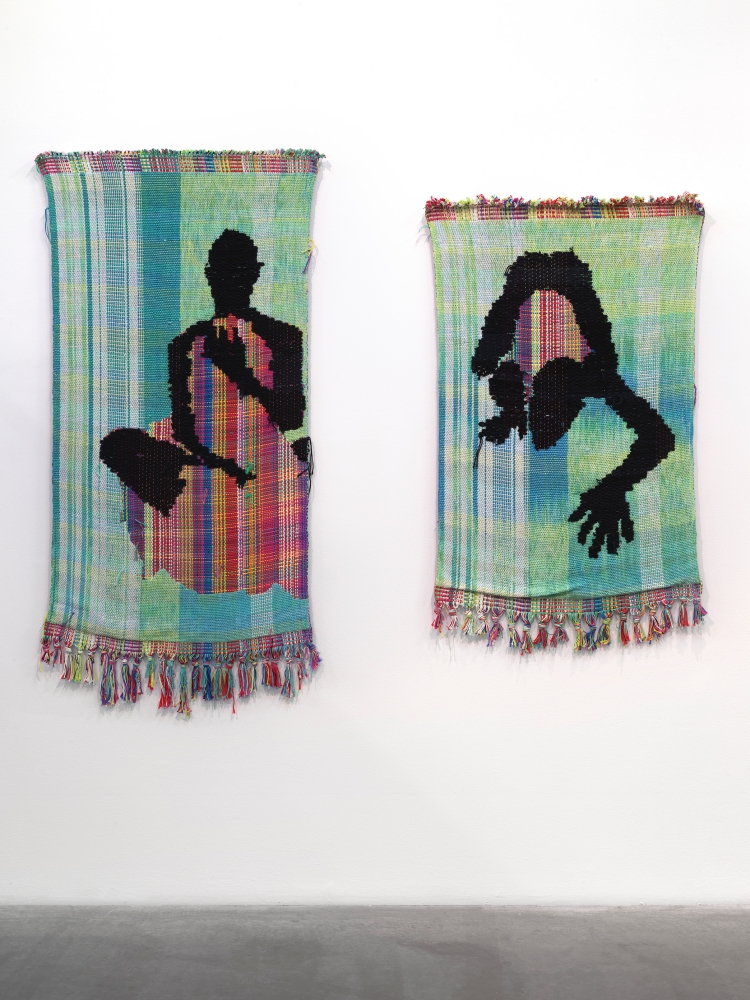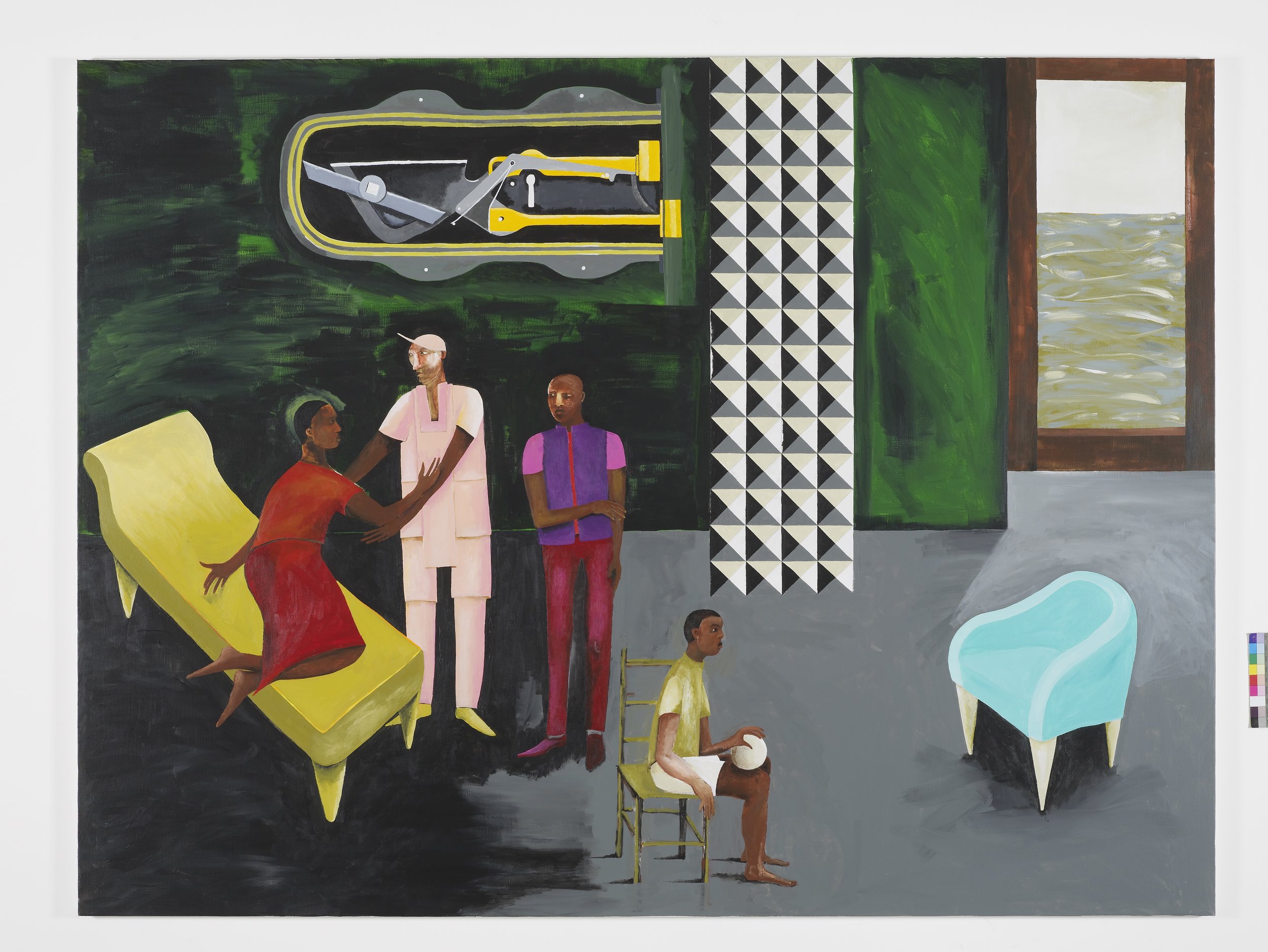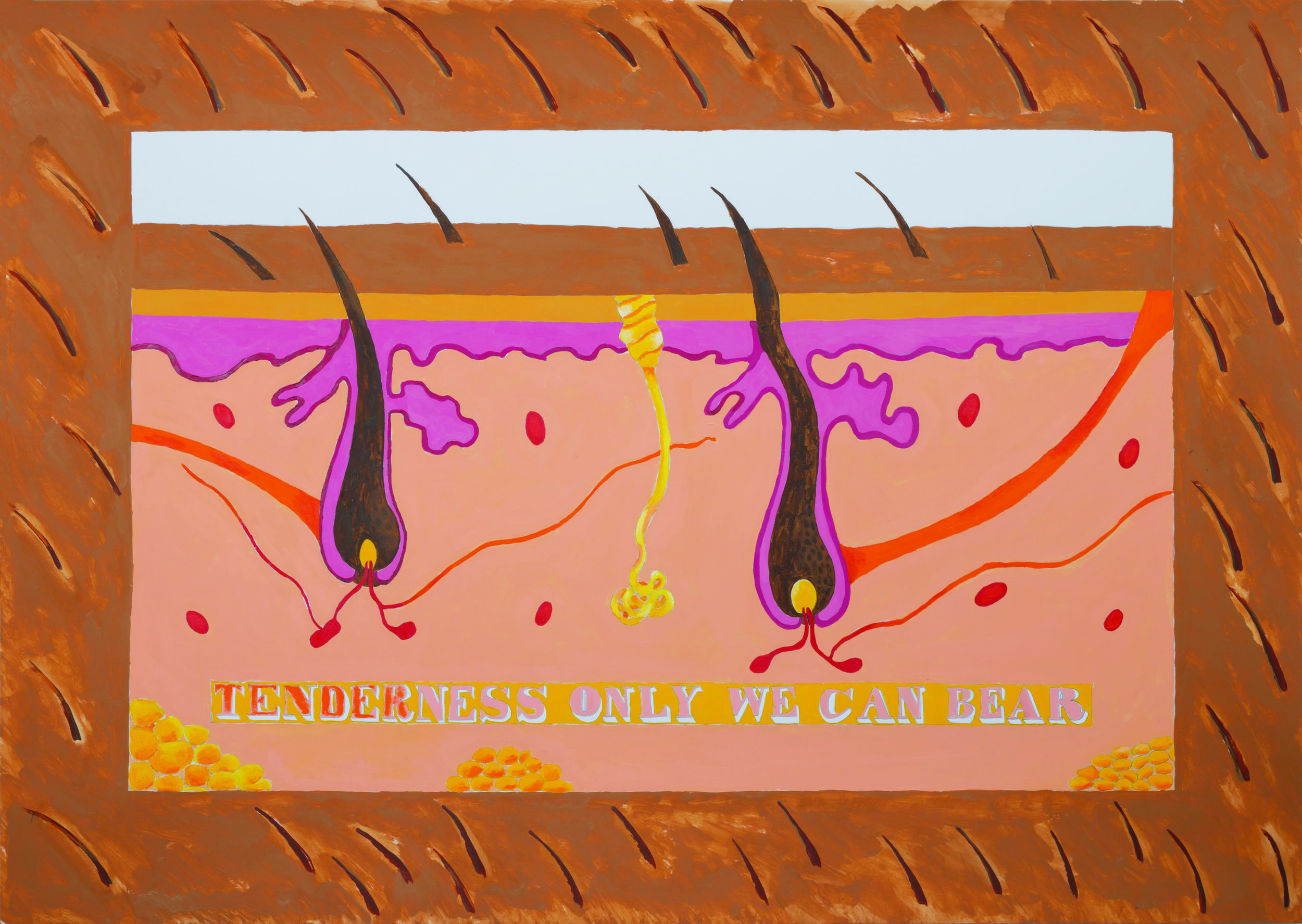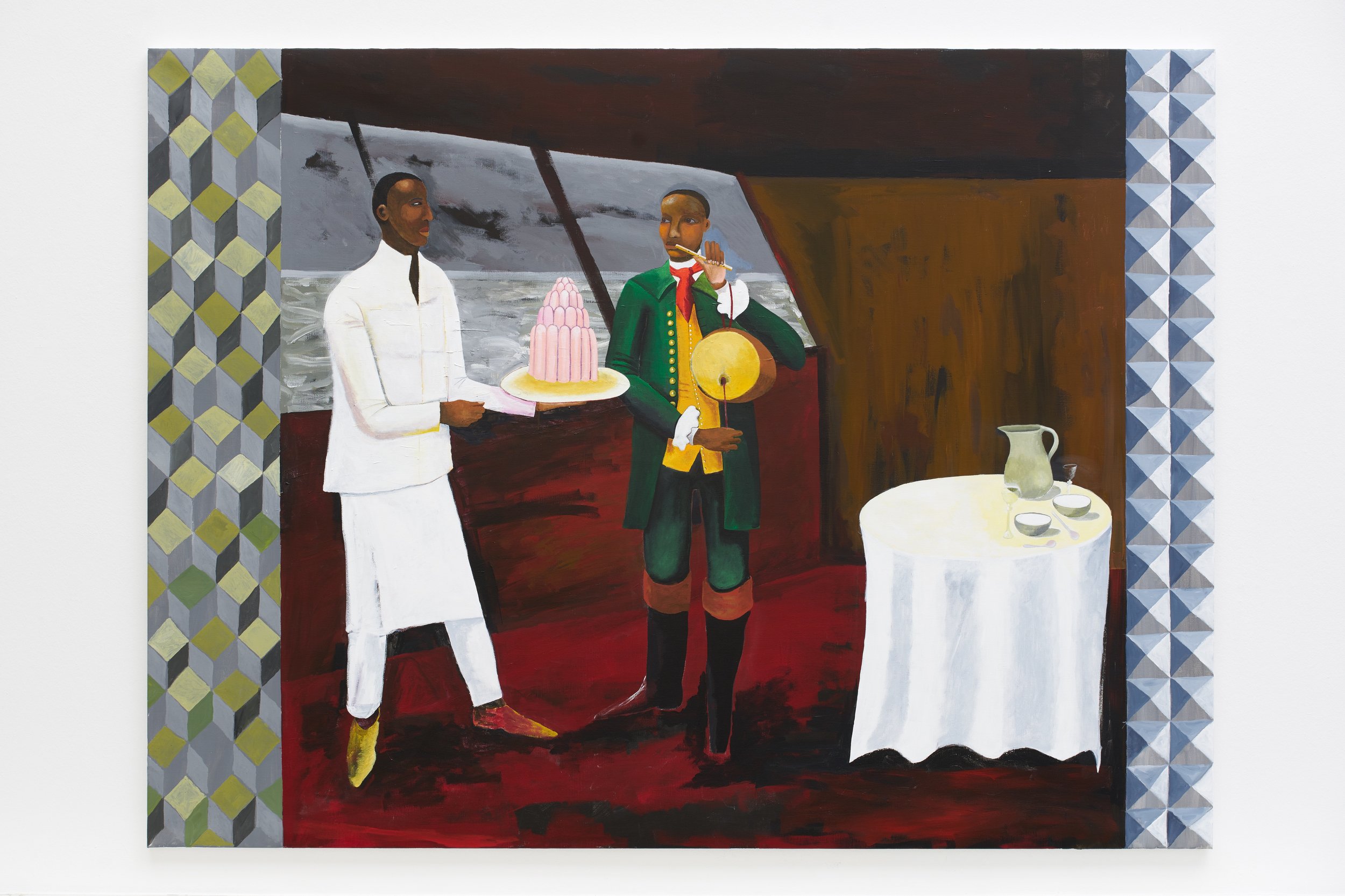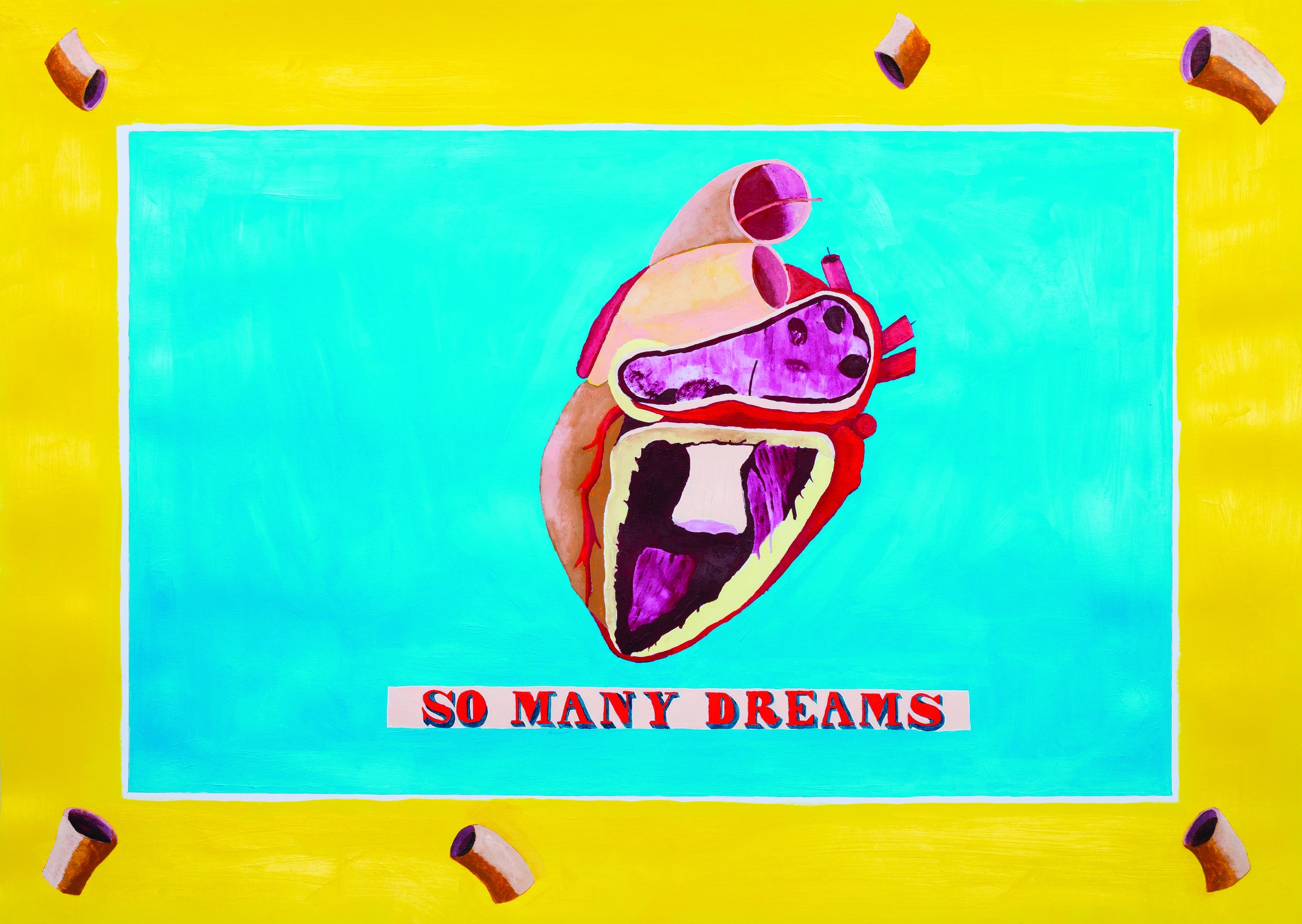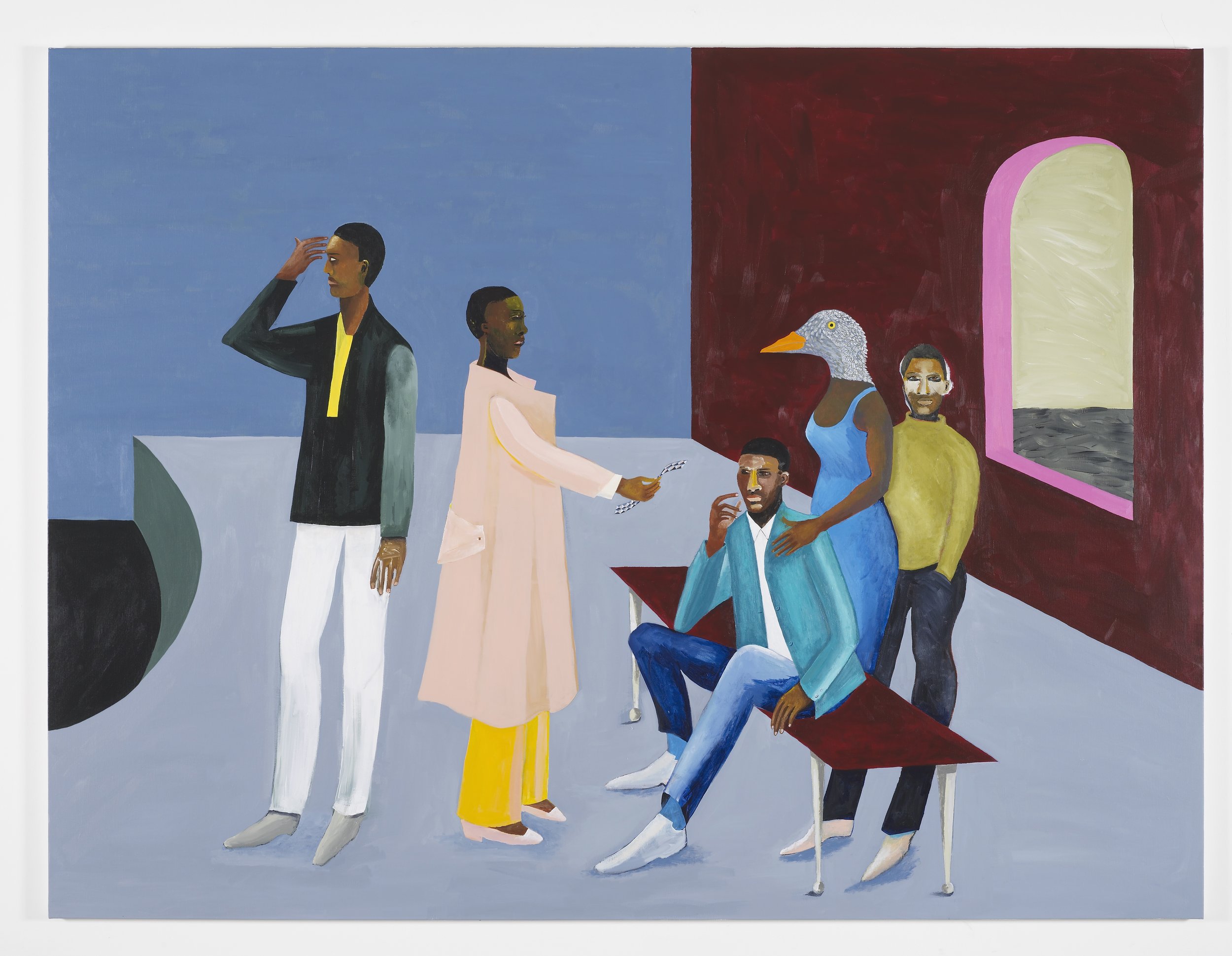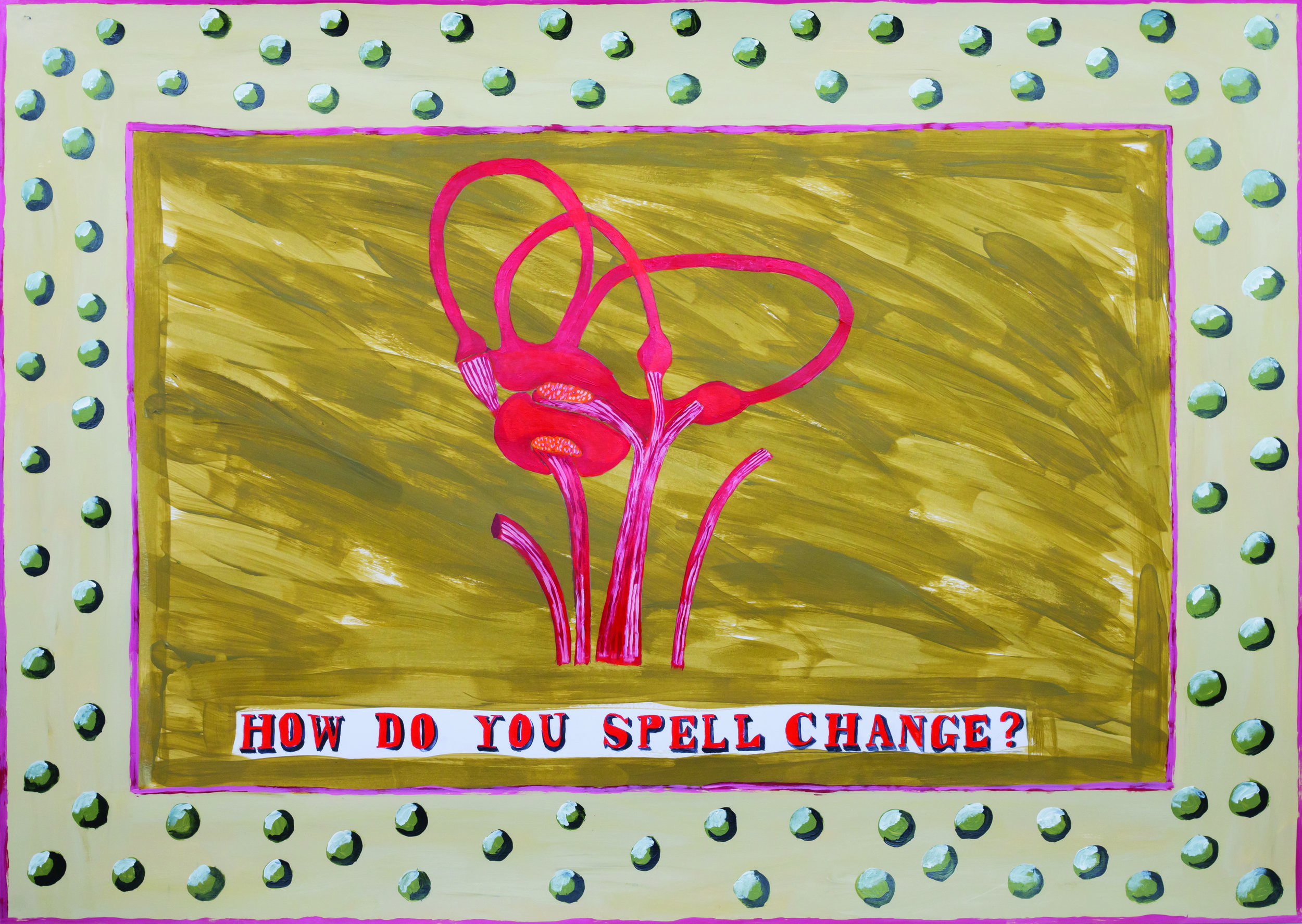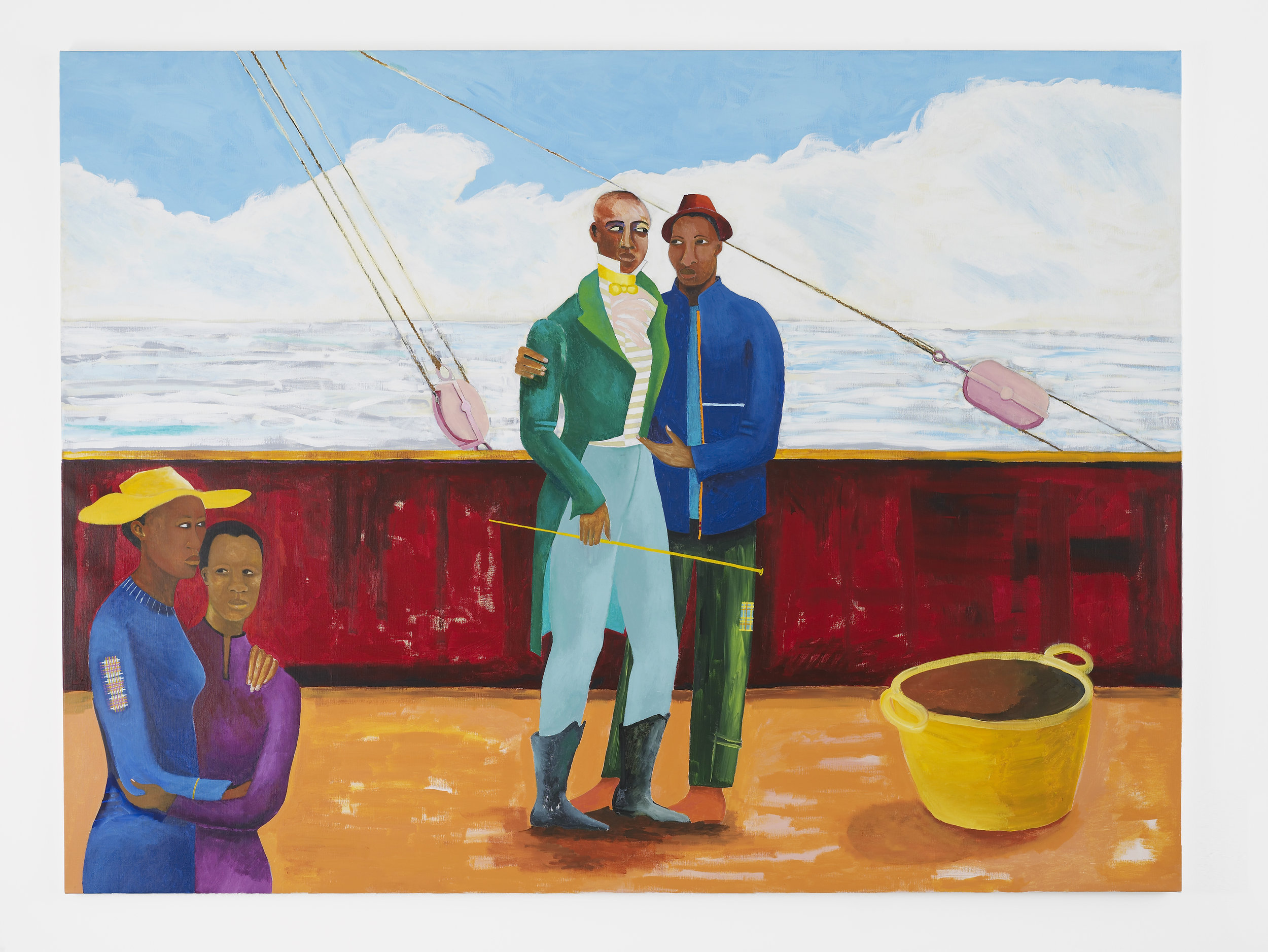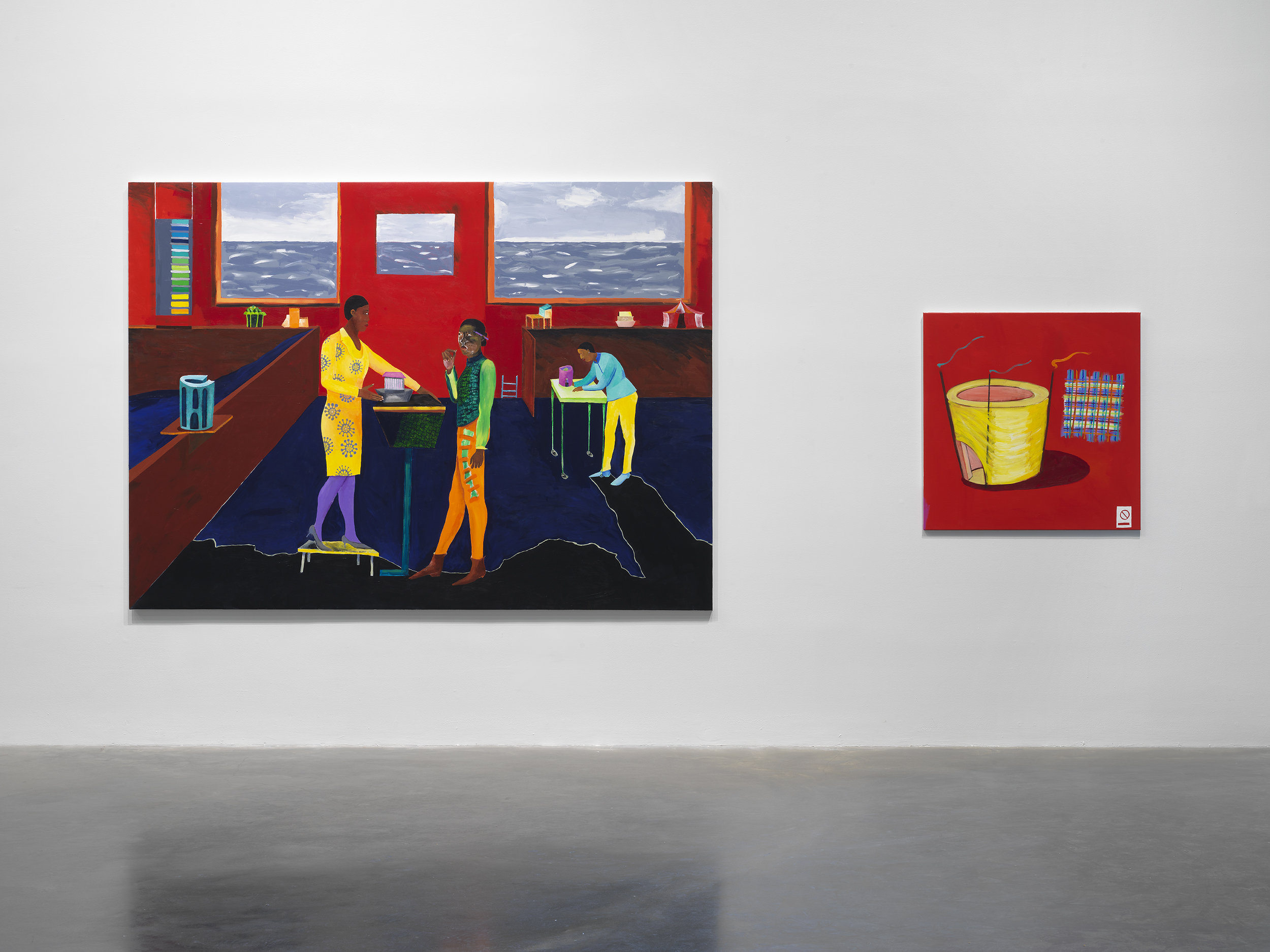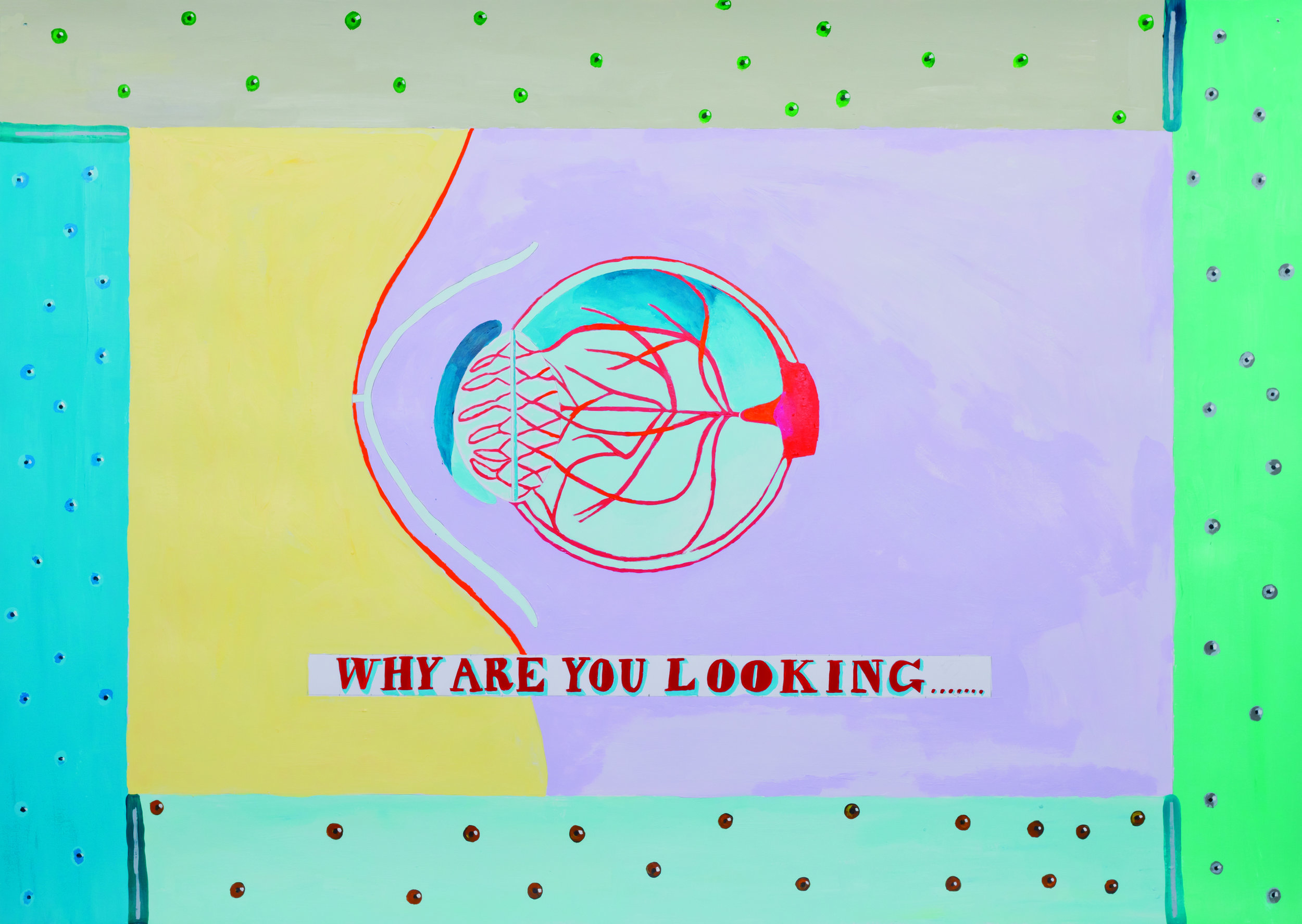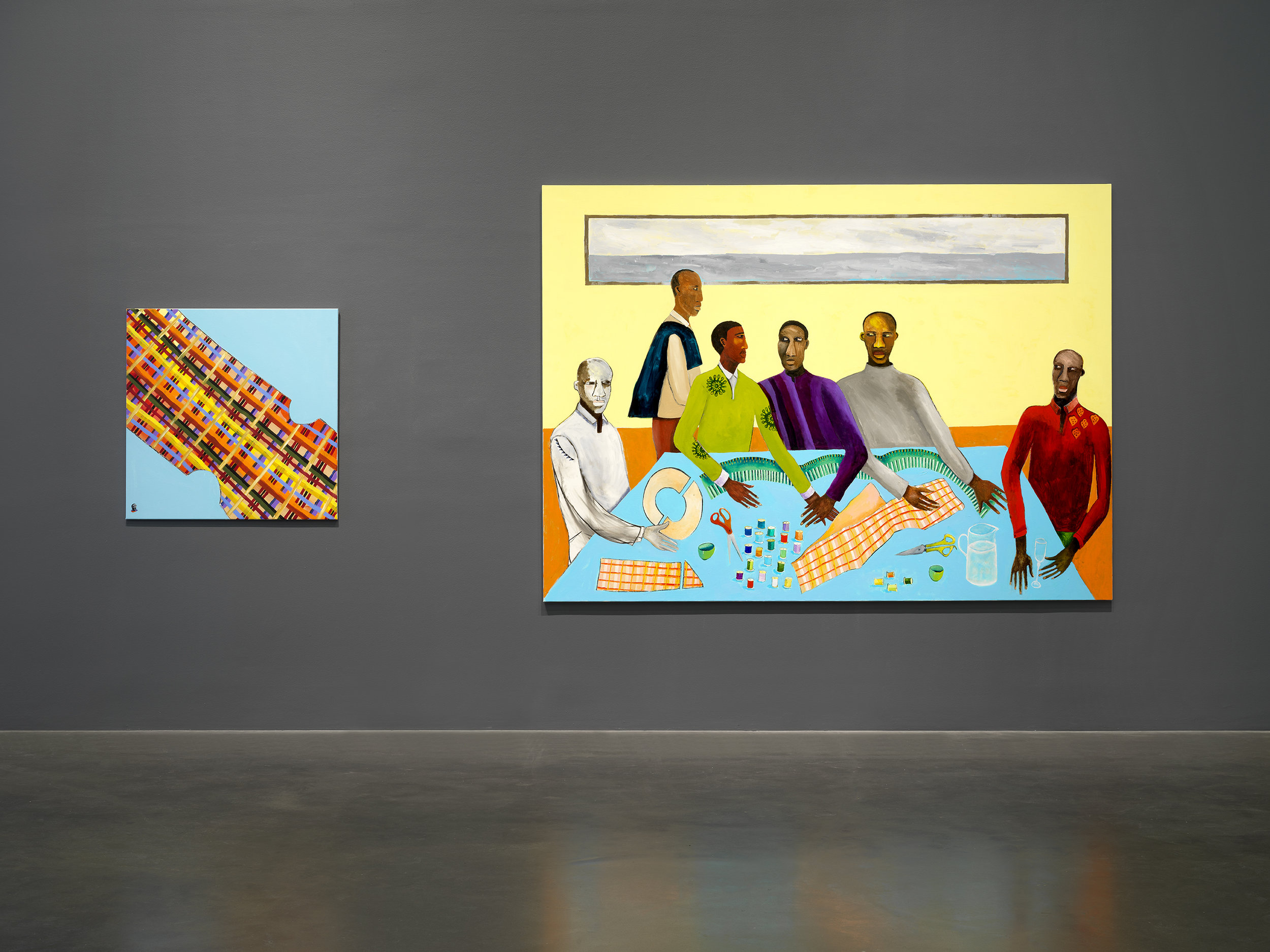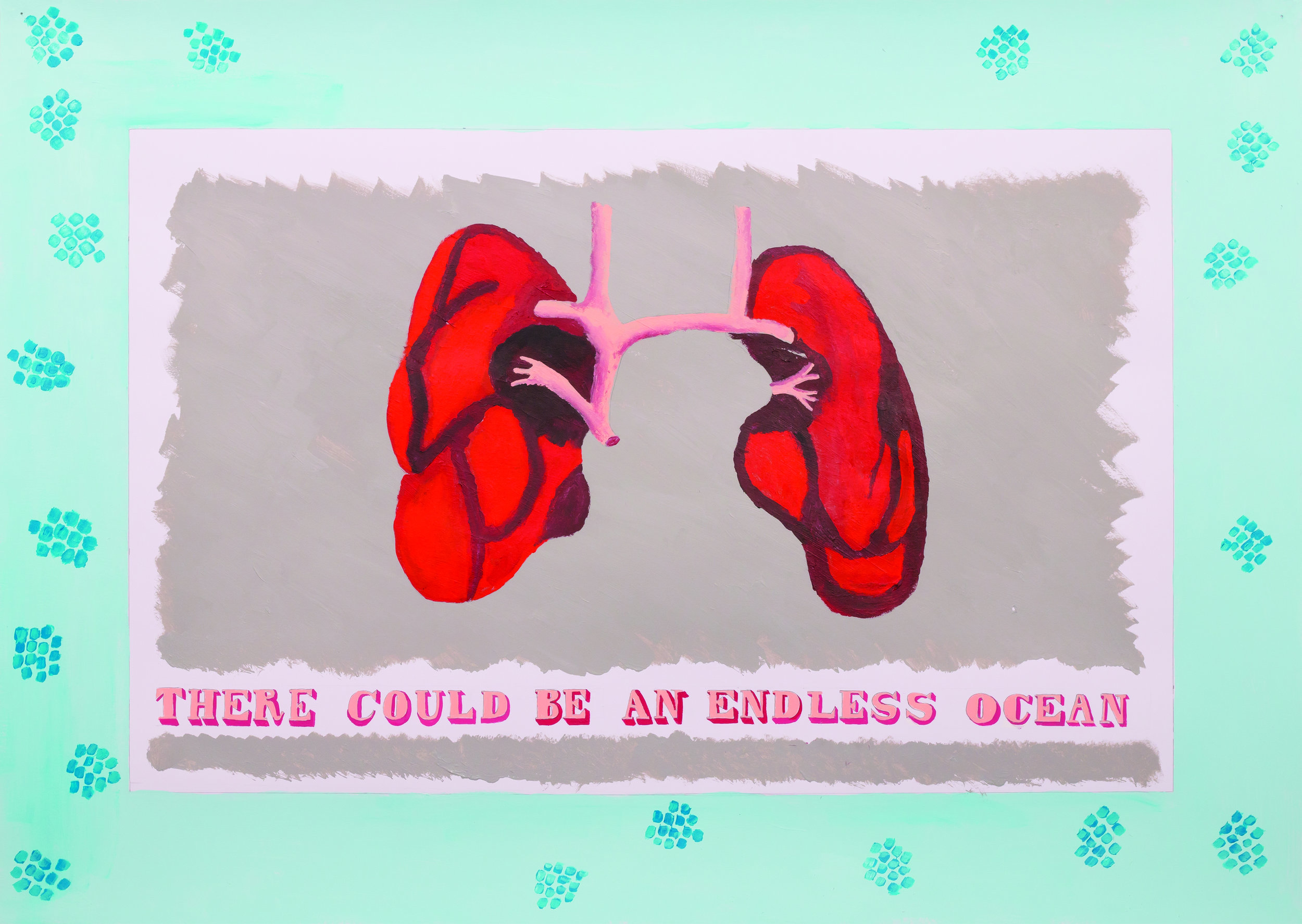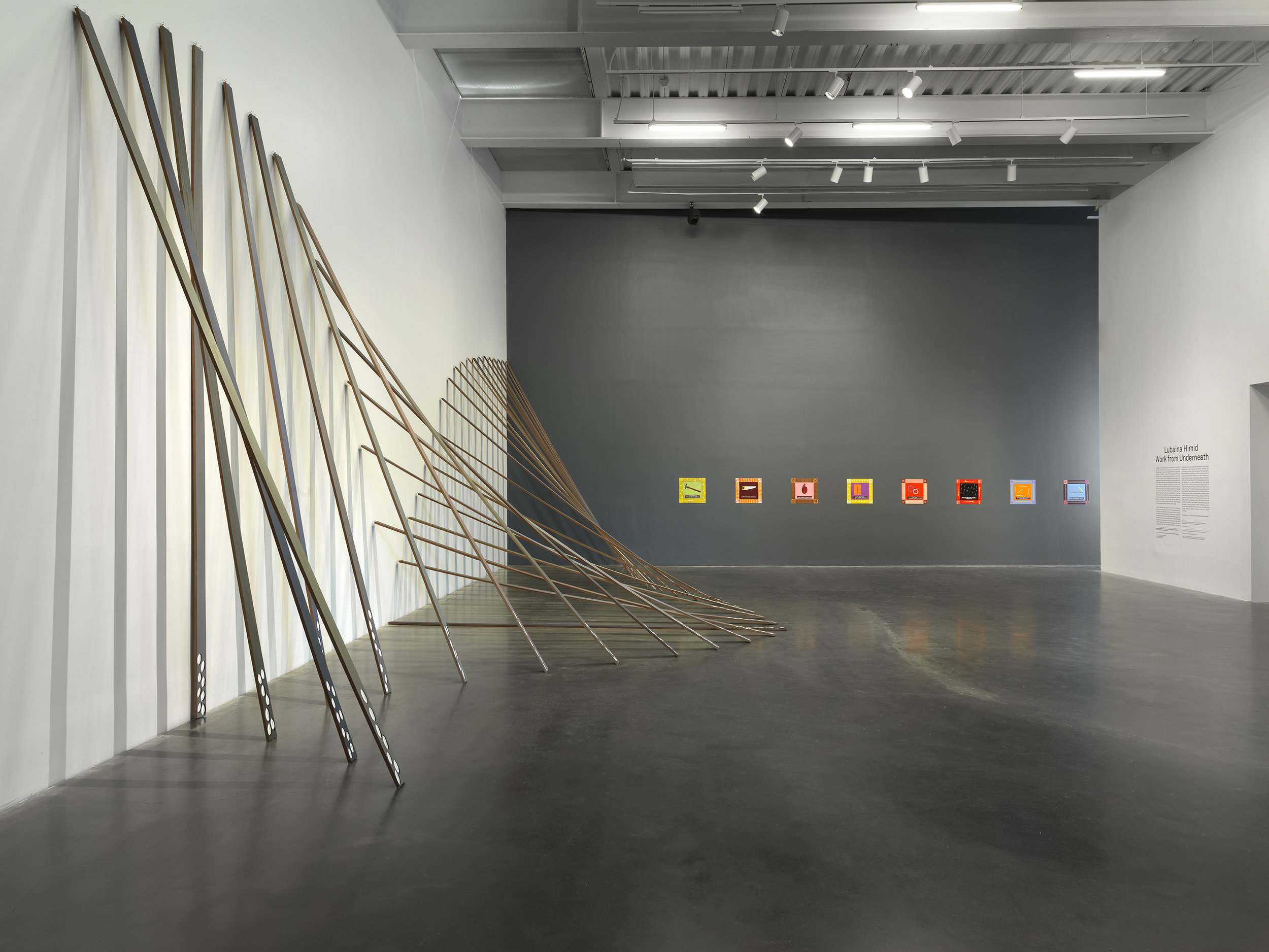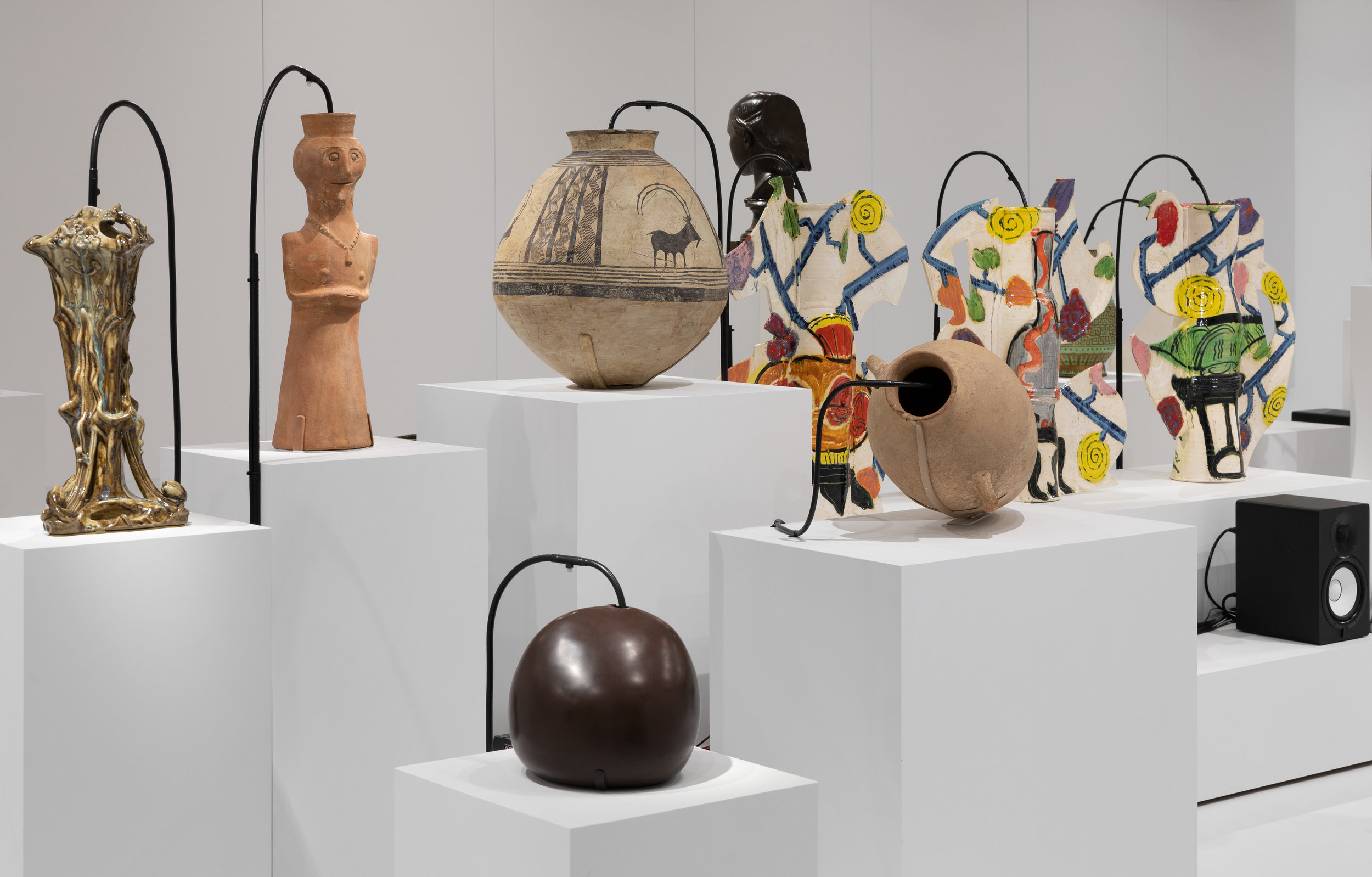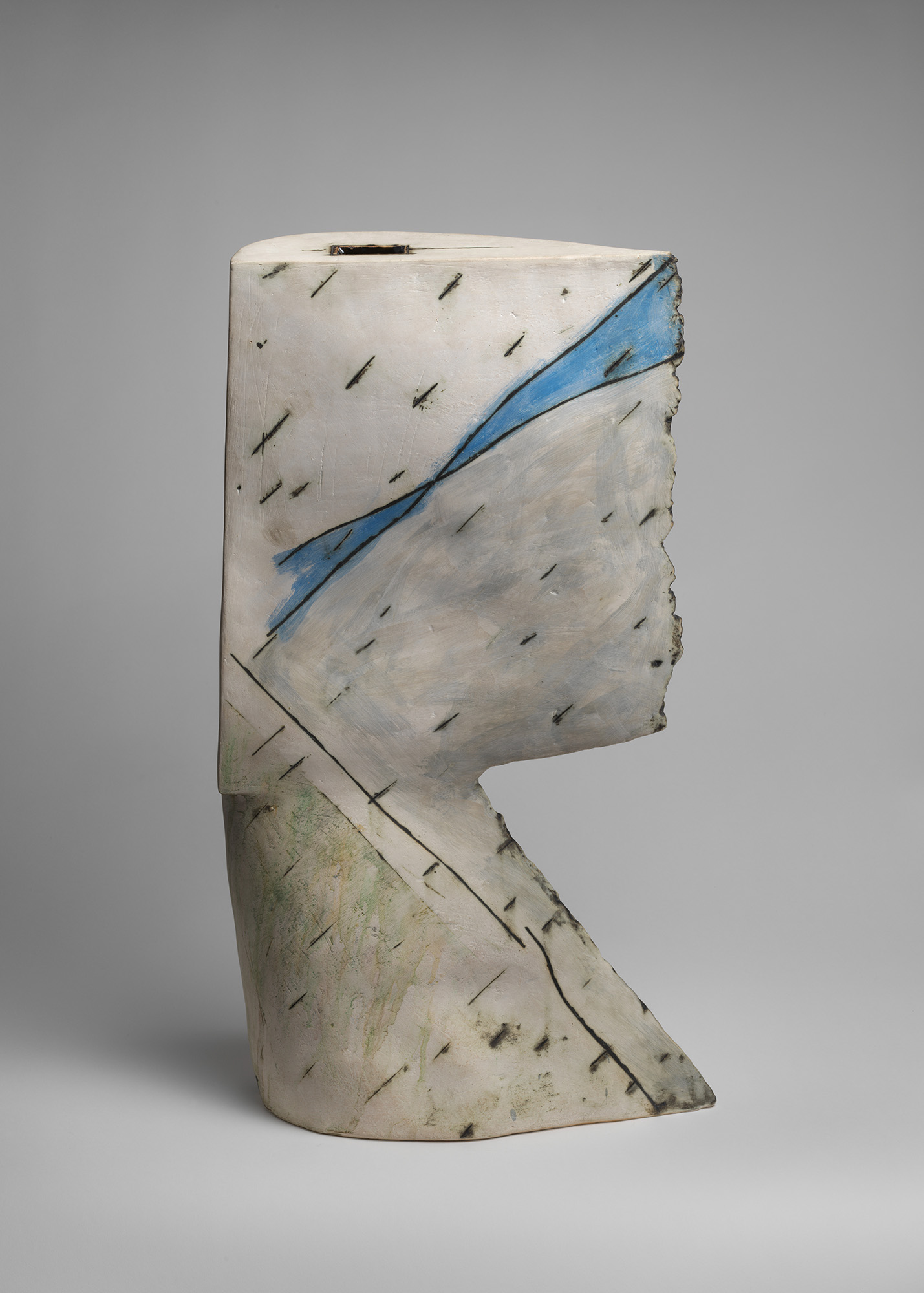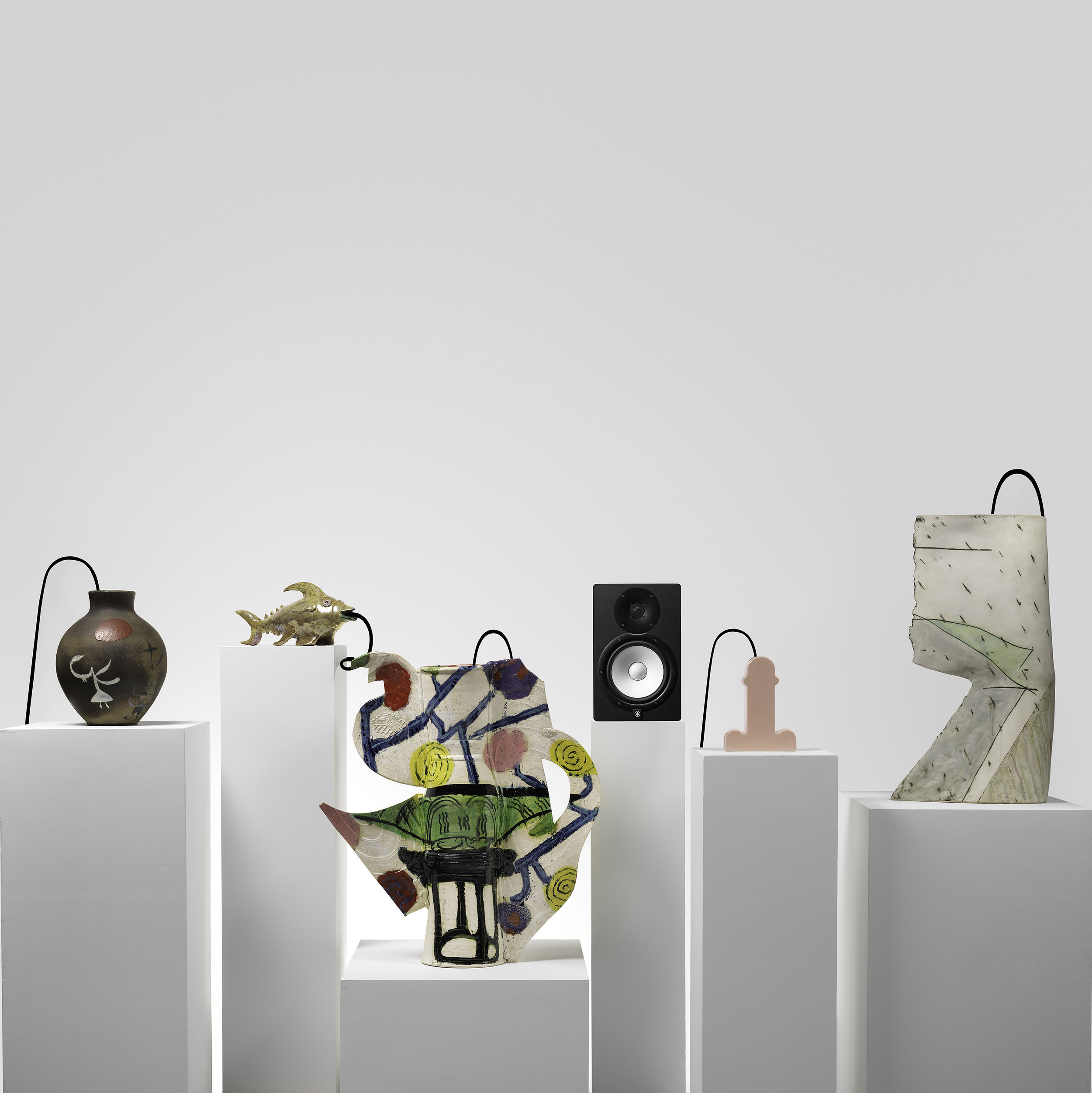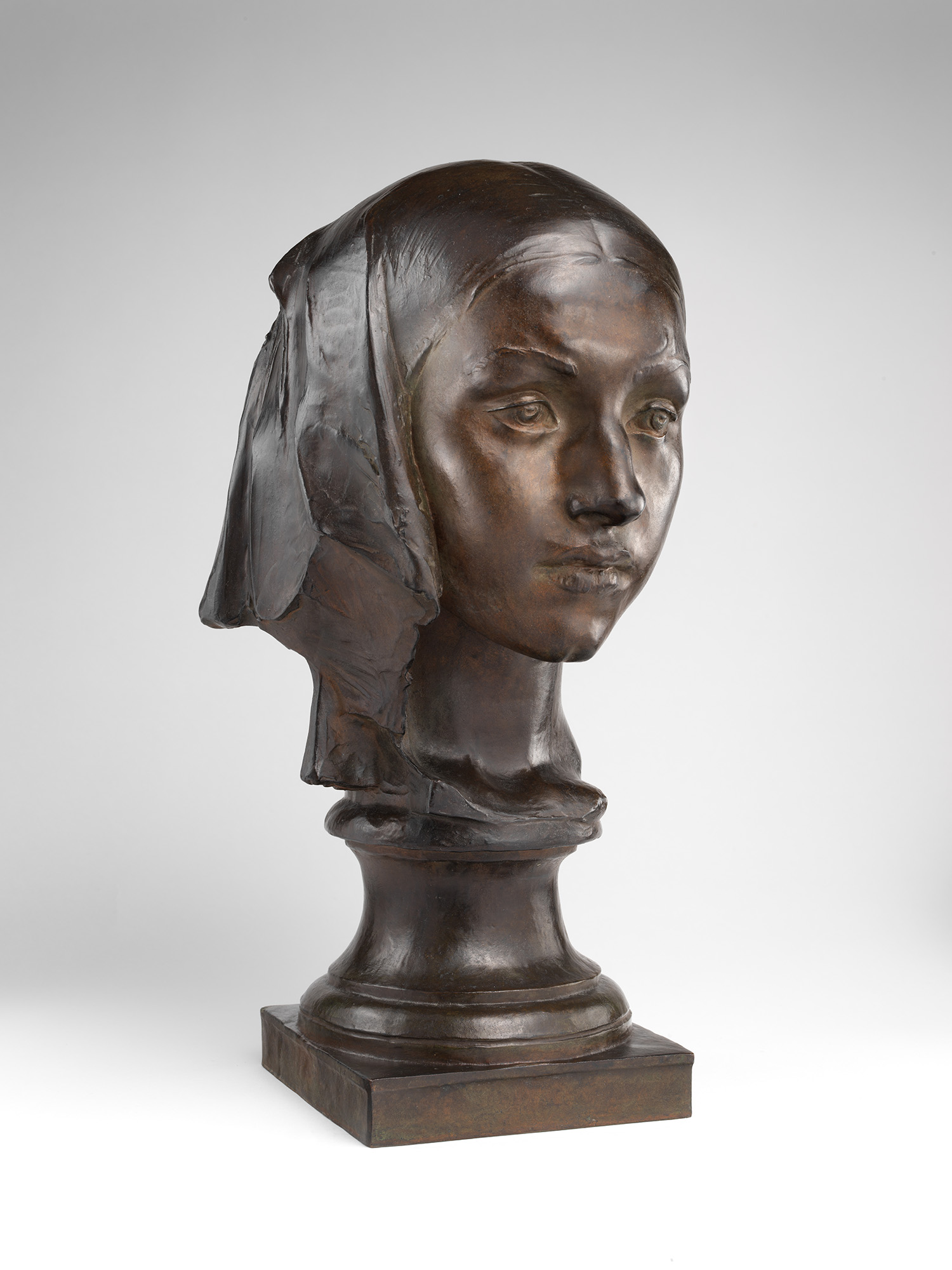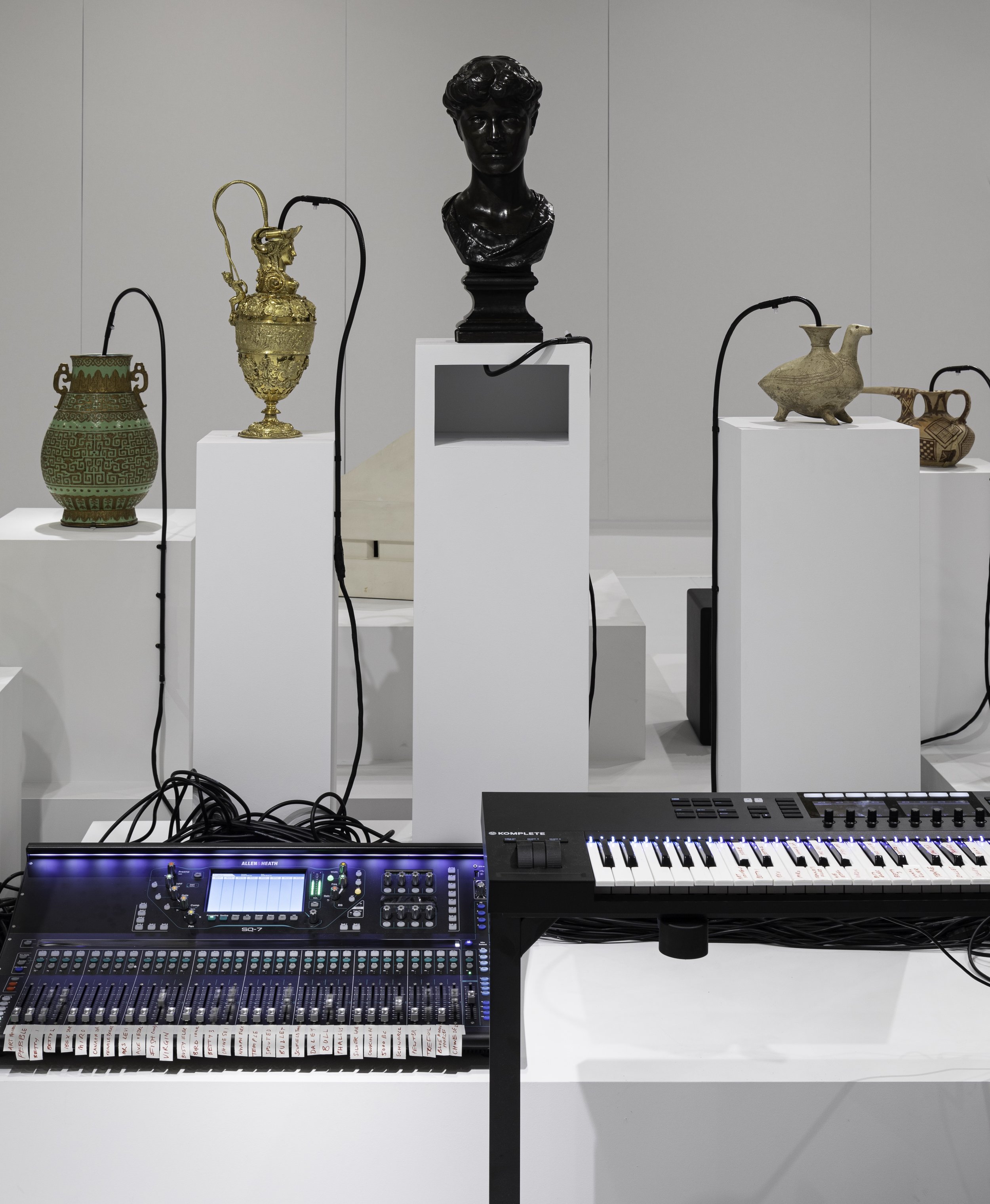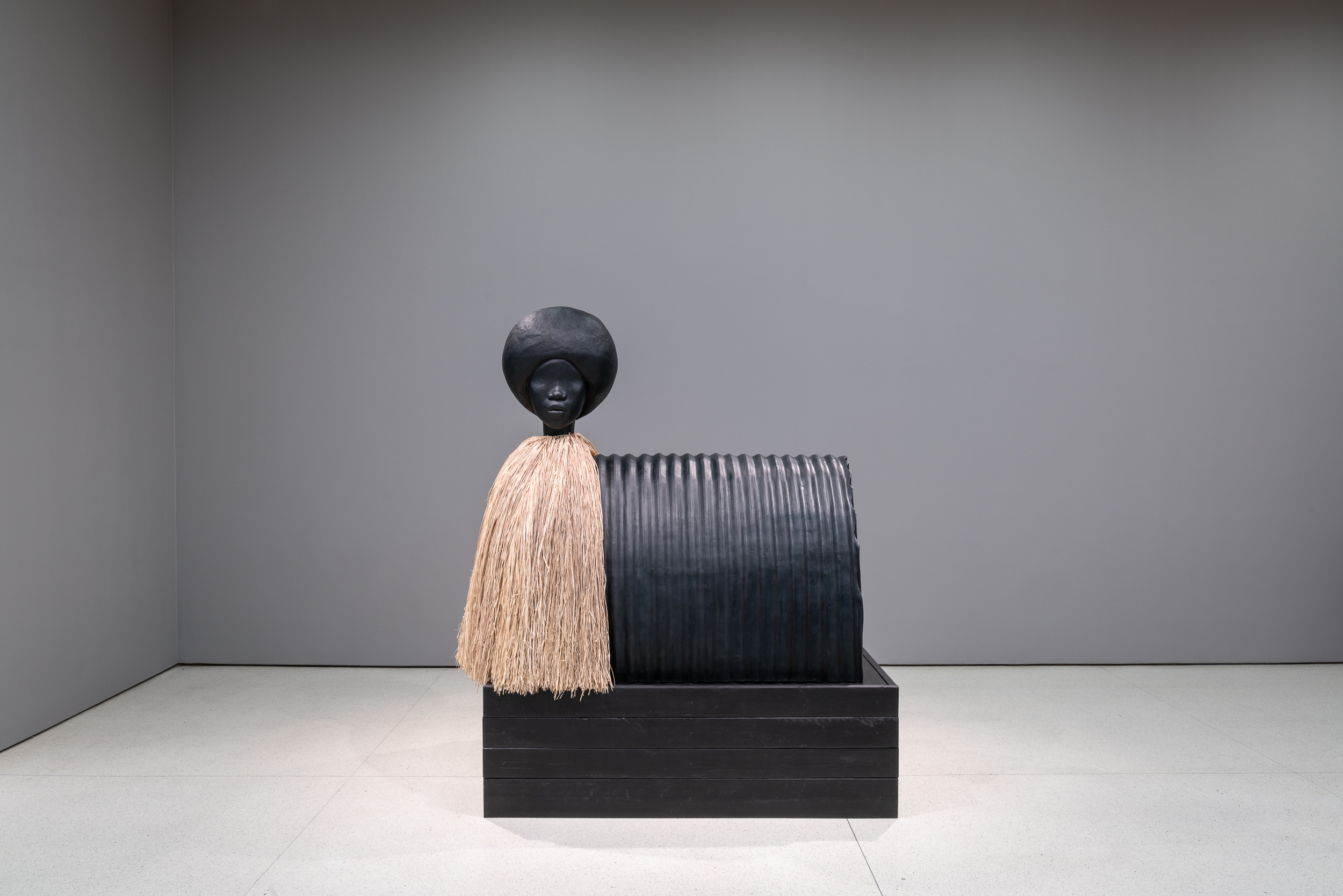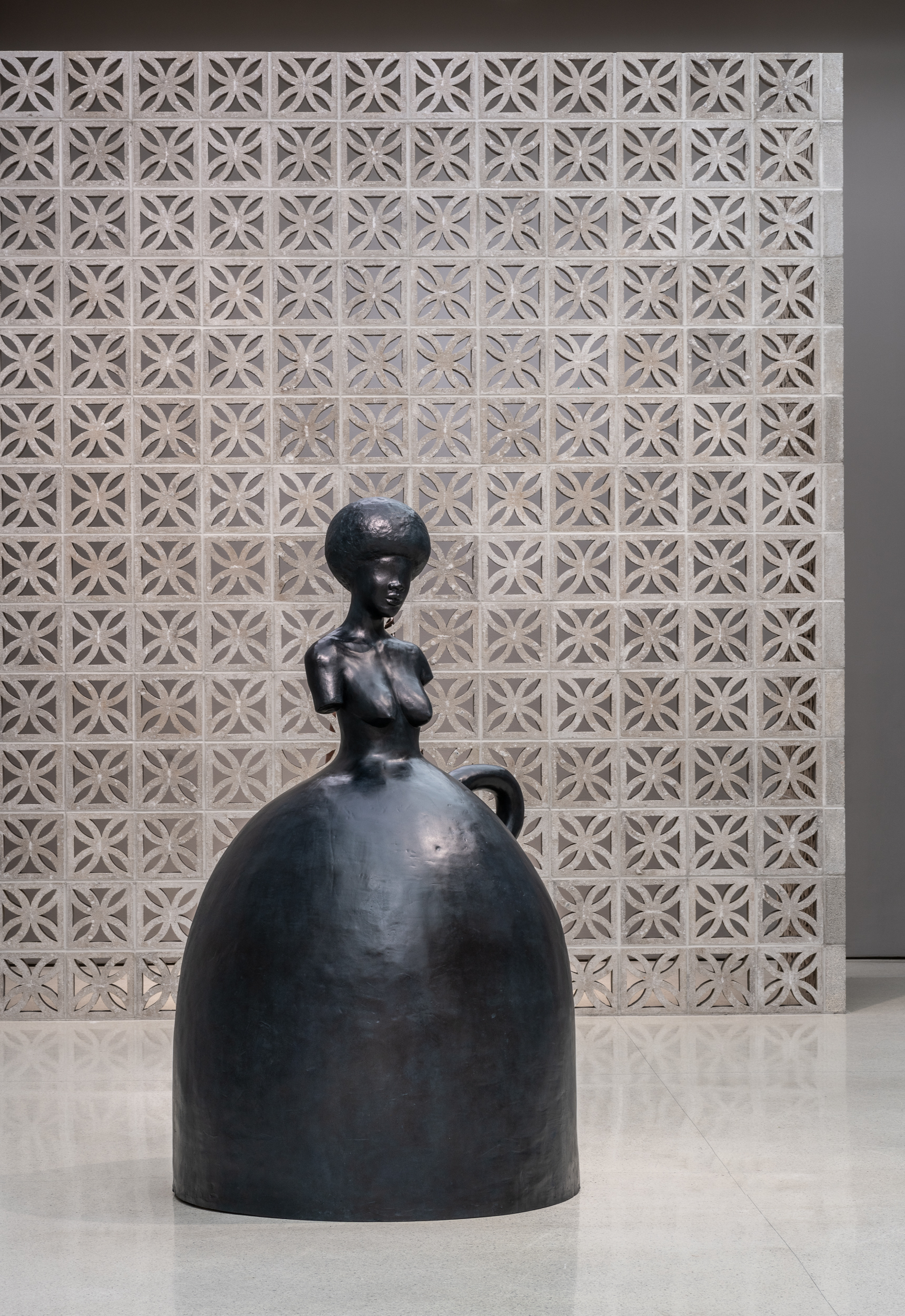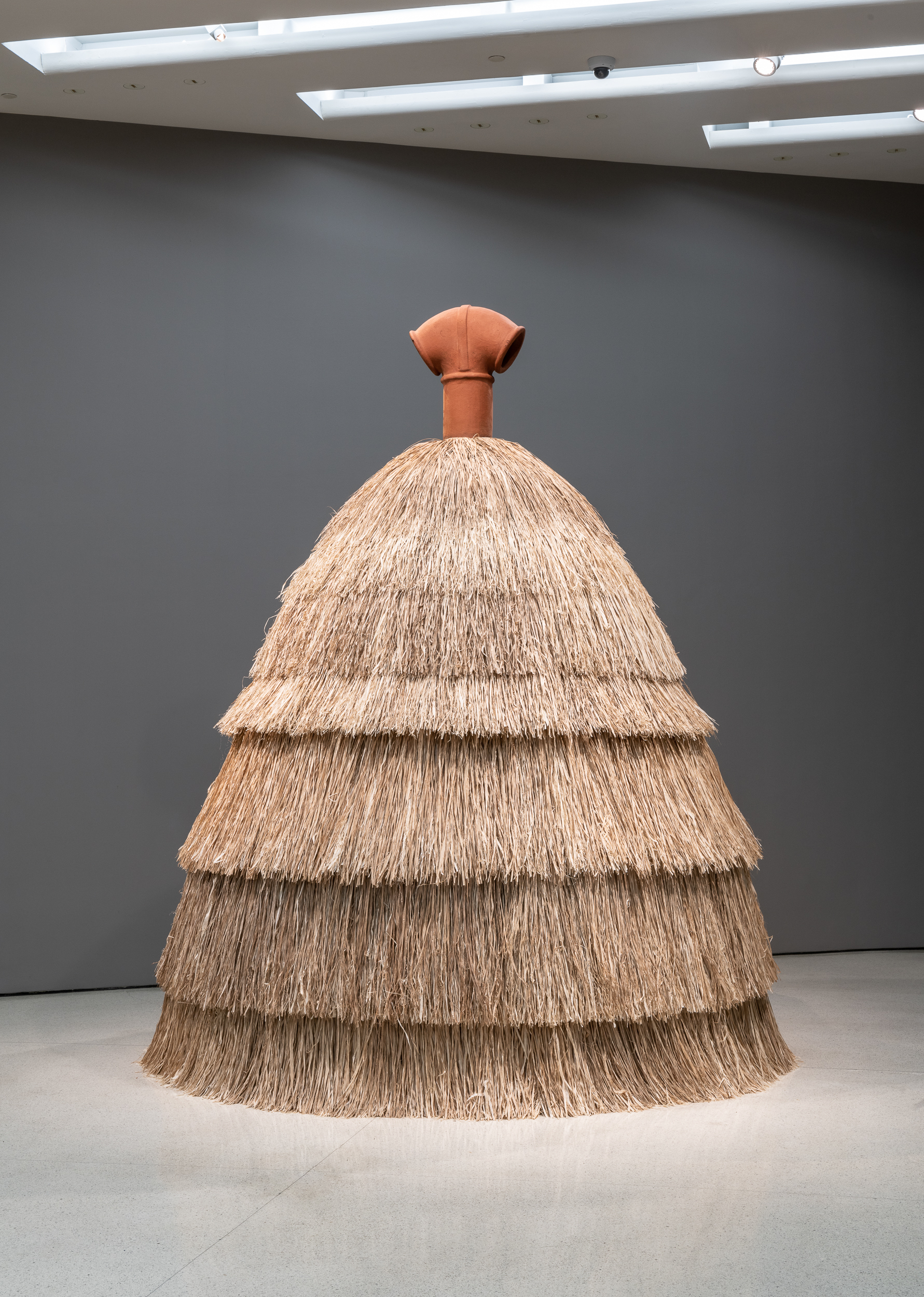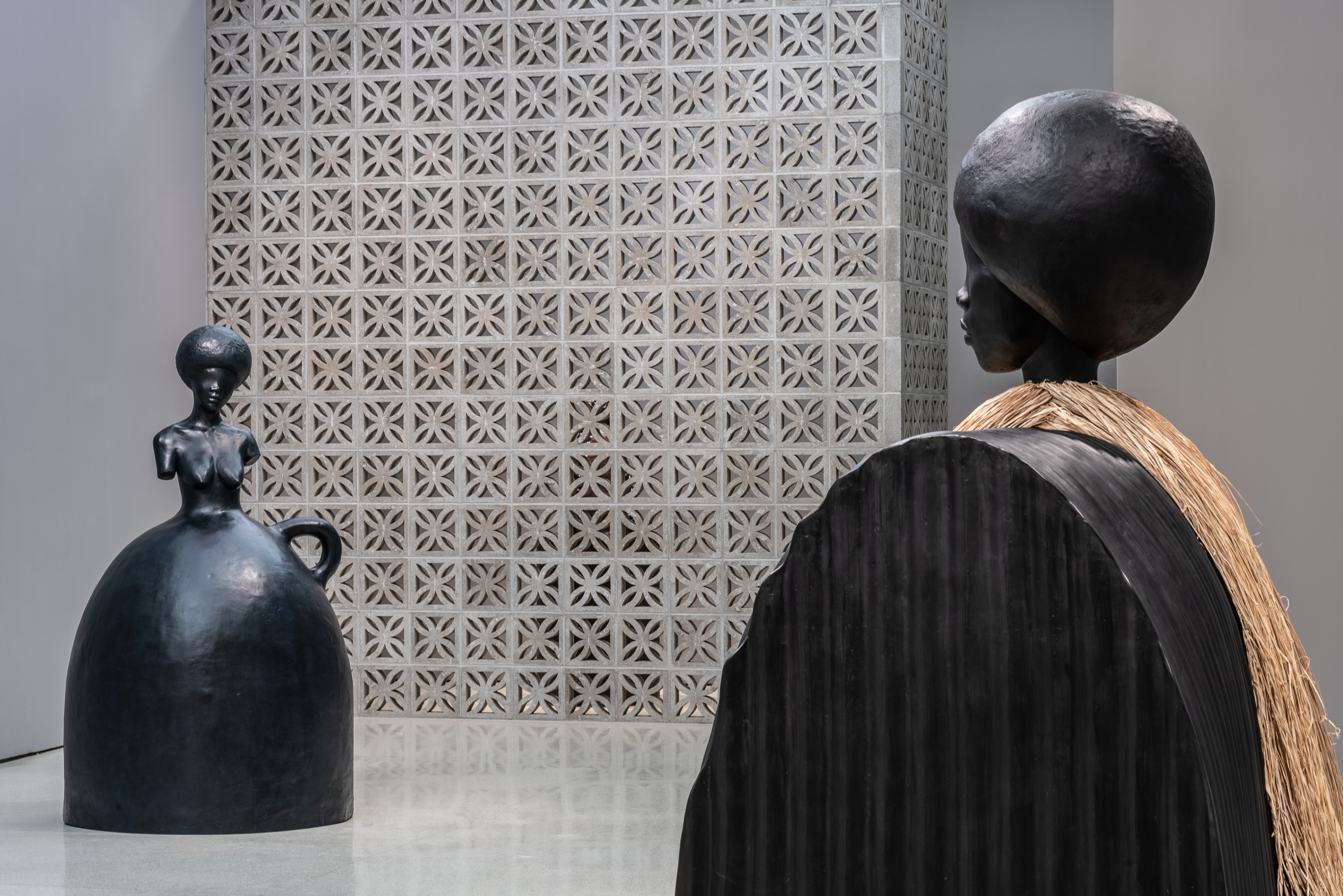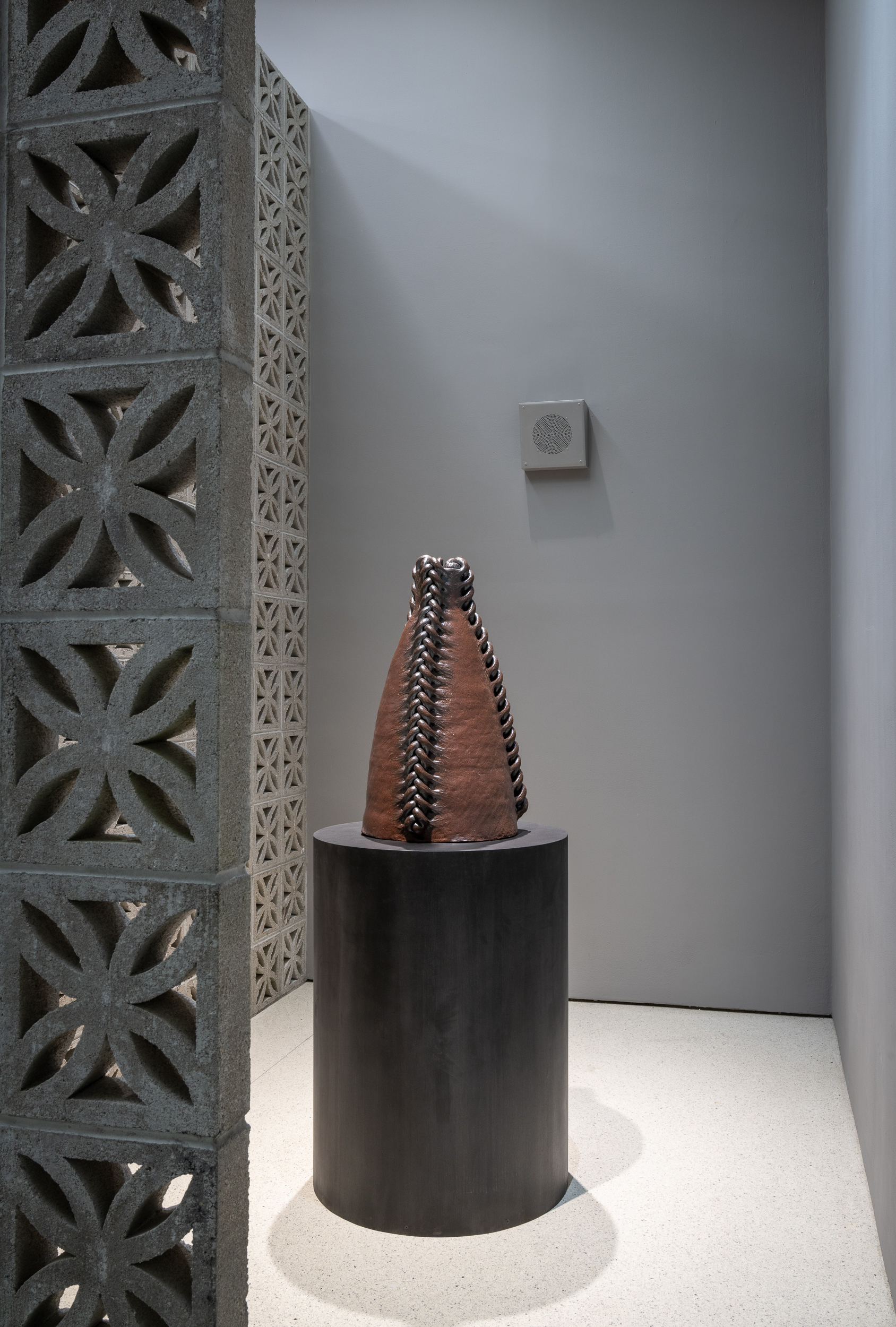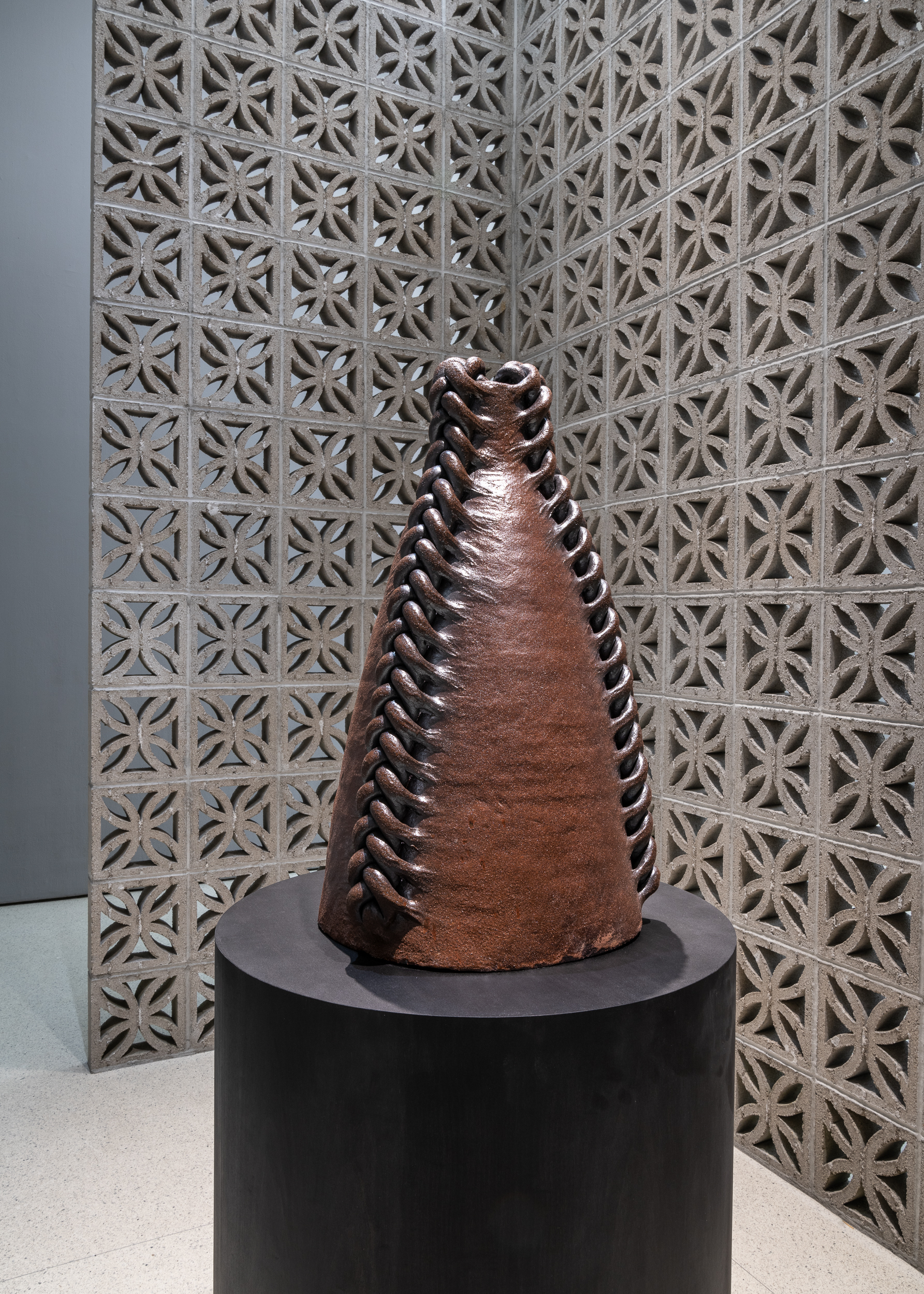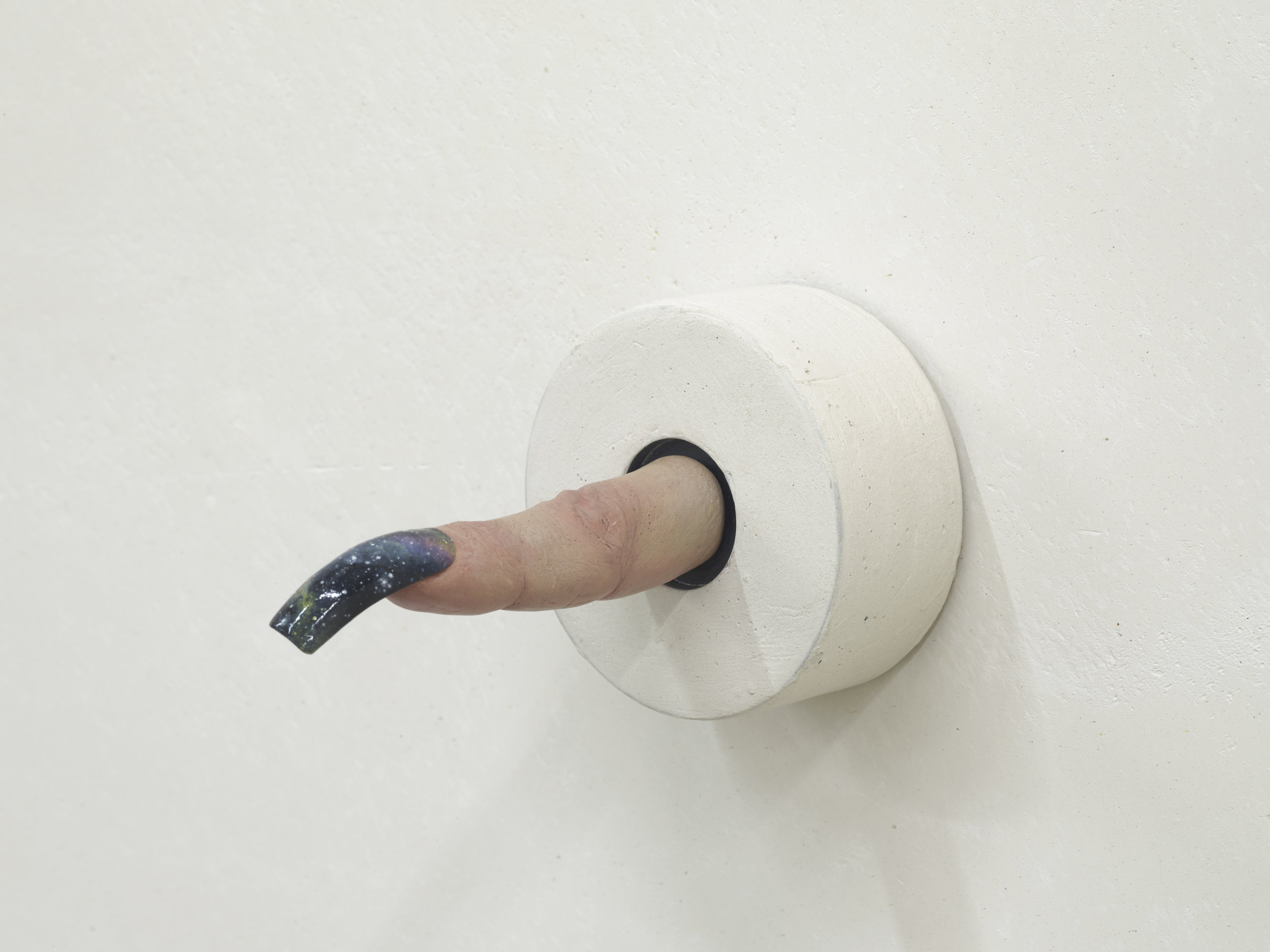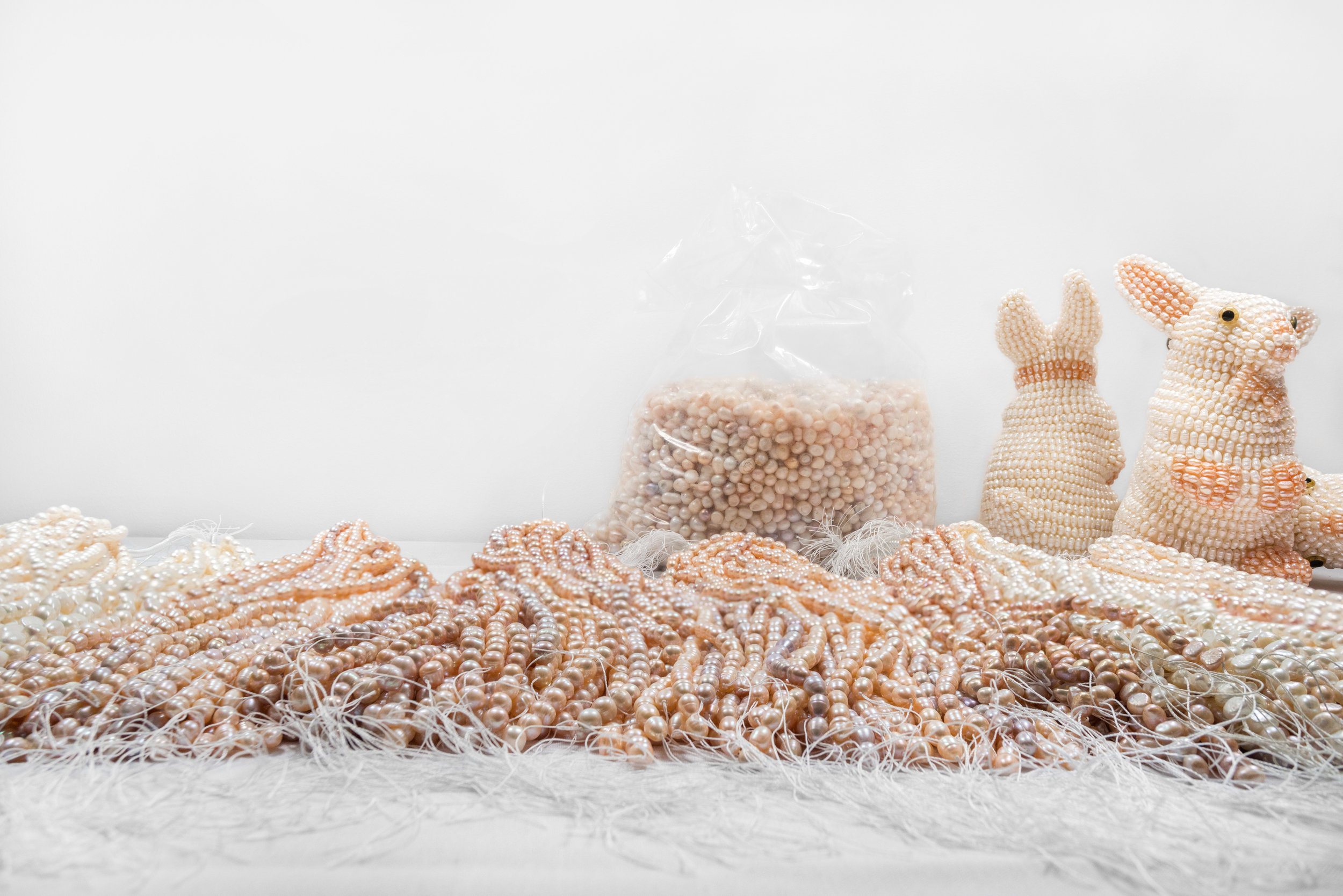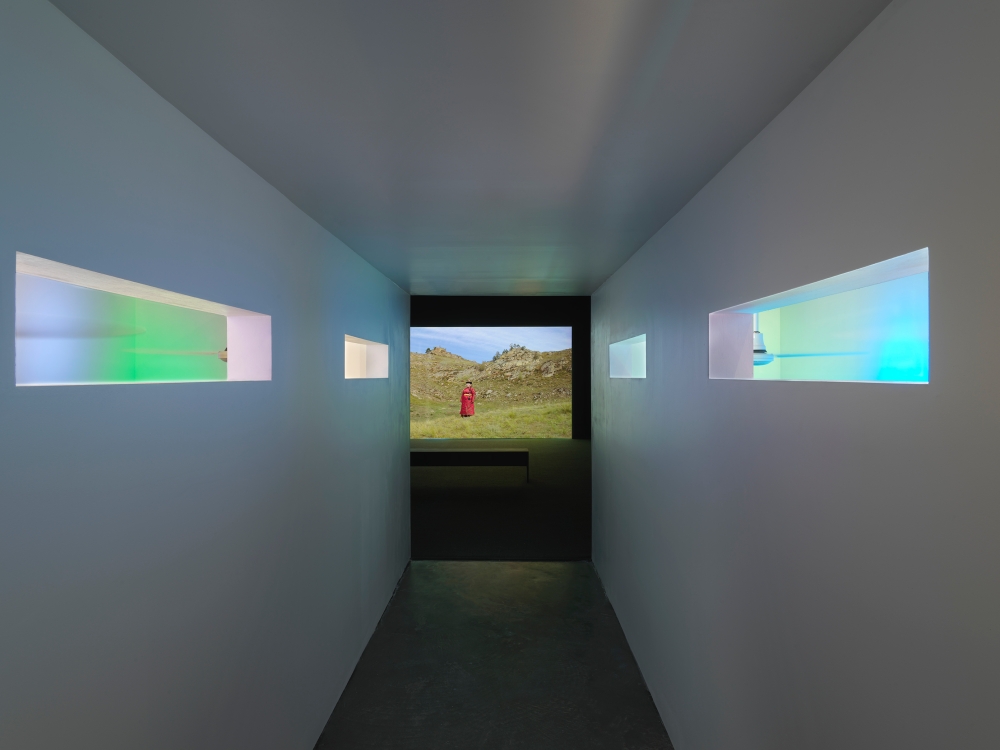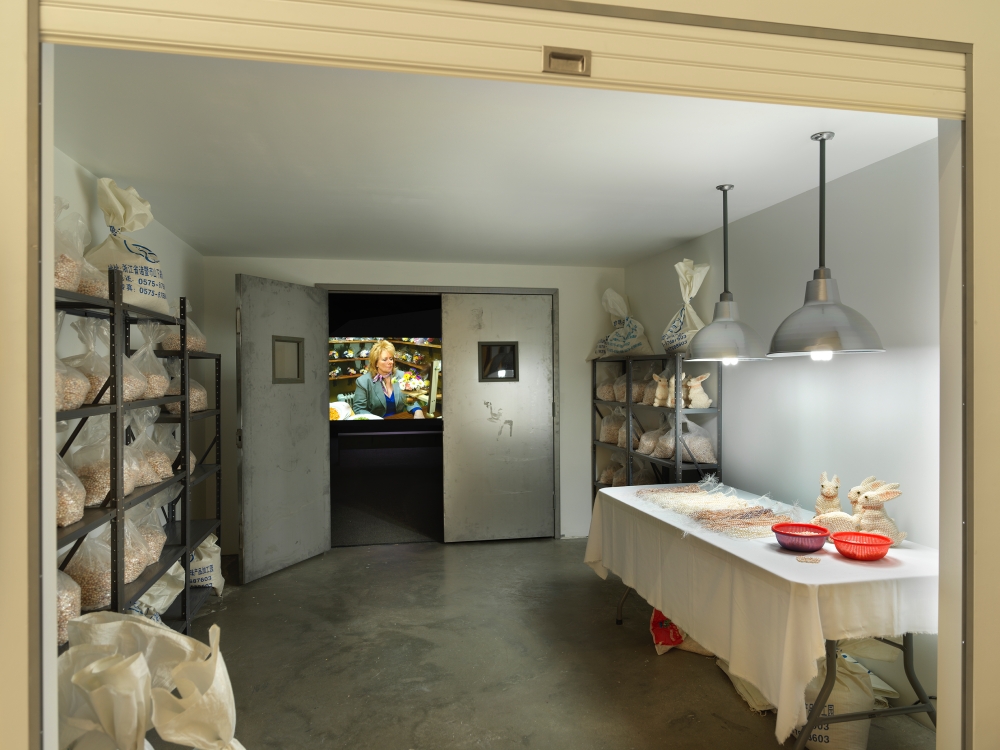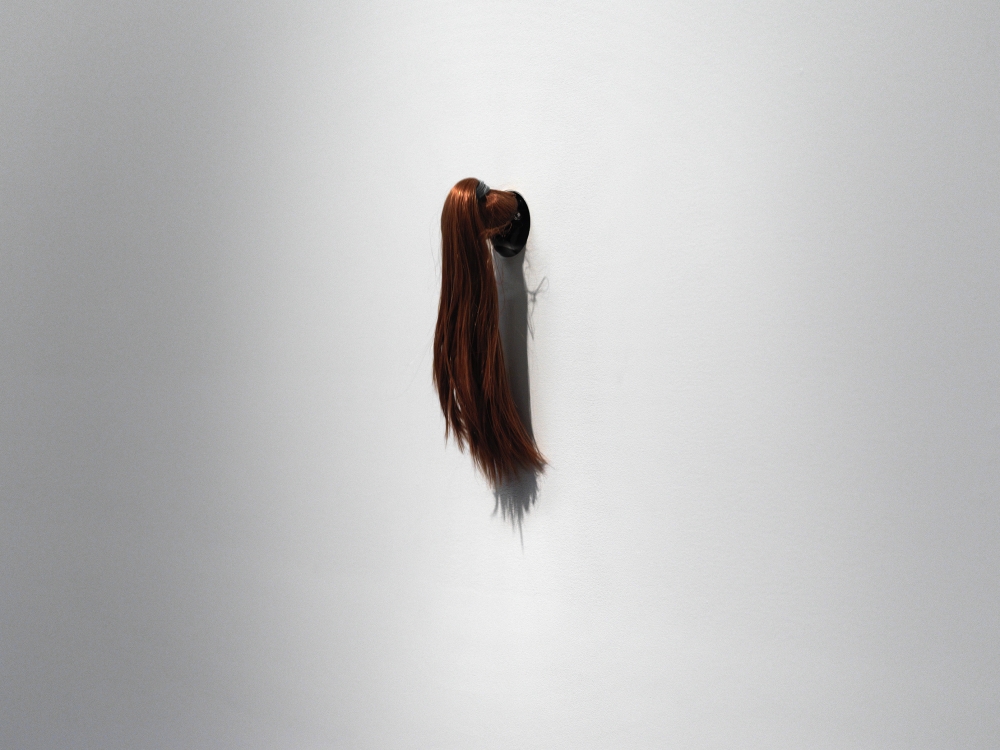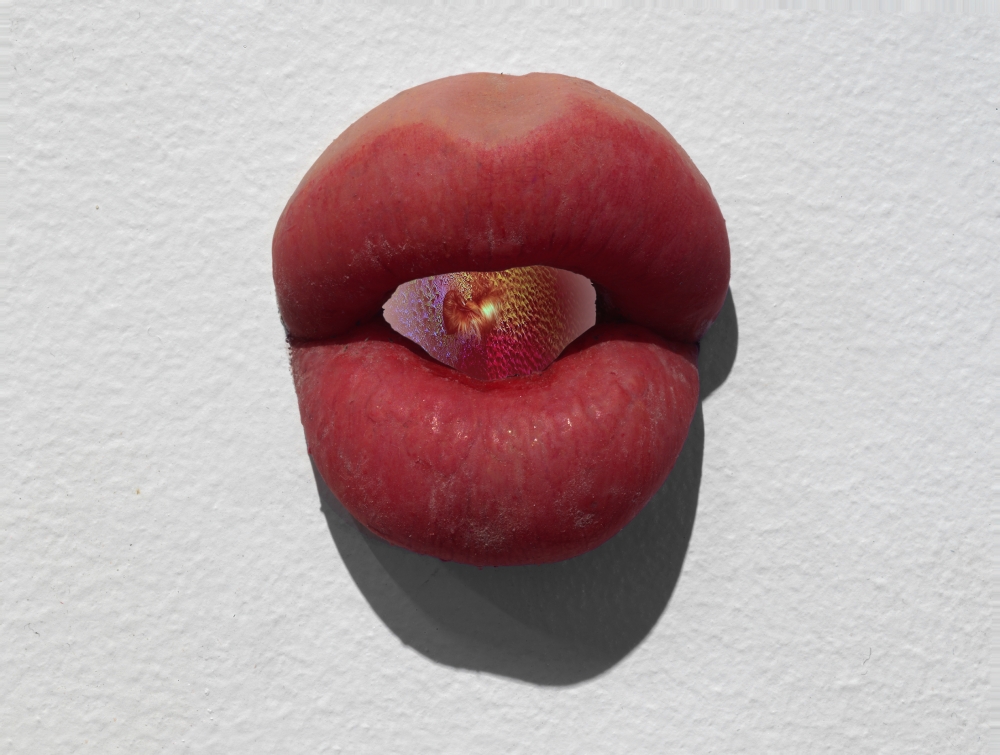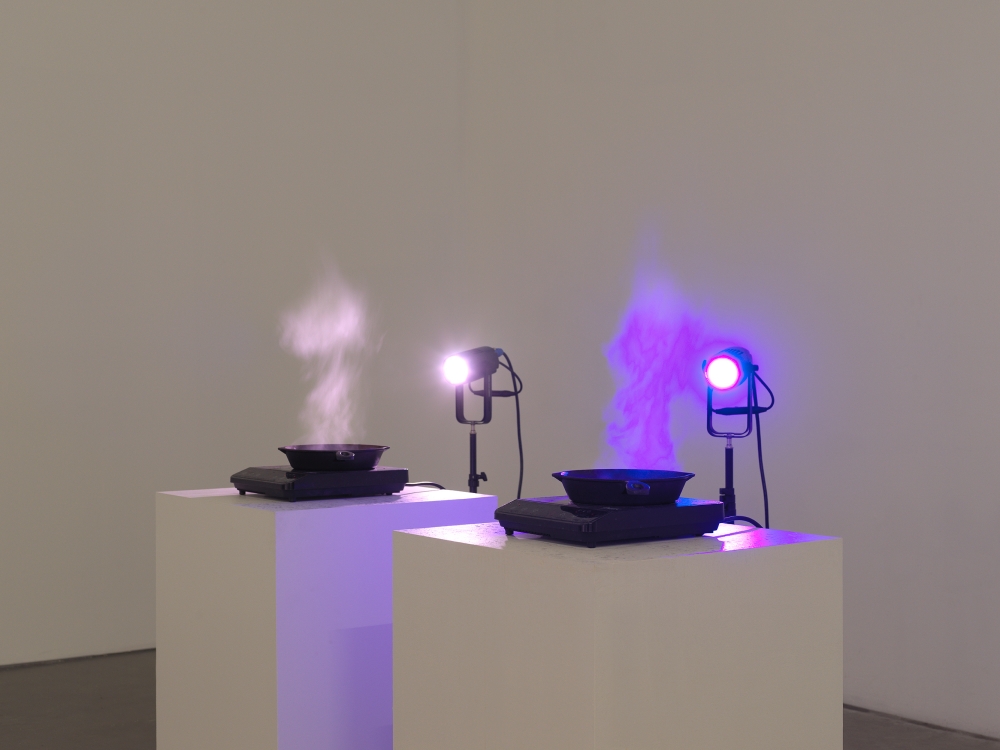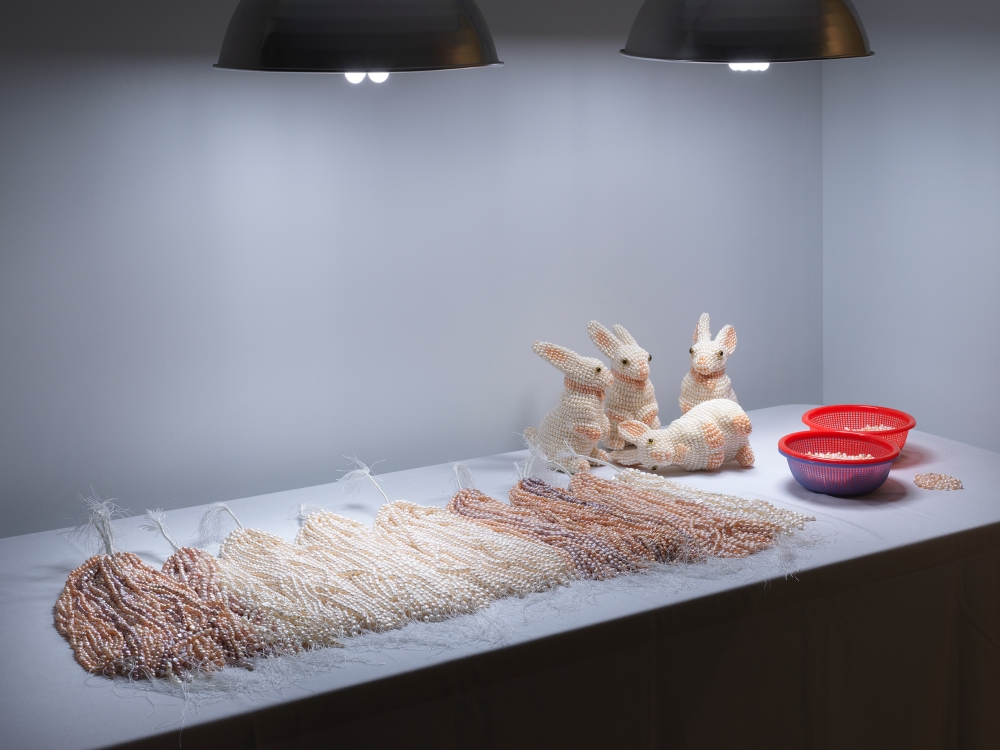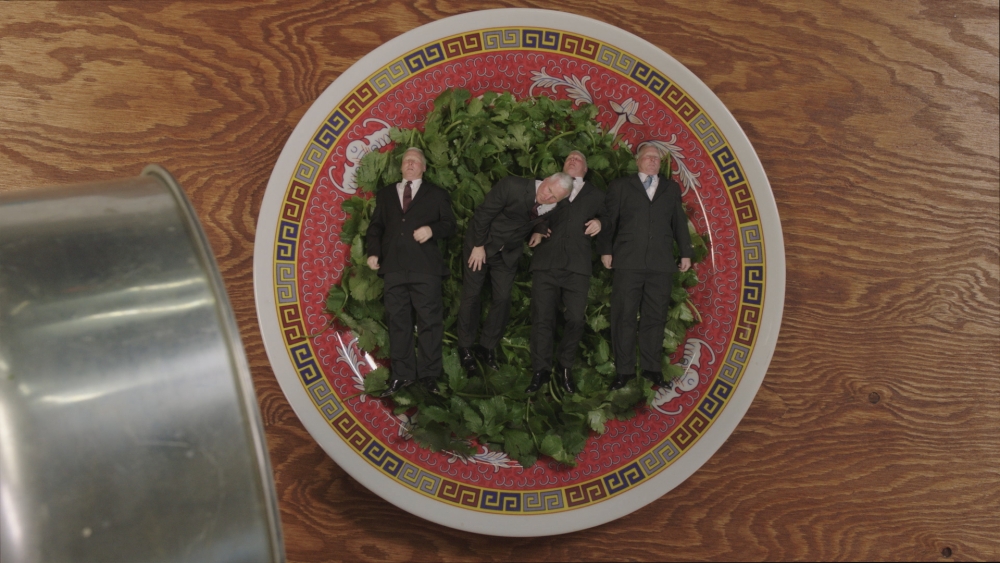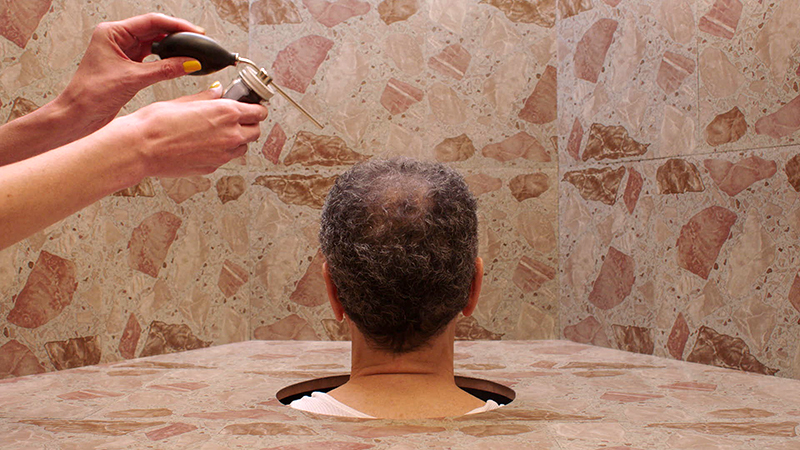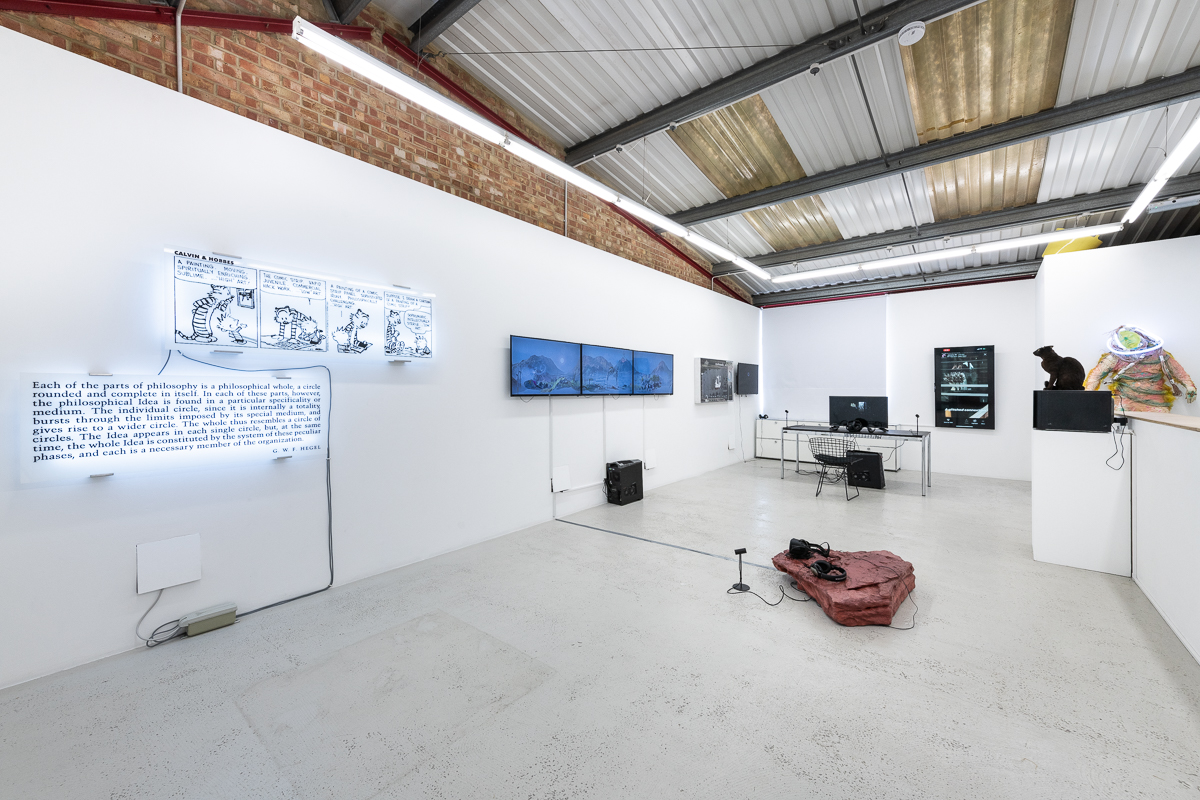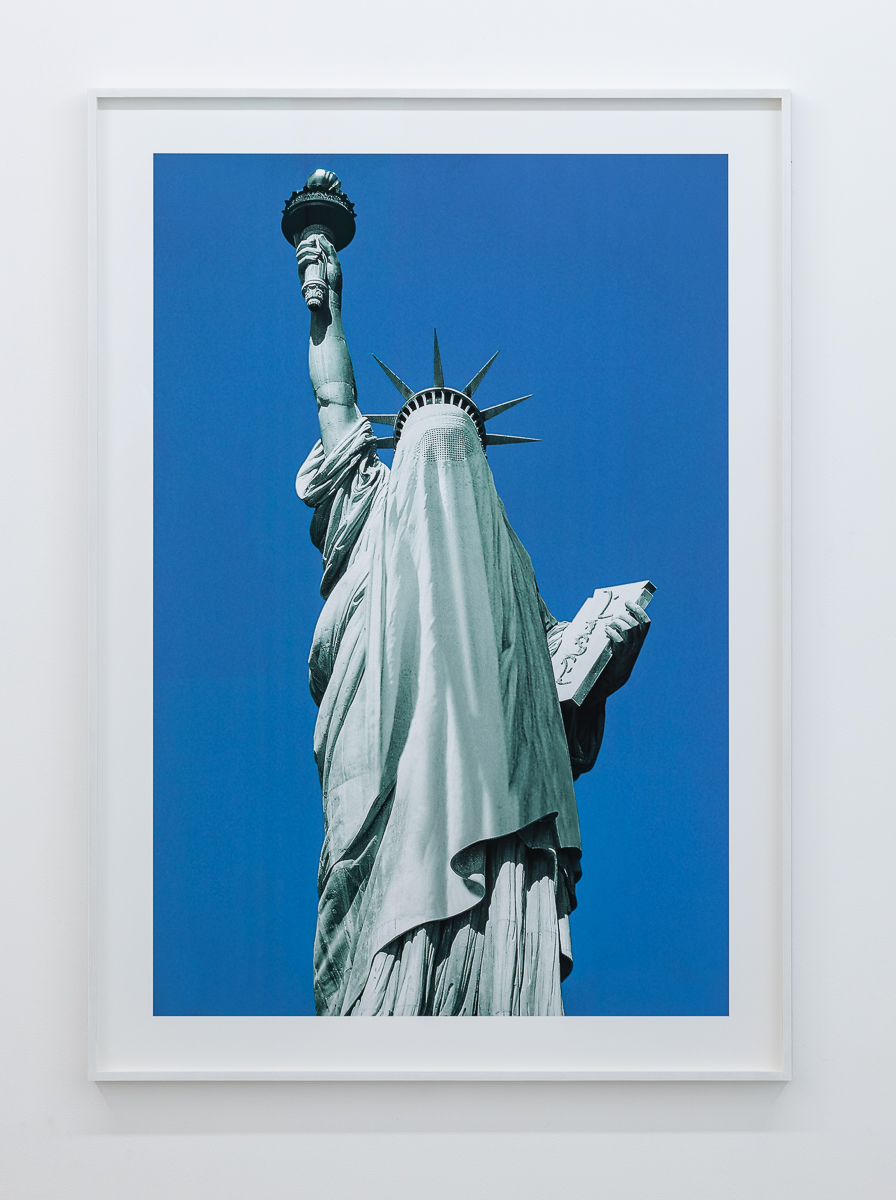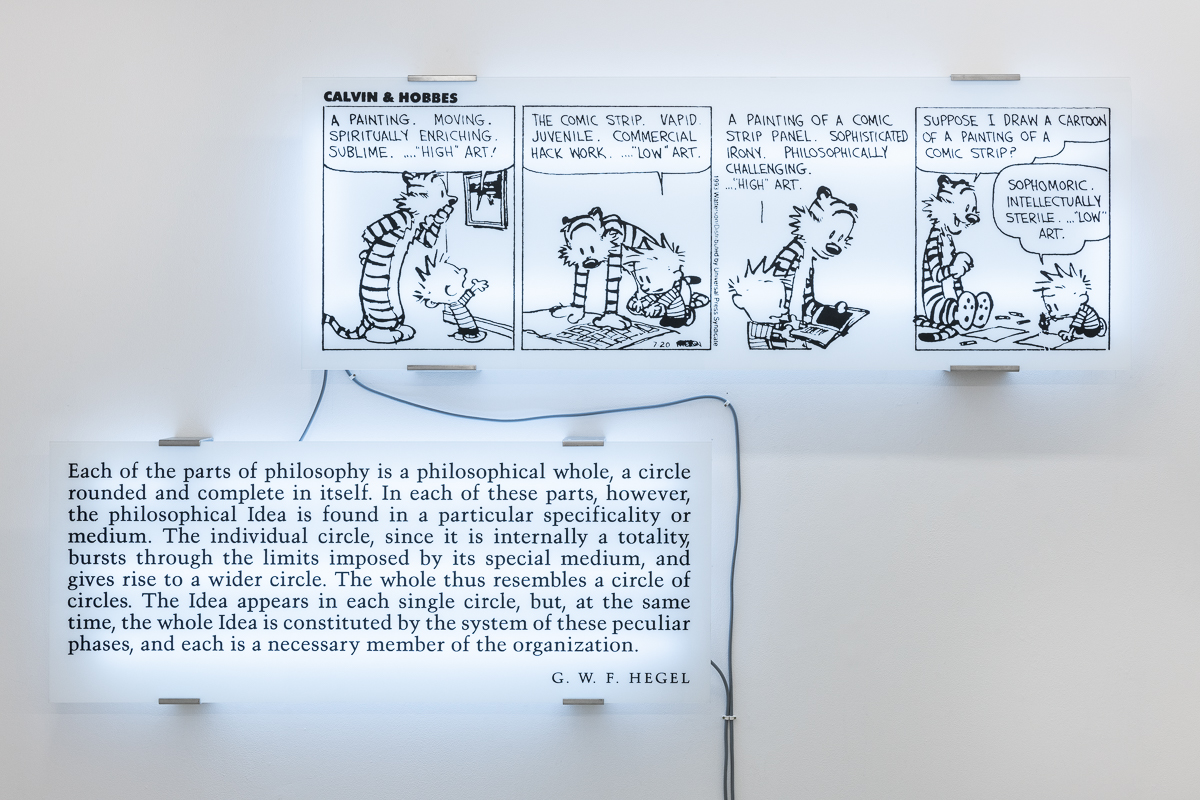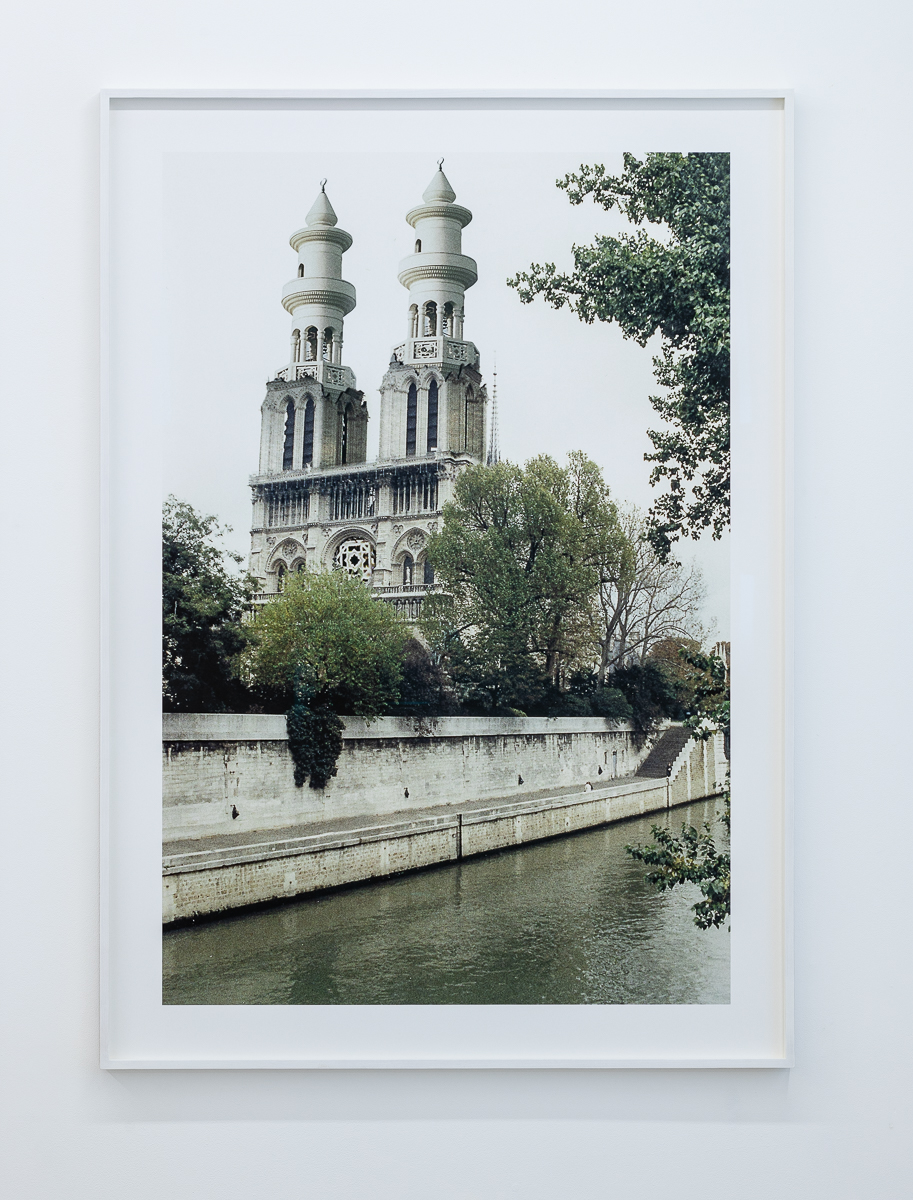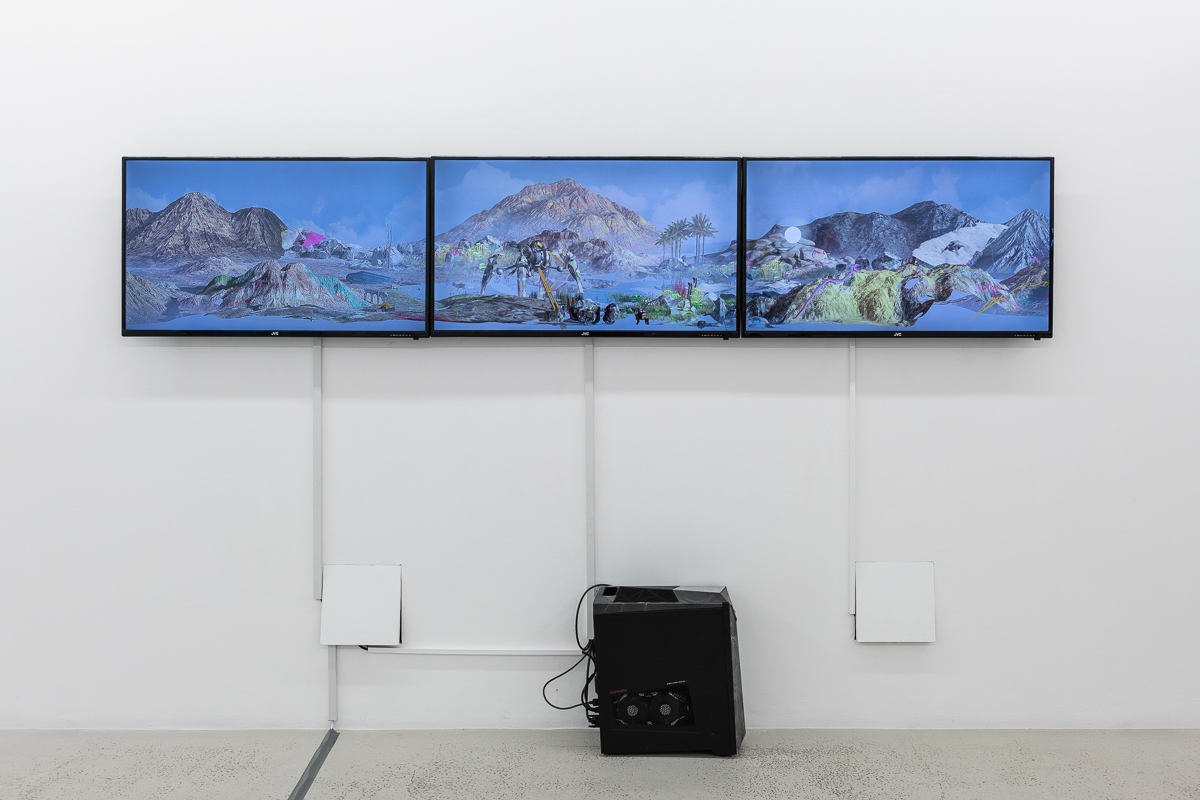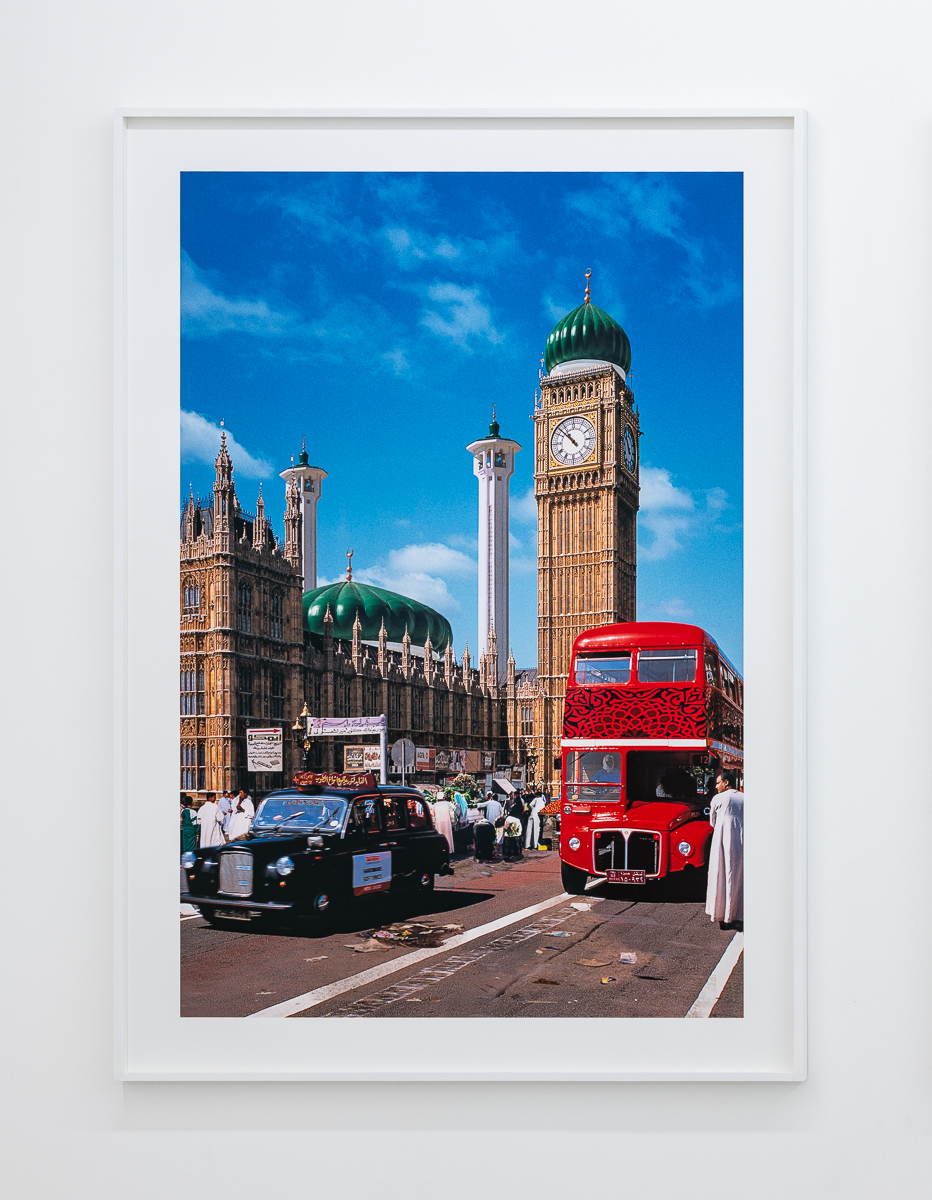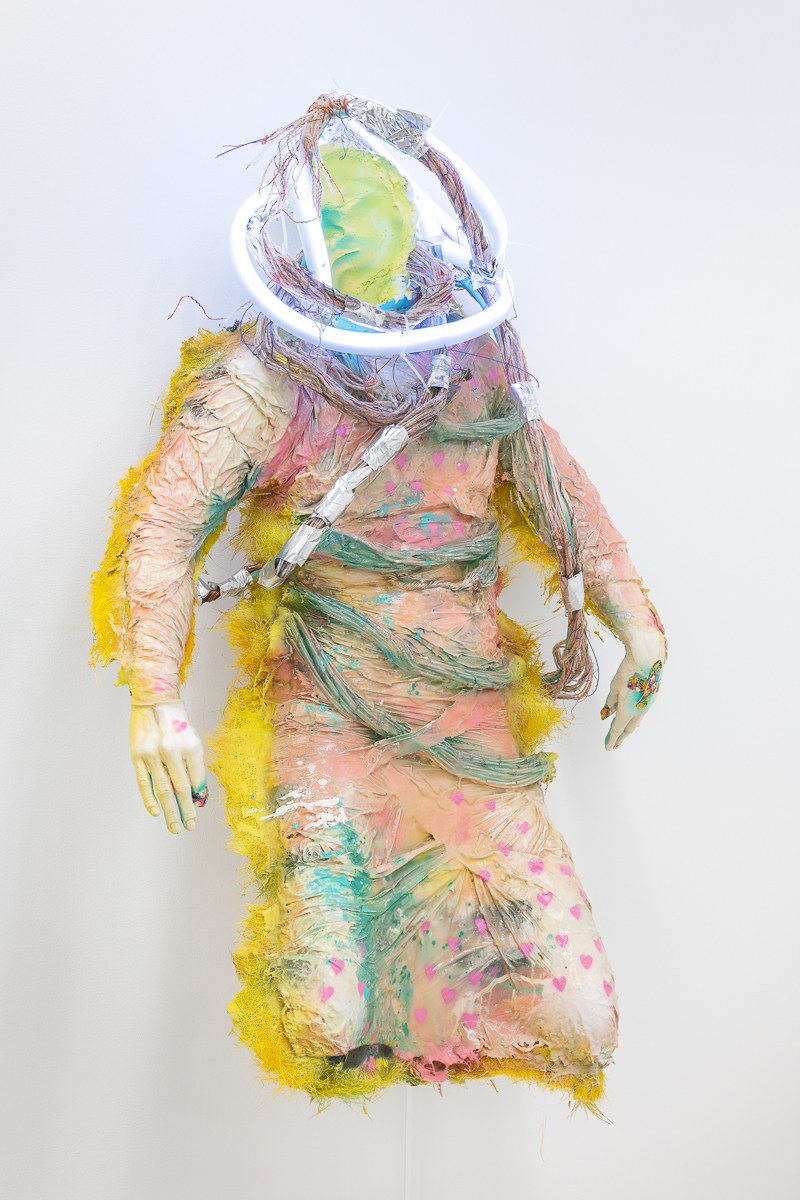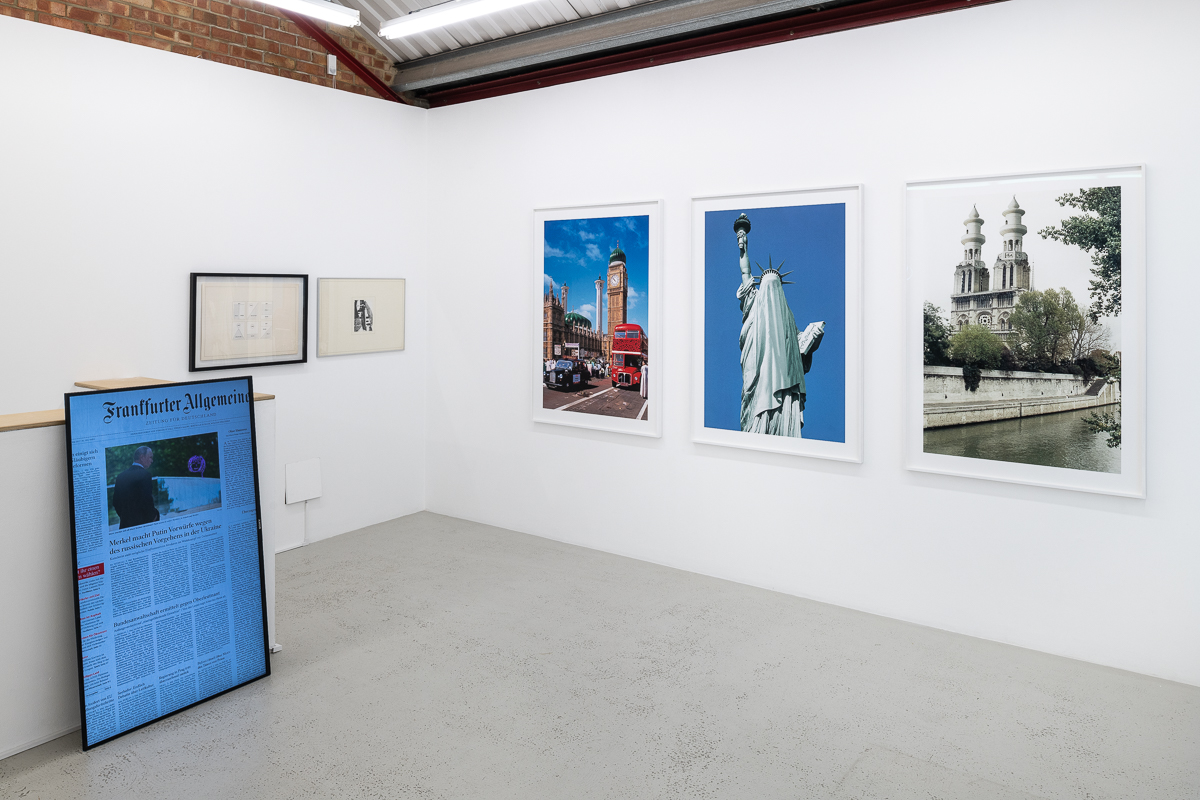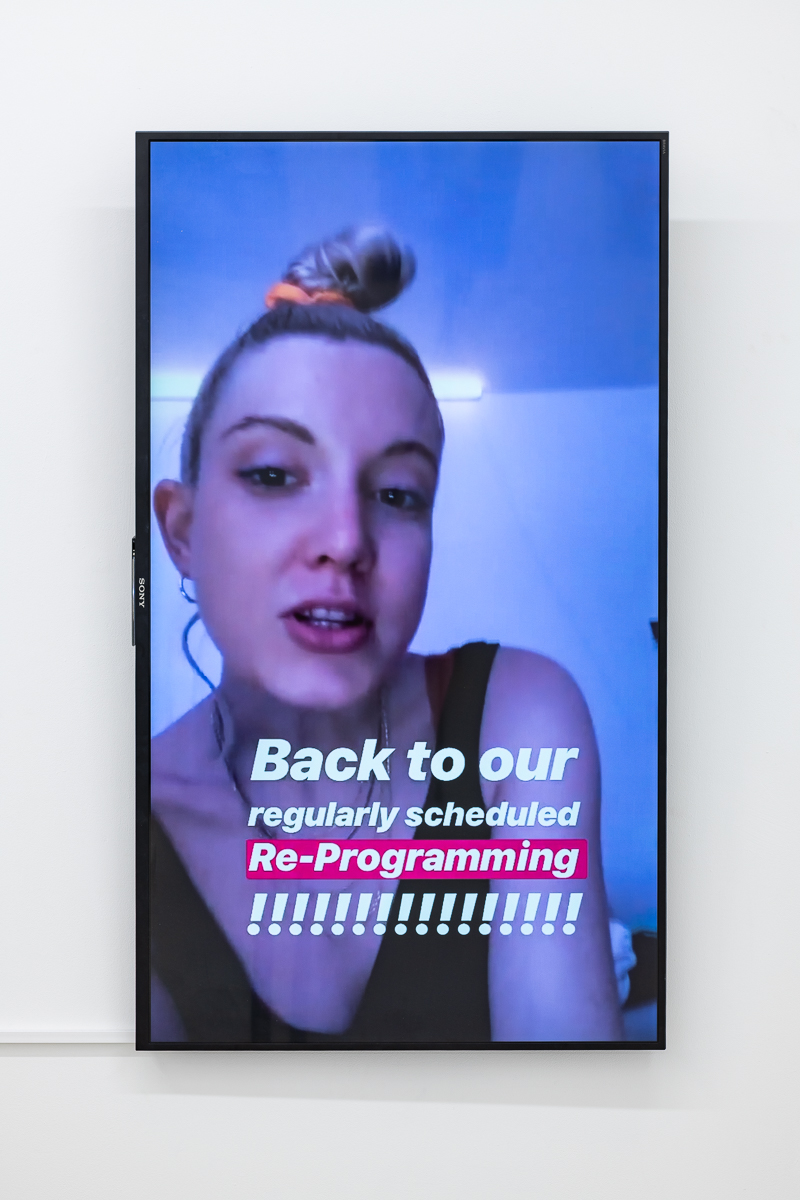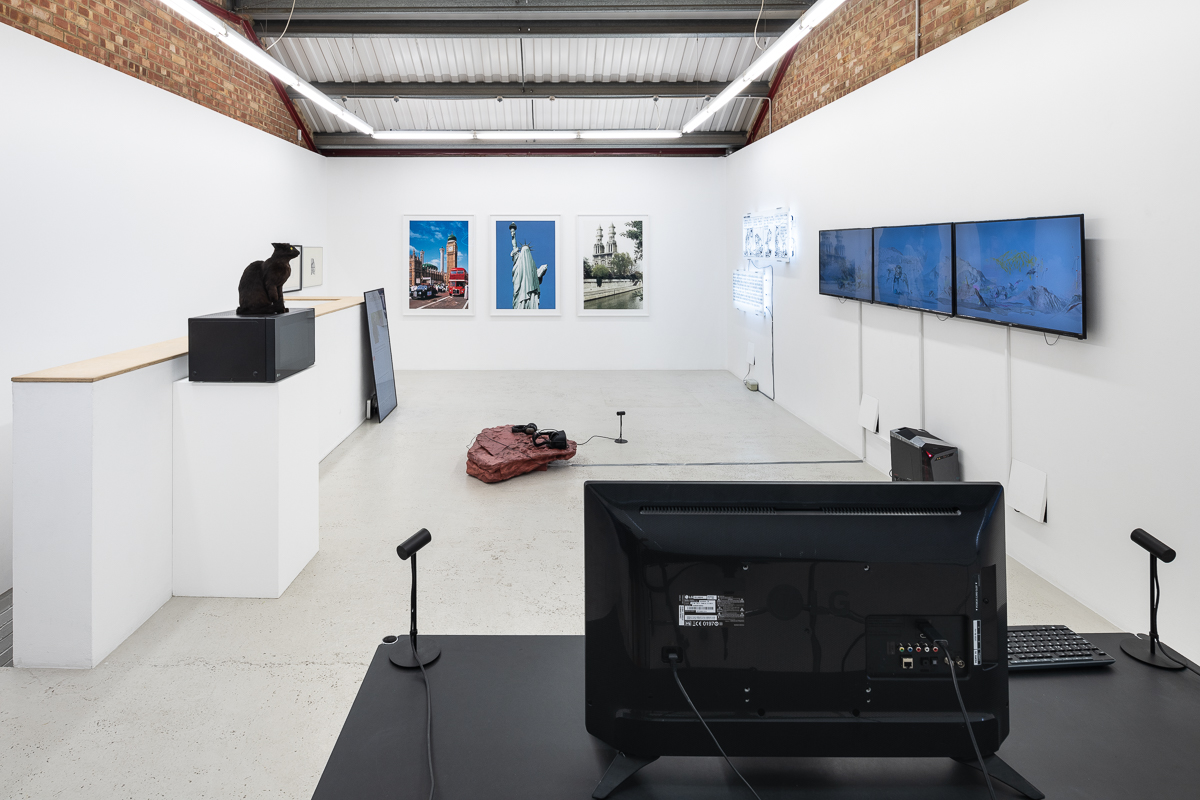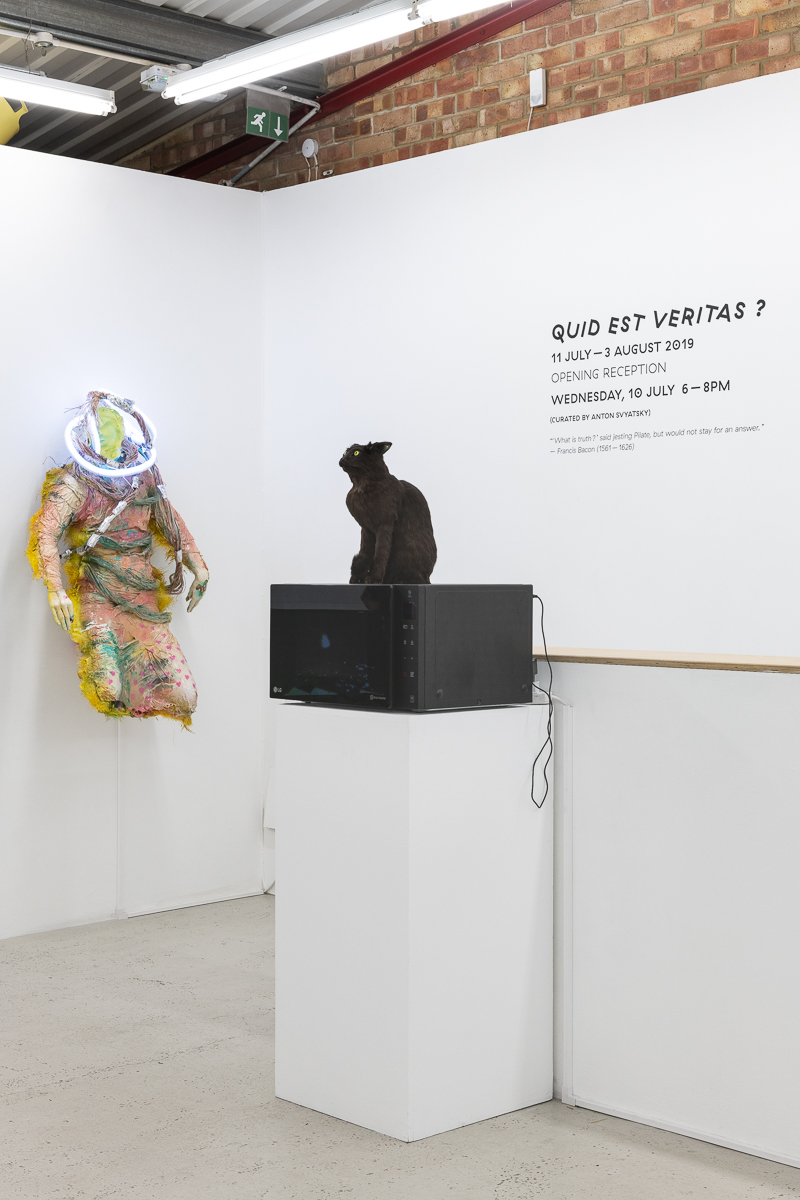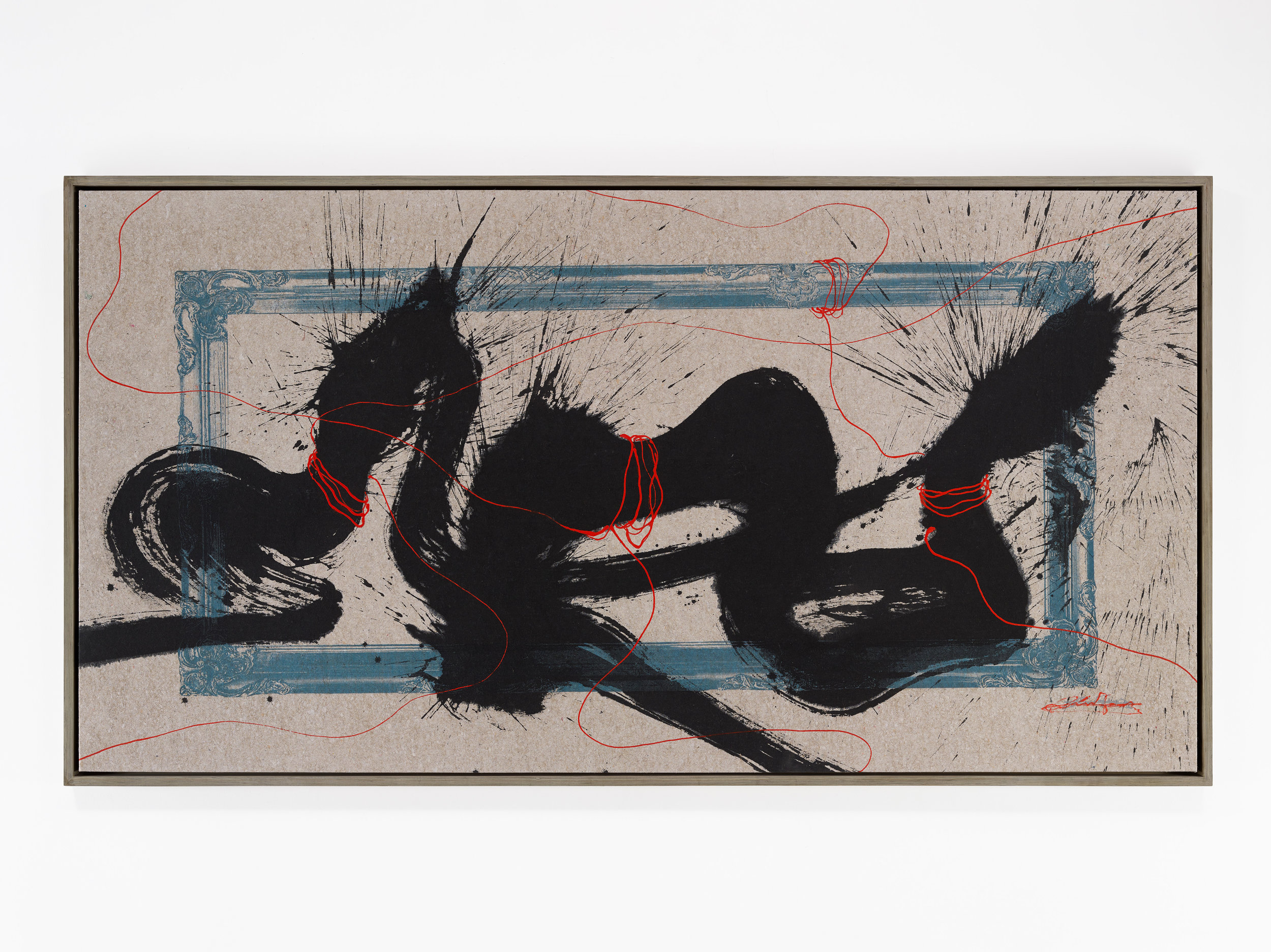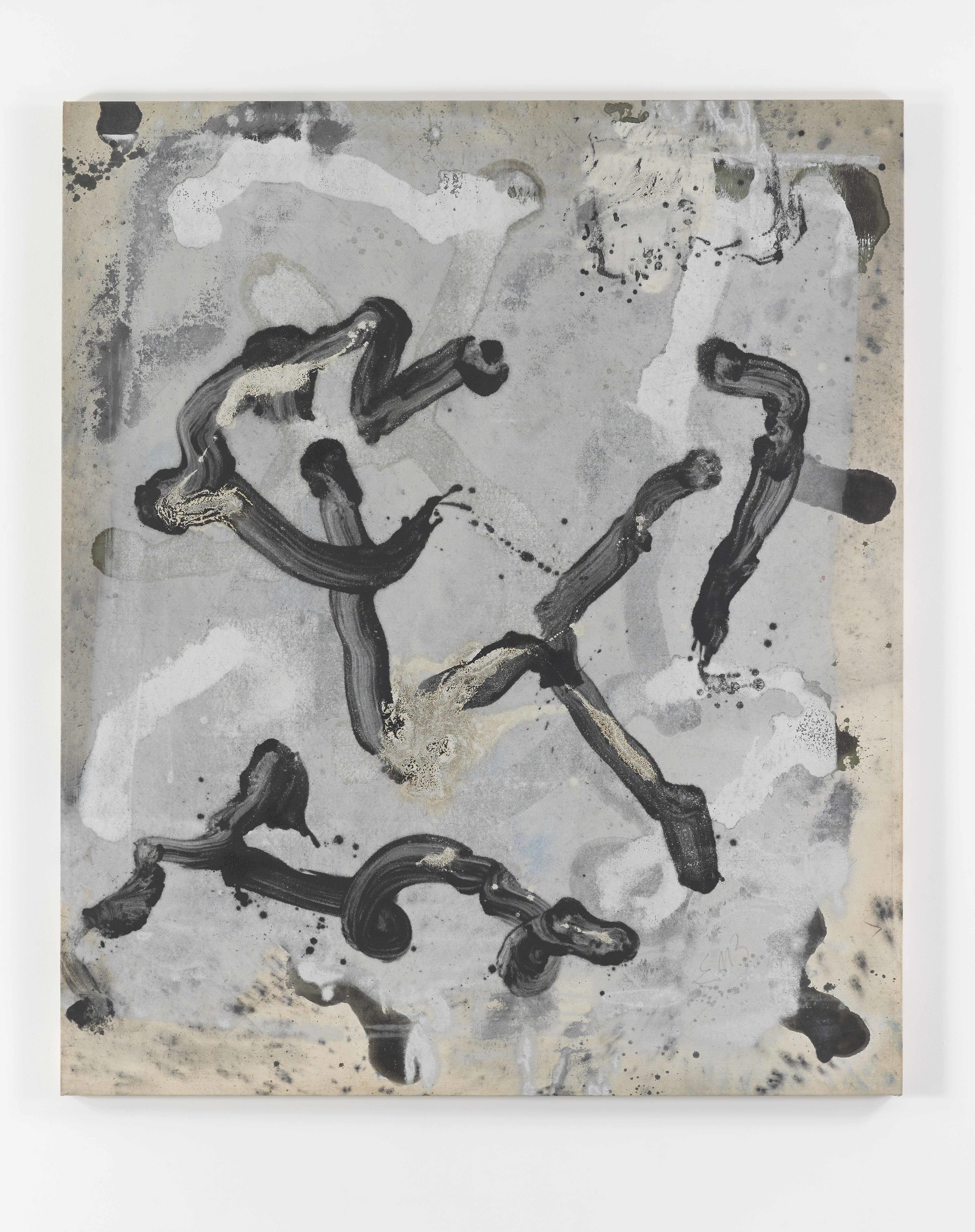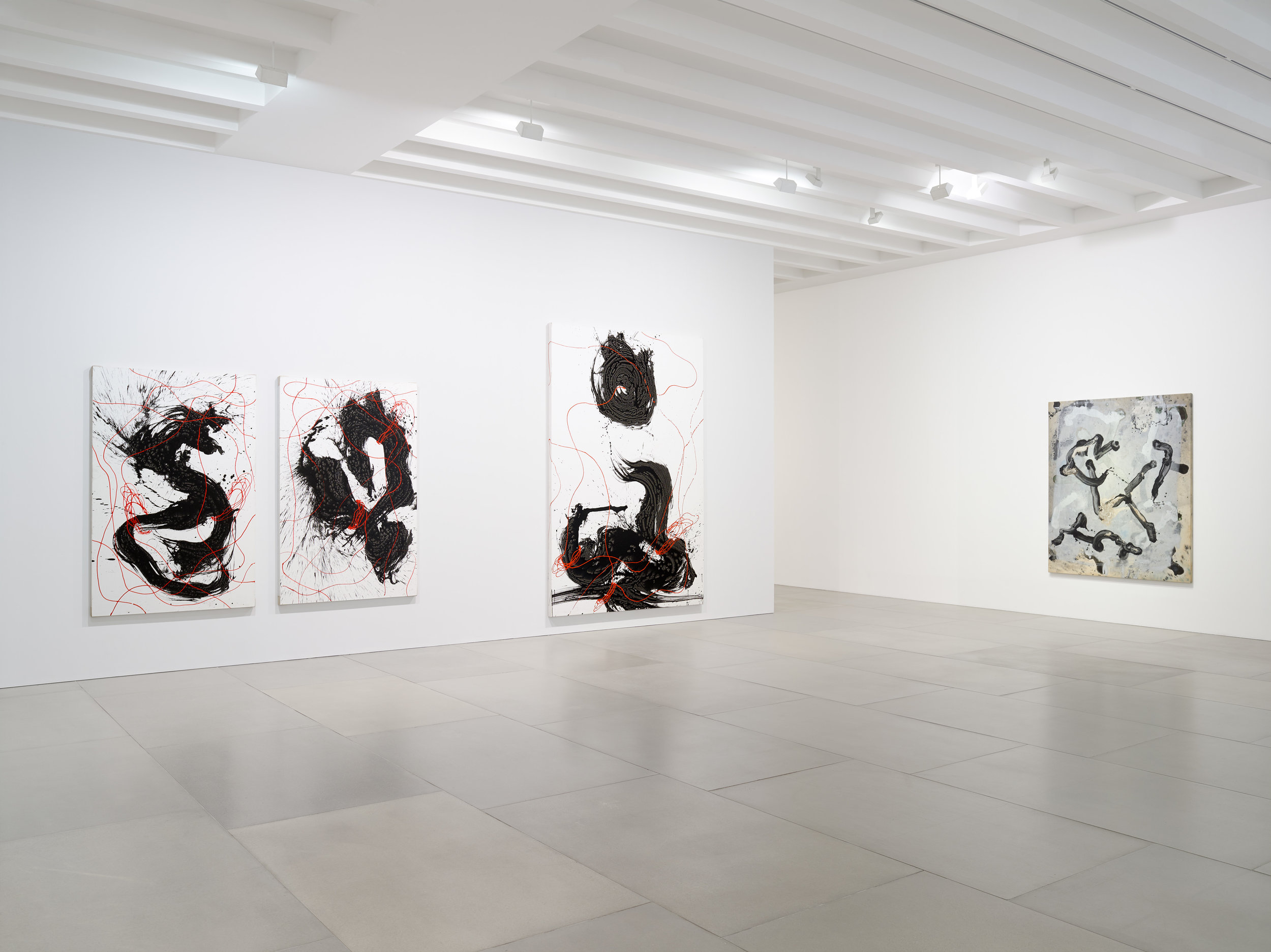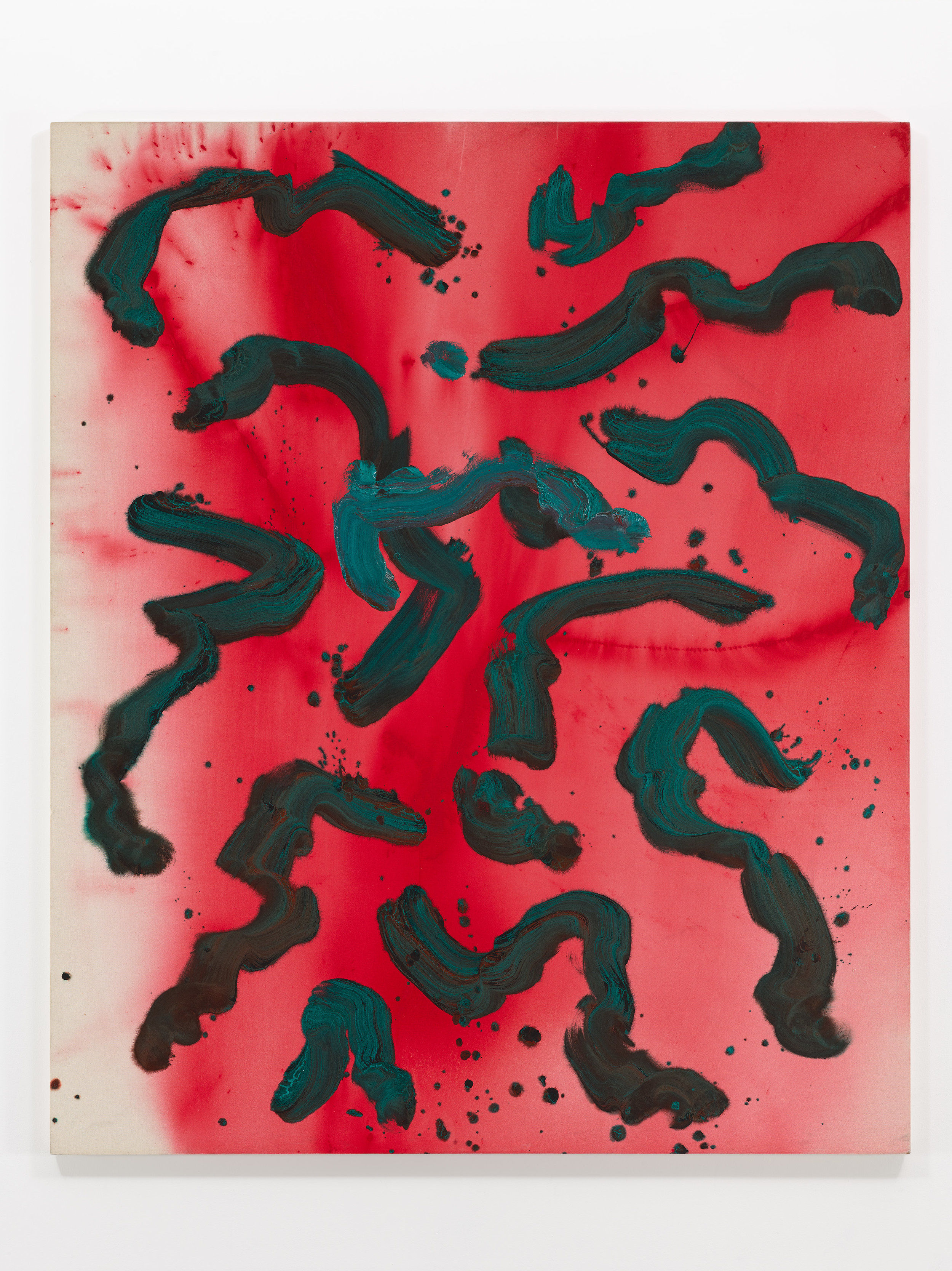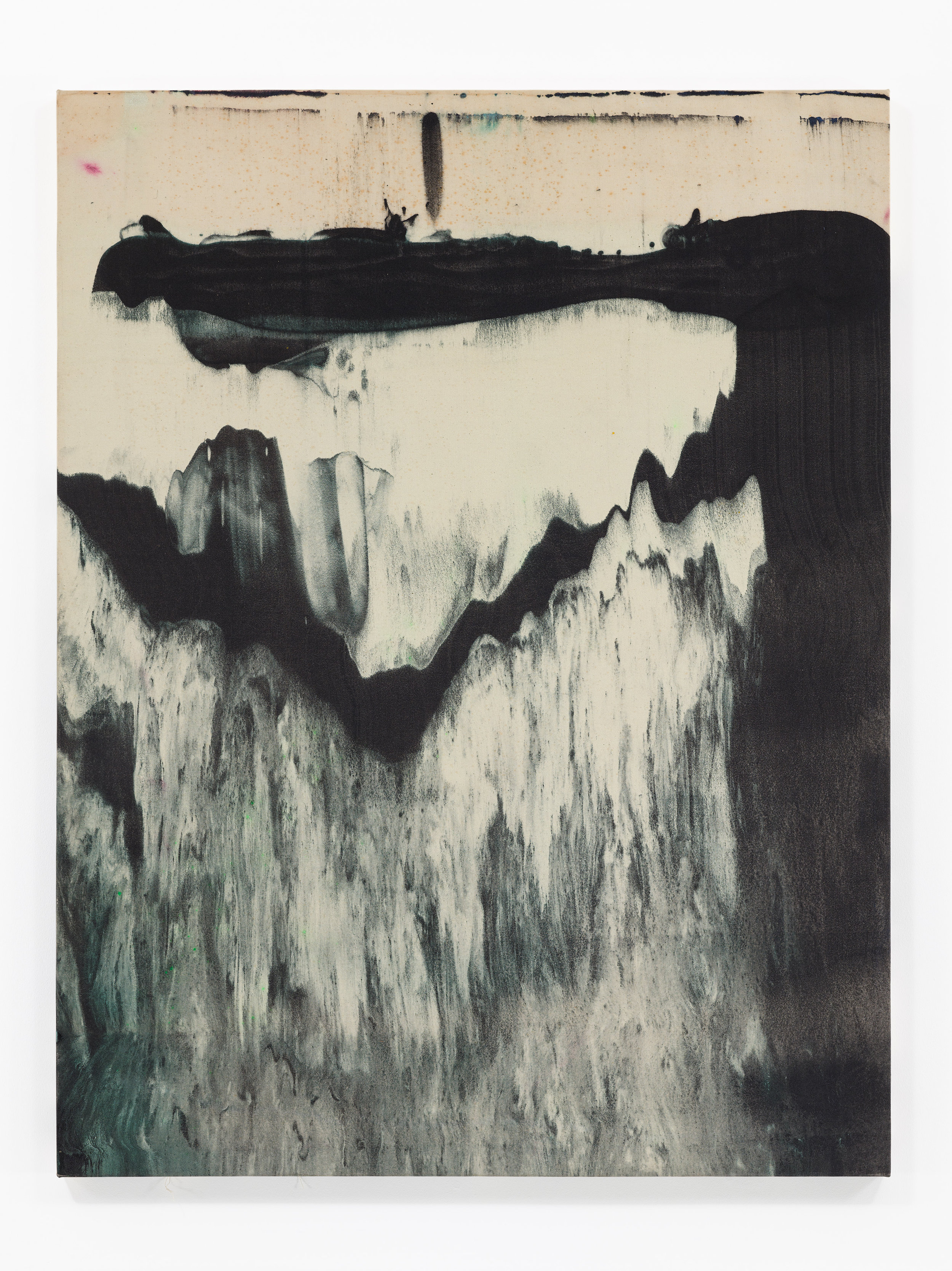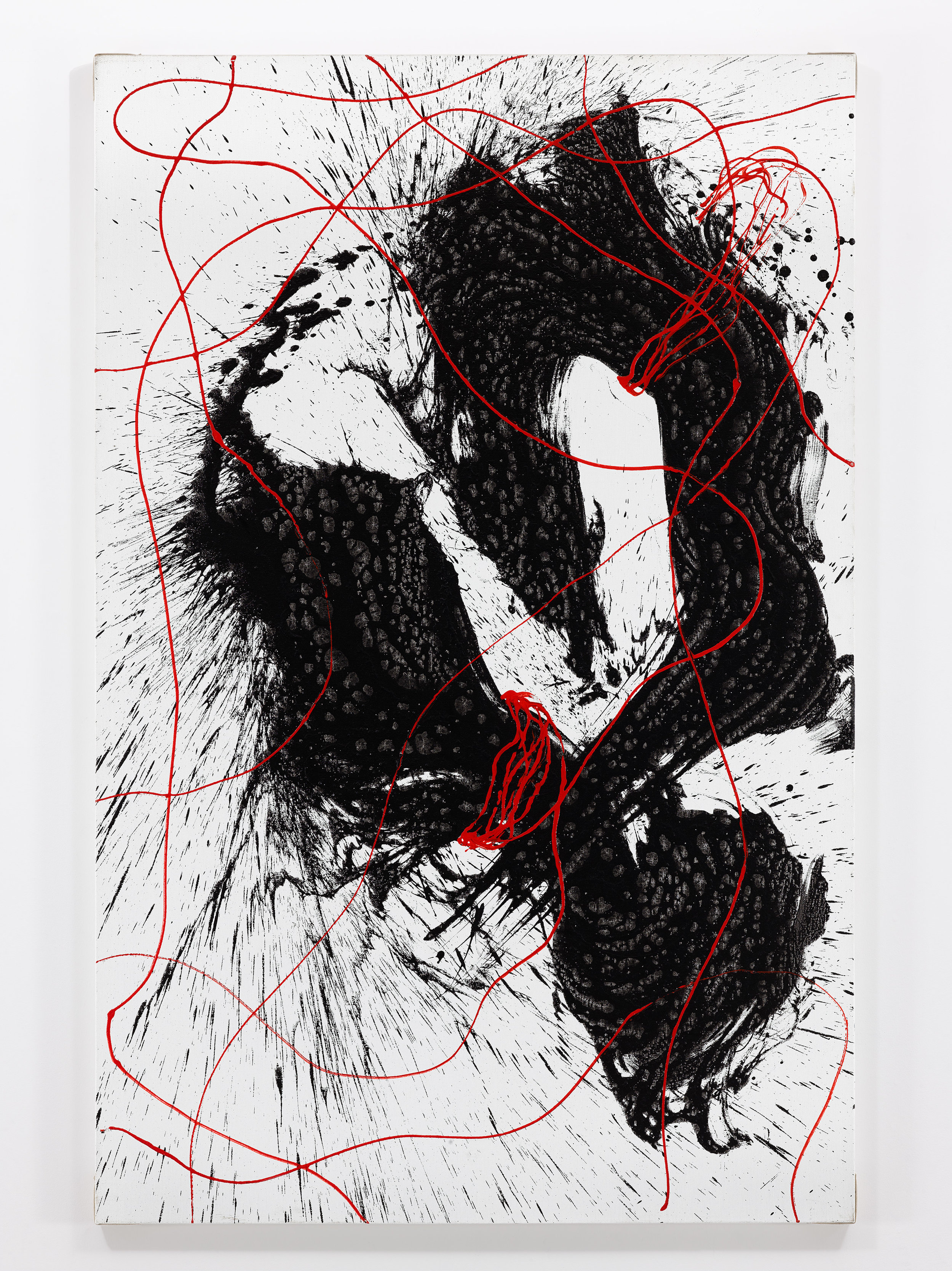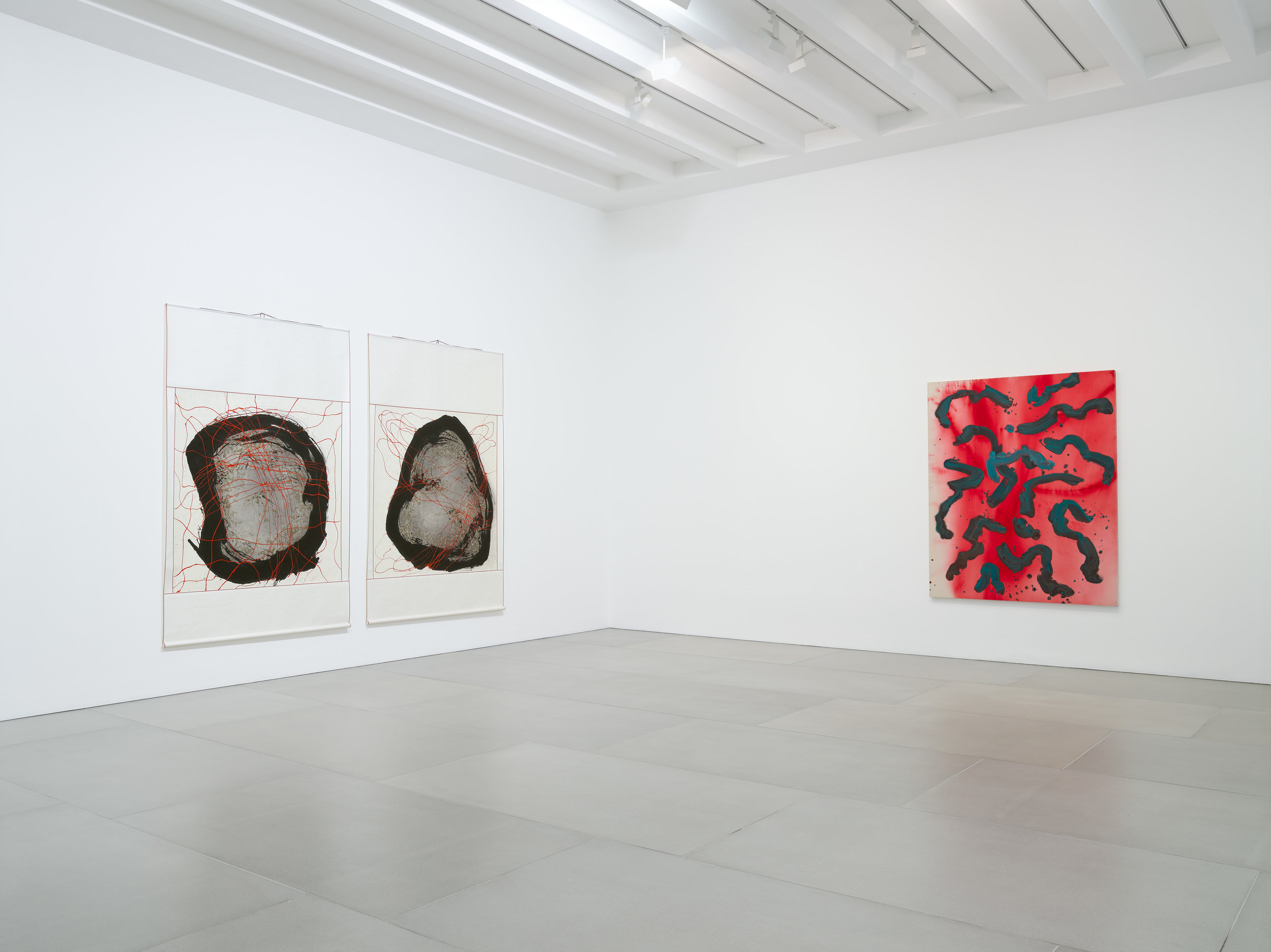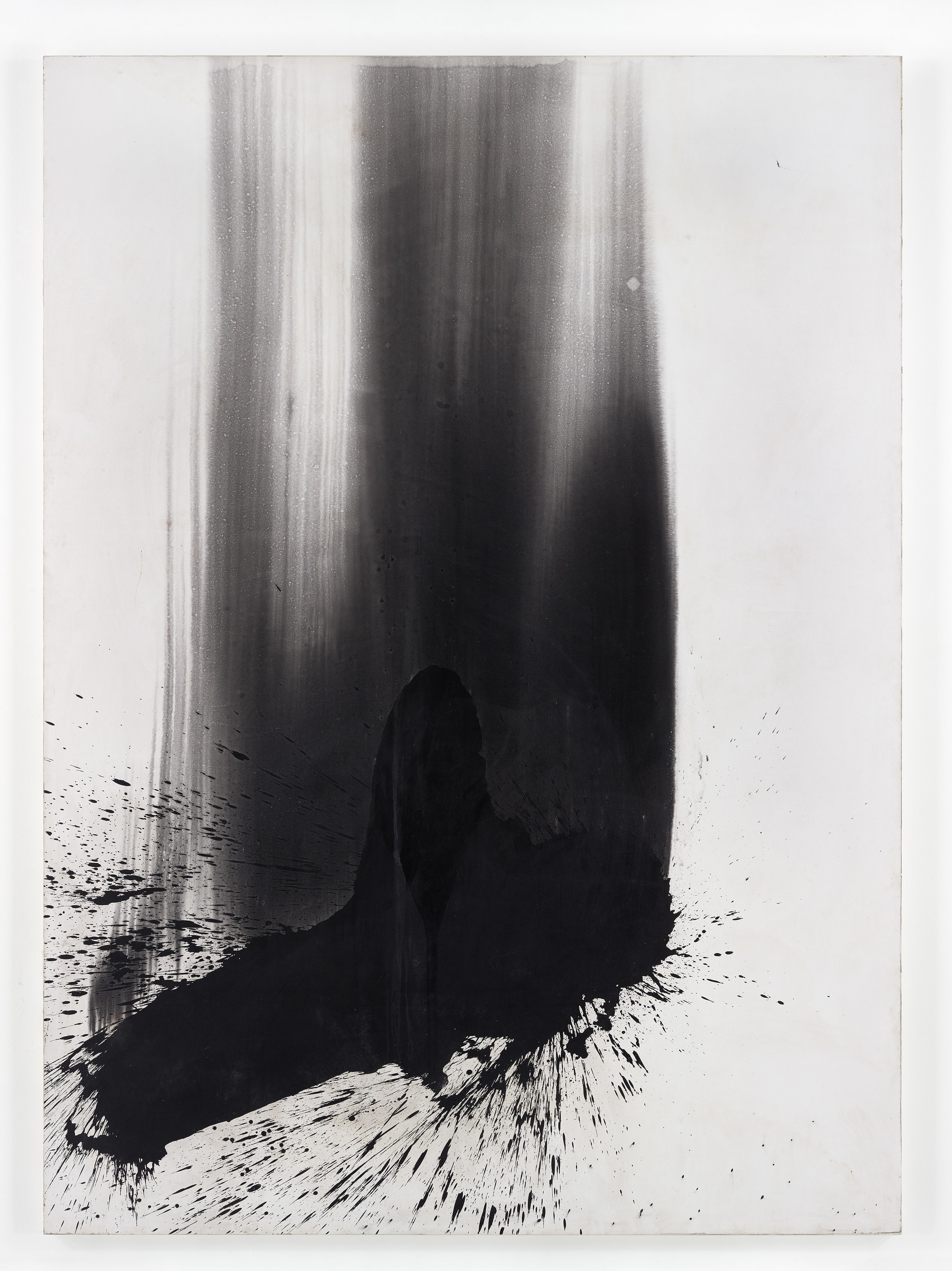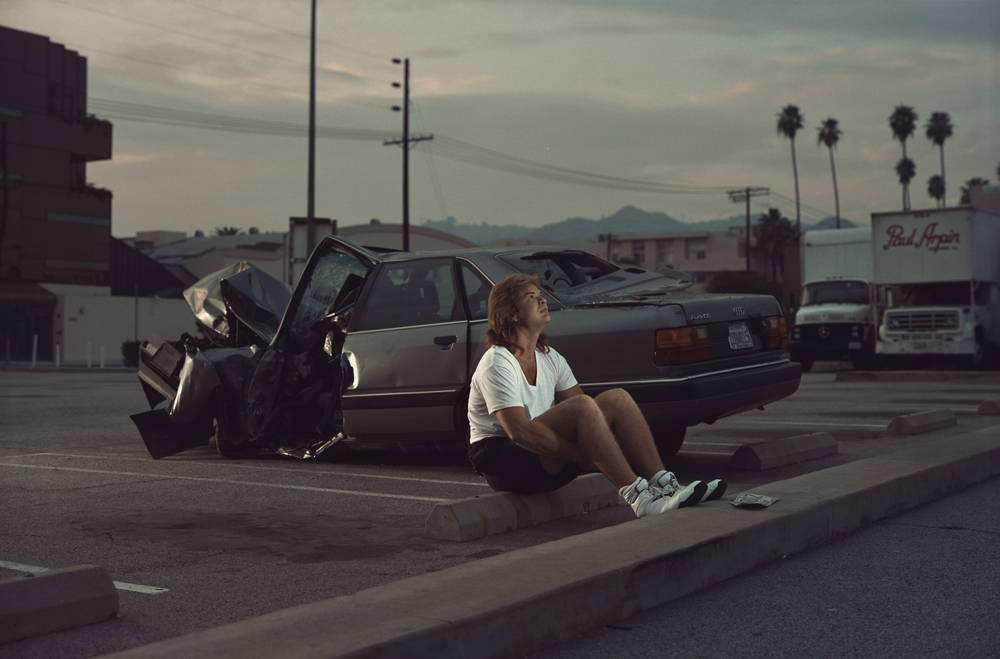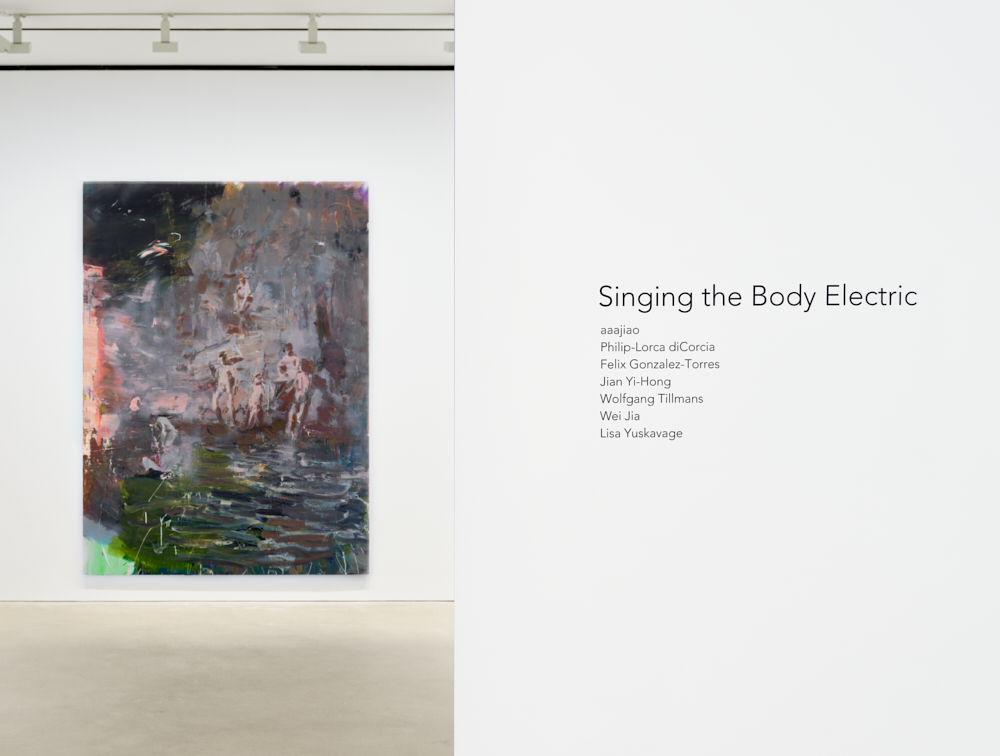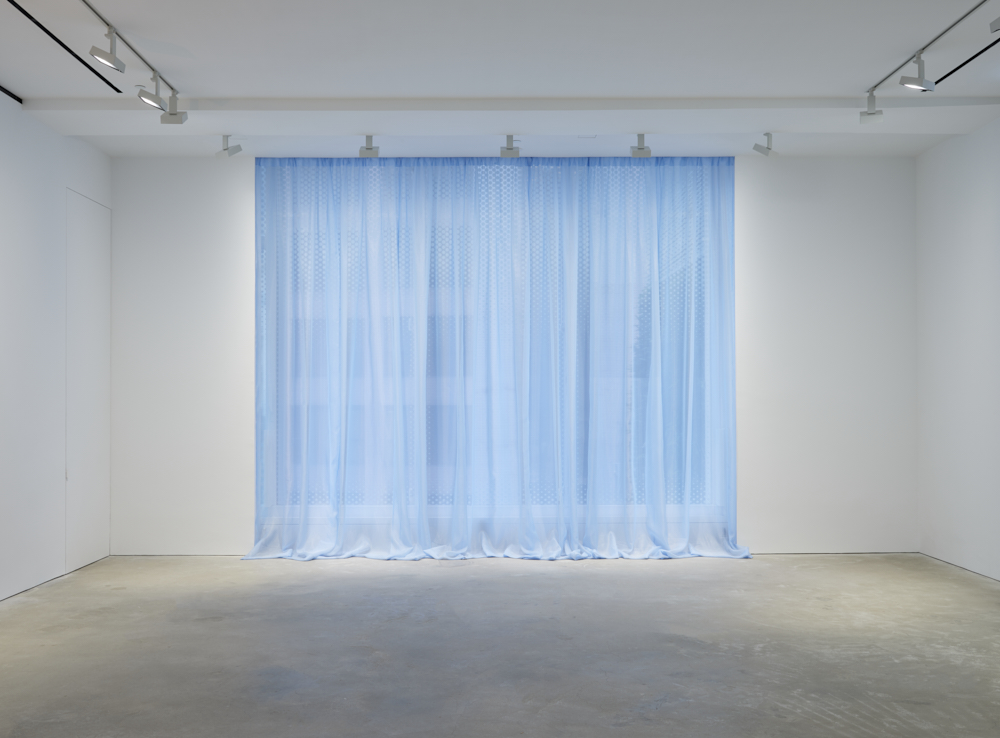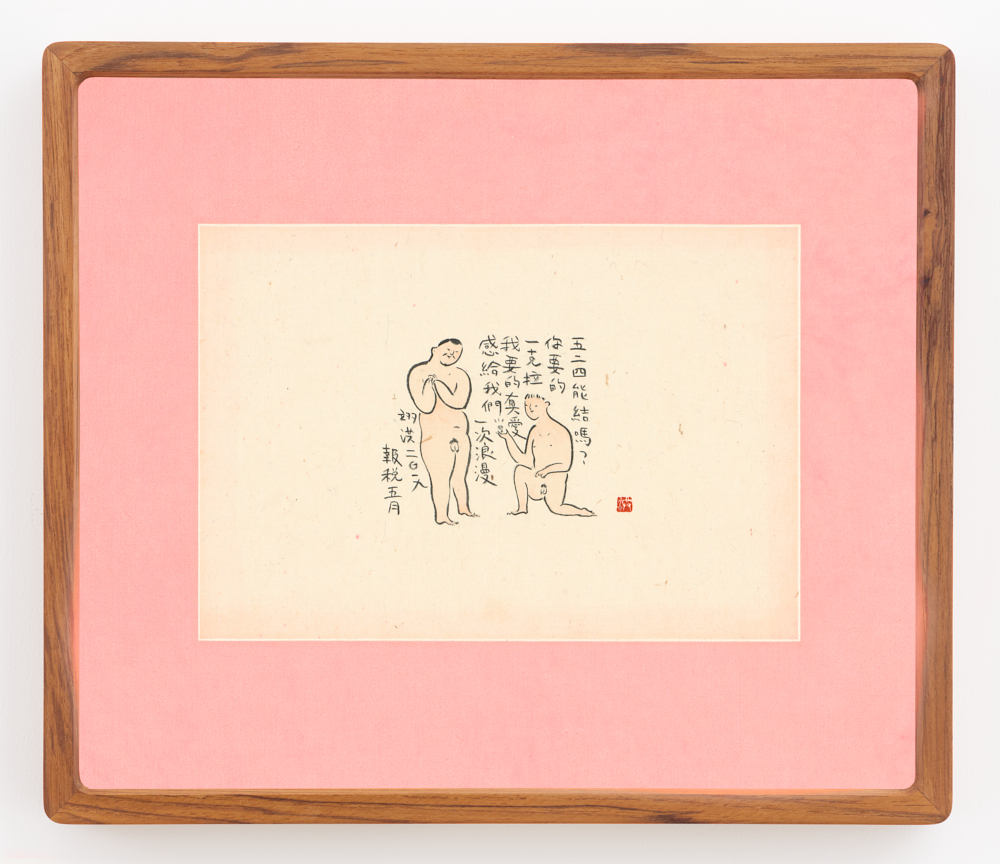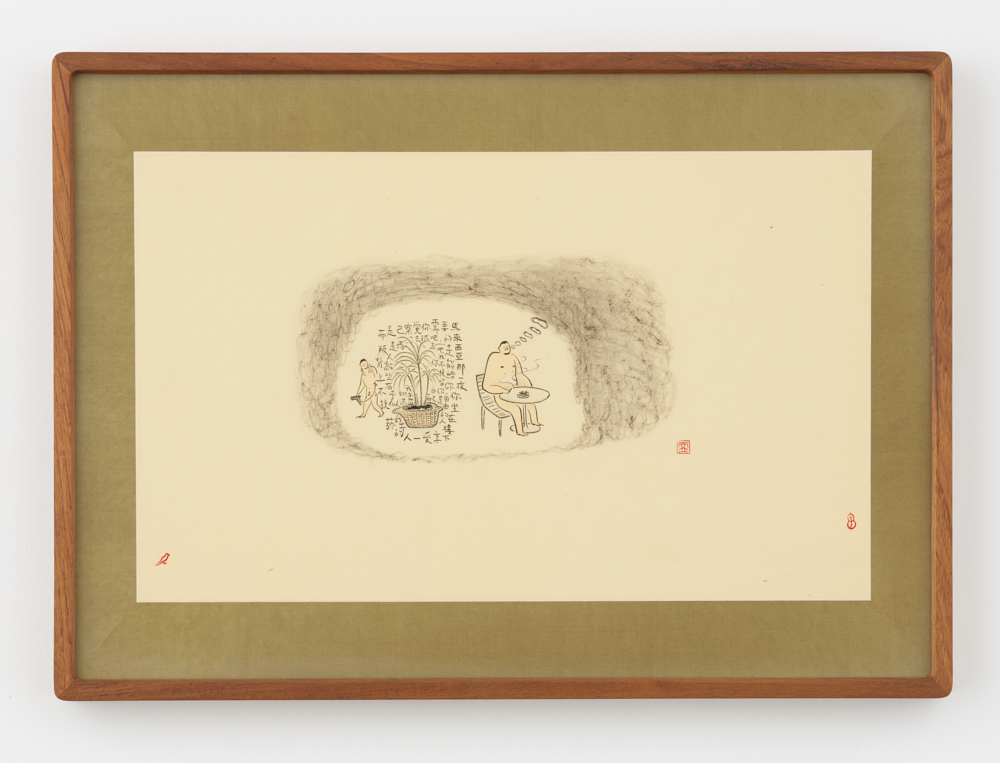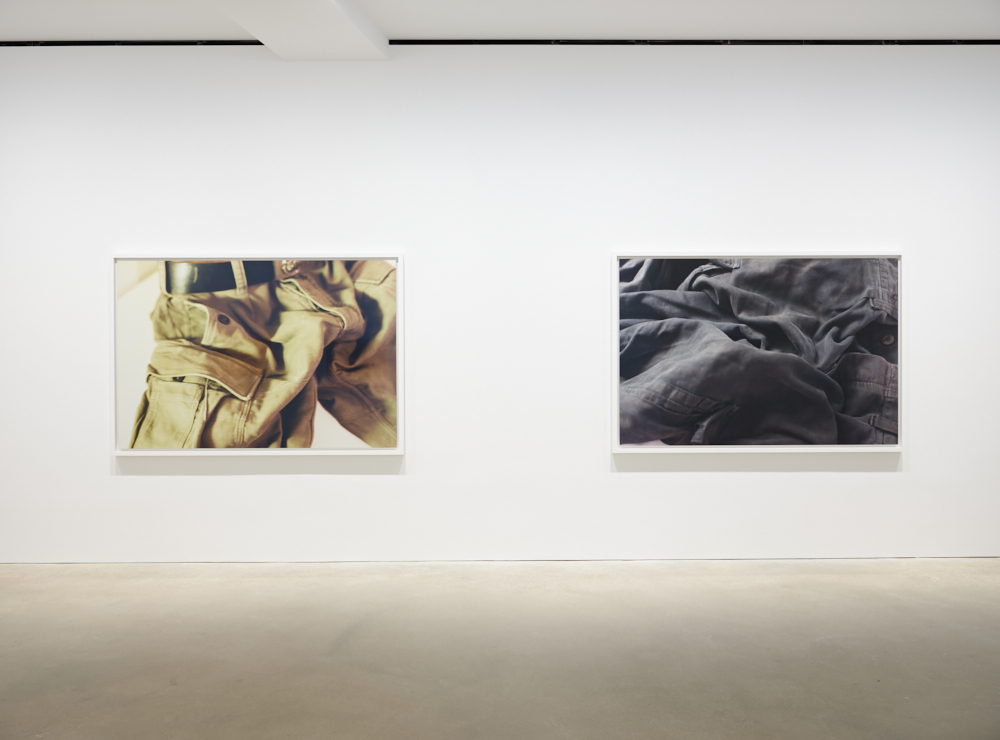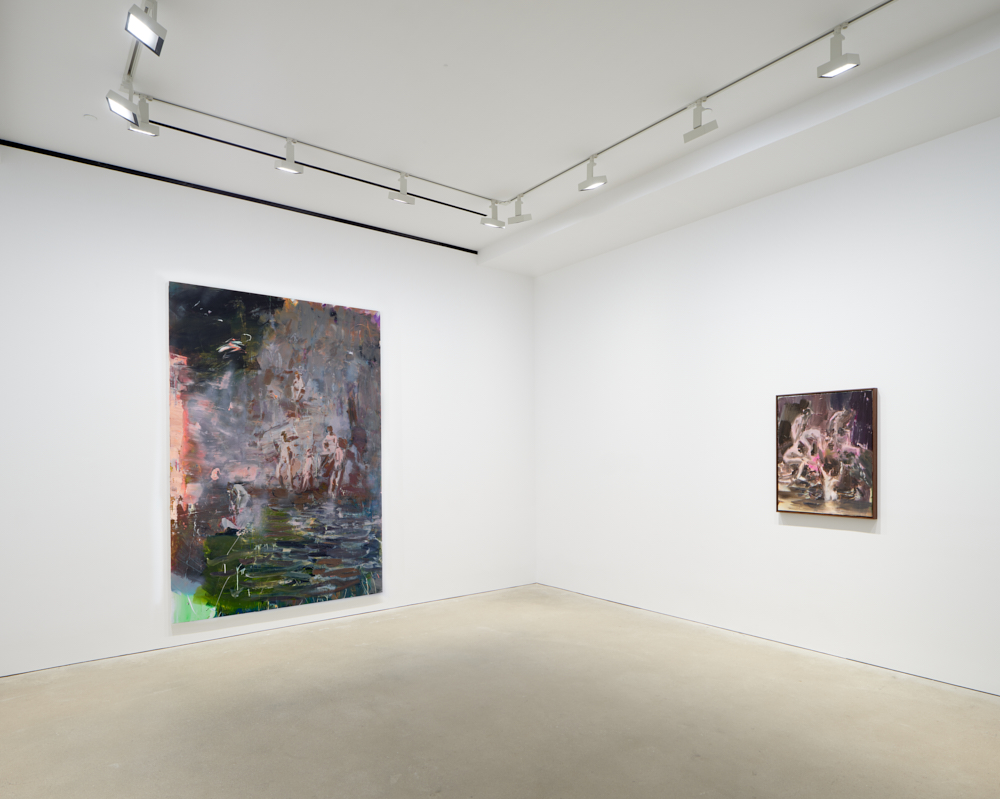House Party 2 follows up Dane Johnson’s House Party exhibition from 2017, wherein in the course of a few short days he activated the whole of a condemned house in Silver Lake with floor-to-ceiling interlocking figurative installations made from wood and painted in bold primary colors. House Party 2 will expand on the first show, presenting a series of paintings and sculptures depicting various forms of human interaction, connected by functional pieces which change the viewer’s relationship to the work. The emotional temperature of the figures and their interplay remains warm, their intersections supportive and loving, and essentially chaste. Bodies stretch out in mutual support, hold hands, share ledges, and walk in unison. Sculptural paintings are pieced together to create stages, platforms, ledges, and curtains that frame the actions of the figures: walking, talking, embracing, kissing. The scenes depicted in the works are amplified and connected by an array of functional pieces installed within the gallery space. Benches, stairs, and platforms lead the viewer to rest, climb, and stand while regarding the work, sometimes mirroring the poses in nearby pieces. House Party 2, read against the backdrop of contemporary social tension and general unease, and seasoned with the simplicity of its figuration, operates like a primer on the foundational postures of human kindness and cooperation. House Party 2 is on view through August 31 at Charlie James Gallery 969 Chung King Road, Los Angeles. photographs by Lani Trock
Judith Supine Presents "MANLBDRO: The Cowboy Series" @ Muddguts in New York
Throughout the Cowboy series, Judith Supine uses one of the most iconic and impactful brand images of the past century: Marlboro Man advertisements from the 1960s and 1970s that symbolize a heroic desire for adventures to the unknown, valor and daring independence. Supine breaks the barrier of gender norms and social constructs by twisting the archetypal narrative and cultural context of the connotations likely associated with the cowboy and interjects his own personal associations with gender and sexuality. Re-writing the age-old narrative to include one where balance, nurture, environment and intimacy are at the forefront of inclusivity.
MANLBDRO: The Cowboy Series is on view through August, Saturday-Sunday 12pm-8pm or by appointment at Muddguts 427 Graham Ave, Brooklyn, NY 11211. photographs by Brian Karlsson
Desert Painters of Australia Part II @ Gagosian Beverly Hills
Gagosian presents a sequel to the critically acclaimed Desert Painters of Australia, again drawing from the distinguished collection of Steve Martin and Anne Stringfield. This is the first time that the work of Indigenous Australian artists are being shown in Los Angeles since Icons of the Desert at UCLA’s Fowler Museum in 2009.
Evolving out of ancestral rituals of mark making practiced for many thousands of years, such as tree carving, body painting, and sand drawing, painting on canvas is a fairly recent phenomenon for remotely based Indigenous Australians, linked to the forced displacement in the late 1960s of communities such as the Pintupi, Luritja, Warlpiri, and Arrernte peoples to the Papunya settlement in the Northern Territory. This social upheaval inadvertently created a resilient hub of artistic production: out of communal work on canvas, wall, and ground emerged the movement now referred to as Western Desert painting.
Desert Painters of Australia Part II is on view through September 6 at Gagosian 456 North Camden Drive, Beverly Hills, CA 90210. photographs courtesy of Gagosian
Devil In The Flesh, When Op Art Electrified The Film World @ MAMAC In Nice, France
In the early 1960s, kinetic art established itself in Europe with a double principle: destabilising perception and democratising art. Optical illusion paintings, reliefs with light and motion, and disorientating environments shake perception. Christened “Op Art” in 1964, this avant-garde art was met with resoundingly popularity and success, so much so that it was commandeered in entirely new ways. While the advertising agencies, designers and major fashion house seized its intoxicating shapes, cinema gave Op Art an unexpected angle. An art of movement and of light, it was both a predecessor, able to sublimate its visual games, and a follower, which seeks to plunder it through its desire for modernity. From dramas to thrillers, filmmakers and decorators drew a language and themes from it, producing a whole range of “re-uses” in the scenery and the plot – scenes of hoaxes and dread, sadistic characters or zany improvisers, but also extreme experiences: scenes of hallucination, psychosis.
Exhibition immersed the visitor in this passionate story between two arts, punctuated by mockery and misunderstanding, reciprocal sublimation, pop or baroque manifestations as well as collaborations and plagiarism. Through nearly 30 films, 150 works and documents, it explored the origin and the taboos of this predatory fascination, and considers what cinema revealed to Op Art of its own nature. In such, it released the spirit of a decade ruffled by modernity, thirsting for emancipation and haunted by the ghosts of the war. This era, full of contradictions, created a completely new aesthetic culminating in the fruitful friction between the visual arts and the cinema. Devil in the flesh, When Op Art electrified the film world is on view through September 29 at MAMAC 1 Place Yves Klein, Nice. photographs courtesy of MAMAC
Lizzi Bougatsos + Kim Gordon x Penny Slinger @ Blum & Poe In Los Angeles
Lizzi Bougatsos and Kim Gordon perform sonic improvisation to the projections of artist Penny Slinger's early experimental silent films from 1969. After returning from a Gang Gang Dance Japan tour last winter, Bougatsos found herself emerged in the films of Jane Arden, Niki de Saint Phalle, and Penny Slinger, part of an experimental feminist film series curated by Alison Gingeras and Nicoletta Beyer at the Anthology Film Archives. She began writing text while watching the Slinger films in the theater, and thereafter asked her friend Kim Gordon to perform a sonic reaction. The two artists improvised to the films teetering on the elemental, surreal, metaphysical, and distinctly feminine raw poetry of the sublime unconscious -- an almost Artaudian parallel for the unconscious leadings of the nature of improvisation in art and life, shared in the three practices of Bougatsos, Gordon, and Slinger. photographs by Julia Nicoletti
Pre-Order Autre's Eighth Issue Featuring The Pope Of Trash Himself, John Waters →
"I did masturbate to Elvis the first time. But I didn’t know what it was. It was like a new thing for me." – John Waters.
Introducing Autre’s 8th issue – a little late for Summer, but timely nonetheless – featuring the inimitable Pope Of Trash himself, JOHN WATERS, in conversation with LA-based artist and musician SETH BOGART. At 10 pages, 3,500 words and portraits by Bennet Perez on the beach in Provincetown, it’s the filthiest and most entertaining interview we have ever published. Click here to pre-order.
Group Show : A Cloth Over a Birdcage @ Chateau Shatto In Los Angeles
In 1974, American poet John Ashbery composed a long form ekphrastic lyric occasioned by the painting, Self-Portrait in a Convex Mirror, by the minor late Renaissance master, Parmigianino. The original circular composition was meticulously rendered in 1524 on a convex panel whose diameter measured no more than 24.4cm, or just shy of ten inches. With its extravagantly curved perspectives, this remains a virtuosic feat of the medium made more so by being performed on such a tightly delimited stage.
It was for this reason that Ashbery found therein not an enigma but a pearl – a concise distillation of the plight of the artist whose hand is distorted by the world even as he, in turn, seeks to distort it by capturing its reflection. It is a chiasmic conundrum with the inward pull of a compact atomic core.
In its totality, Ashbery’s words would come to encompass a surface-area that far exceeds Parmigianino’s diminutive masterwork. Through that medallion-like portal he enters into expansive ruminations that span questions of memory, pathos and empathy all the while outlining a sweetly abbreviated ontology. As he writes:
But it is life englobed.
One would like to stick one’s hand
Out of the globe, but its dimension,
What carries it, will not allow it.
The artists in Château Shatto’s forthcoming exhibition share Ashbery and Parmiagianino’s affinity for revelations in miniature guises. Their output ranges from the modestly scaled to the truly petite and they embrace this limitation for their own idiosyncratic reasons. Some uncover respite from the heroic demands of the monumental; others an opportunity to work through ideas and impulses to be articulated later in a distended tableau. Some find purpose in offering peeks of private inner worlds or are galvanized by the economy of restrained abstraction; while others still harness the gravitational pull of locket-size images which are almost devotional in their allure. Whatever their instinct, they craft ‘superficial but visible cores’ that propose an entirely different type of viewing. Arresting in their potency, these works demand an embodied and sustained perusal that, at its best, draws the viewer in slowly and deliberately not unlike thread through a needle’s eye. A Cloth Over a Birdcage is on view through September 7 at Chateau Shatto 1206 S. Maple Ave, Suite 1030, Los Angeles. photographs courtesy of the gallery
Takuro Tamayama & Tiger Tateishi @ Nonaka-Hill In Los Angeles
At the gallery entrance, Takuro Tamayama’s monochrome yellow new video “Dance”, 2019 is played on a small monitor. A red curtain leads to Tamayama’s transformation of the gallery’s largest space into a colored light saturated immersive experience, entitled “Eclipse Dance”, 2019. A cluster of tables forms a new plateau and divides the atmosphere’s light, red above and blue below. A rotating marble form, evocative of a human, is positioned in relation to another form, evocative of a celestial body. In the adjacent spaces, visitors encounter Tamayama’s Eclipse, a new large-scale video projection, with sound composed by the artist. In a third space, Tamayama’s spinning sculpture and clustered confronts Tateishi’s Rotating Fuji (1991), and a fourth room, painted yellow, displays Tateishi’s prints dating from 1973-1981.
The exhibition is on view through August 31 720 N. Highland Ave., Los Angeles. photographs courtesy of Nonaka-Hill
Judith Supine: Manlbdro: The Cowboy Series @ Muddguts in New York
Judith Supine’s latest solo show at Muddguts called, Manlbdro: The Cowboy Series features all new works by the artist. Throughout the Cowboy series, Supine uses iconic Marlboro Man advertisements from the 1960s and 1970s that symbolize a heroic desire for adventures of the unknown, valor, and daring independence. Supine breaks the barrier of gender norms and social constructs by twisting the archetypal narrative and cultural context of the cowboy figure, and interjects his own personal associations with gender and sexuality. Re-writing the age-old narrative to include one where balance, nurture, environment and intimacy are at the forefront of inclusivity, the Cowboy series is a continuation of the artists pursuit of placing art between the worlds of abstraction and representation.
Judith Supine: Manlbdro: The Cowboy Series is on view through August 25 at Muddguts 247 Graham Avenue Brooklyn, NY. photographs courtesy of the artist and Muddguts
Twenty Five Years: A Group Exhibition @ Peter Blake Gallery in Laguna Beach
The Peter Blake Gallery in Laguna Beach, California commemorates its twenty-fifth year with an exhibition of historic and recent West Coast Abstraction. Since 1993, Blake’s faithfulness to his creative vision has allowed him to champion West Coast Minimalist works from the sixties through today. Now the longest-running gallery exhibiting West Coast Minimalism to date, Peter has been a champion for the artists assembled into this category for the past twenty-five years. As these artists’ esteemed works have come under the spotlight on the global stage, the gallery’s anniversary offers a fitting occasion to revisit these historic works in a local setting. The exhibition brings together a presentation of works by Lita Albuquerque, Peter Alexander, Larry Bell, Billy Al Bengston, Ron Cooper, Mary Corse, Tony Delap, Laddie John Dill, Joe Goode, James Hayward, Scot Heywood, Craig Kauffman, John McCracken, John M. Miller, Marcia Hafif, Ron Nagle, Helen Pashgian, Hadi Tabatabai, and De Wain Valentine to celebrate the gallery’s milestone anniversary.
“Twenty Five Years” is on view through August at Peter Blake Gallery 435 Ocean Avenue Laguna Beach, CA. photographs courtesy of the artists and Peter Blake Gallery
Margot Bergman: Family Album @ Anton Kern Gallery in New York
For the artist’s second solo exhibition with Anton Kern Gallery, Margot Bergman presents Family Album, which includes her most recent paintings and photographs. Bergman has sustained an active painting practice in Chicago since the 1950s and honed a peerless style of figuration. For the last 15 years her subject matter has focused on individual faces of imagined people, predominantly women. Her style is characterized by active expressionistic brush work, unconcerned with symmetry, realistic proportions, and traditional notions of femininity. The artist can adeptly shift styles within a single composition, juxtaposing photorealistic eyes and lips, with a scribbly green hair-do, and a thin wash of color for the complexion. Accompanying Bergman’s paintings are theatrical and lively photographs that bear an uncanny resemblance to her painted works. Together Bergman’s paintings and photographs create a manufactured family album that memorializes the environment in which they were created and their palpable relationship with the artist.
Family Album is on view through August 16 at Anton Kern Gallery 16 East 55th Street New York, NY. photographs courtesy of the artist and Anton Kern Gallery
André Butzer @ Metro Pictures in New York
A exhibition of nine large, vibrant new paintings by artist André Butzer is now on view at Metro Pictures. Butzer’s latest paintings employ vivid color and his signature figures bringing to mind motifs and approaches that predate the stark abstraction and distinctive brushwork of his N-Bilder, begun in 2010. However, Butzer asserts that everything he does is unified by an exploration of color and that this new series is a natural continuation of his work. This exhibition continues Butzer’s longstanding investigation into the medium of painting, while pushing the limits of his oeuvre, and furthers the ideas explored throughout his career from art history to consumer culture.
André Butzer is on view through August 9 at Metro Pictures 519 West 24th Street New York, NY. photographs courtesy of the artist and Metro Pictures, New York
Diedrick Brackens Presents "Darling Divined" @ New Museum In New York
Diedrick Brackens constructs intricately woven textiles that speak to the complexities of black and queer identity in the United States. Interlacing diverse traditions, including West African weaving, European tapestries, and quilting from the American south, Brackens creates cosmographic abstractions and figurative narratives that lyrically merge lived experience, commemoration, and allegory. He uses both commercial dyes and unconventional colorants such as wine, tea, and bleach, and foregrounds the loaded symbolism of materials like cotton, with its links to the transatlantic slave trade.
Darling Divined is on view through September 15 at the New Museum 235 Bowery, New York. photographs courtesy of the gallery
Lubaina Himid: Work from Underneath @ The New Museum in New York
Turner Prize–winning British artist Lubaina Himid is debuting an entirely new body of work for her first solo museum exhibition in the United States. Himid has long championed marginalized histories as a pioneer of the British Black Arts Movement of the 1980s and ’90s. Her drawings, paintings, sculptures, and textile works critique the consequences of colonialism and question the invisibility of people of color in art and the media. While larger historical narratives are often the driving force behind her images and installations, the artist’s works beckon viewers to pay attention to the unmonumental details of daily life. Bright, graphic, and rich in color and symbolic referents, Himid’s images recall history paintings and eighteenth-century British satirical cartoons.
“Work from Underneath” is on view through October 6 at the New Museum 235 Bowery New York, NY. photographs courtesy of The New Museum
Oliver Beer: Vessel Orchestra @ The Met in New York
“Vessel Orchestra” is the first sound-based installation commissioned by The Met. The exhibition includes a musical instrument, a series of live performances, and an installation composed of thirty-two sculptures, utilitarian vessels, and decorative objects selected by Beer from the museum’s collection. Chosen for their natural pitches, which range from low C to high G on the chromatic musical scale, the vessels form an arresting and unexpectedly versatile instrument, comparable to an organ with multiple pipes. During museum hours, a pre-programmed audio interface will play a new composition written by Beer, activating the vessels to play in real time. On Friday evenings, the exhibition features a diverse group of guest artists who perform new compositions and improvisations on this radical musical instrument.
“Vessel Orchestra” is on view through August 11 at The Met Breuer 945 Madison Ave, New York, NY. photographs courtesy of The Metropolitan Museum of Art
The Hugo Boss Prize 2018: Simone Leigh, Loophole of Retreat @ the Guggenheim in New York
Over the course of her career, Simone Leigh (b. 1967, Chicago) has continuously and insistently centered the black female experience. In Loophole of Retreat, an exhibition presented on the occasion of Leigh winning the 2018 Hugo Boss Prize, she layers form, sound, and text to fashion narratives of resilience and resistance. The project’s title is drawn from the writings of Harriet Jacobs, a formerly enslaved abolitionist who in 1861 published an account of her struggle to achieve freedom, including the seven years she spent hiding from her master in a tiny crawl space beneath the rafters of her grandmother’s home. This act of defiant fortitude, which forged a “loophole of retreat” from an unjust reality, serves as a touchstone for Leigh’s long-standing commitment to honoring the agency of black women and their power to inhabit worlds of their own creation.
The Hugo Boss Prize 2018: Simone Leigh, Loophole of Retreat is on view through October 27 at Solomon R. Guggenheim Museum 1071 5th Ave, New York, NY 10128. photographs courtesy of the artist and the Solomon R. Guggenheim Foundation
Mika Rottenberg Presents "Easy Pieces" @ The New Museum In New York
Employing absurdist satire to address the critical issues of our time, Rottenberg creates videos and installations that offer subversive allegories for contemporary life. Her works interweave documentary elements and fiction, and often feature protagonists who work in factory-like settings to manufacture goods ranging from cultured pearls (NoNoseKnows, 2015) to the millions of brightly colored plastic wholesale items sold in Chinese superstores (Cosmic Generator, 2017). The exhibition presents several of her recent video installations and kinetic sculptures, and premieres a new video installation, Spaghetti Blockchain (2019), that explores ancient and new ideas about materialism and considers how humans both comprise and manipulate matter. Together, the works in the exhibition trace central themes in Rottenberg’s oeuvre, including labor, technology, distance, energy, and the interconnectedness of the mechanical and the corporeal. Easy Pieces is on view through September 15 at the New Museum 235 Bowery, New York. photographs courtesy of the gallery
Annka Kultys Gallery Presents Quid est veritas? Group Exhibition in London
Quid est veritas?, a multi-generational group exhibition exploring the concept of philosophical truth, is now on view at Annka Kultys Gallery. Through works by AES+F, Morehshin Allahyari, Imre Bak, crocodilePOWER, Simon Denny, Eva and Franco Mattes, Joseph Kosuth, Olia Lialina, Signe Pierce, Timur Si-Qin, and Theo Triantafyllidis, curator Anton Svyatsky scrutinizes the cognitive mechanisms by which humans operate the label of truth. The concept of truth has been and remains a central subject of philosophy, and yet its definition has proved elusive for thousands of years. In a time of universal deceit, propaganda, political truth-bending, and outright condemnation of truth, it becomes imperative to examine our relationship with it. With the dawning of the information age came unprecedented access to knowledge, and with that access, doubt has engulfed humanity. It can be said that doubt is the herald of enquiry and thus the harbinger of truth. Without doubt, no progress towards truth can be made. Each work in Quid est veritas? is intended as a provocation to self-examination, as well as invite the spectator to doubt their belief system by inquiring into their own process of belief formation.
Quid est veritas? is on view through August 3 at Annka Kultys Gallery 472 Hackney Road, London. photographs courtesy of the artists and Annka Kultys Gallery
Ed Moses & Qin Feng @ Blain|Southern in London
An exhibition featuring the work of Ed Moses and Qin Feng puts the two artists in a conversation across cultures through a shared artistic language. Ed Moses and Qin Feng make dynamic, gestural paintings influenced by both Eastern calligraphy and Western abstraction, yet each artist arrived at this common ground from different directions. Moses was one of the founding artists of the Ferus Gallery in Los Angeles, and over many decades he created one of the most diverse bodies of abstraction in late twentieth-century American art. As with many American artists of the post-war generation, especially on the West Coast, Moses was drawn to Buddhist thought, and he became a practitioner in the early 1970s. Qin Feng is one of the key figures of China’s avant-garde art movement and founder of MOCA Beijing. He has developed an expansive mode of painting deeply rooted in traditional Chinese calligraphy, although Western art has always been an important stimulus in his work. Qin Feng and the late Ed Moses share an interest in the relationship between the artist’s body and painterly gesture, and especially the effects of chance and spontaneity in the painting process.
Ed Moses & Qin Feng is on view through September 14 at Blain|Southern 4 Hanover Square, Mayfair, London W1S 1BP, UK. photographs courtesy of the artists and Blain|Southern
Singing the Body Electric: A Group Exhibition @ David Zwirner In Hong Kong
Singing the Body Electric features work by aaajiao, Philip-Lorca diCorcia, Felix Gonzalez-Torres, Jian Yi-Hong, Wolfgang Tillmans, Wei Jia, and Lisa Yuskavage. The show’s title is derived from Walt Whitman’s ecstatic and politically nuanced poem “I Sing the Body Electric” from Leaves of Grass (1855). The exhibition includes work from across various media that likewise celebrates and complicates themes of the body and desire, while exploring physicality and identity in the context of the synthetic and alienating nature of a highly digitized world. Singing the Body Electric is on view through August 10 at David Zwirner 80 Queen's Road Central, Hong Kong. photographs courtesy of the gallery


